Research Interests and Vision
Our research is interdisciplinary at the intersection of computational physics and chemistry, materials science, and computer science. Our focus is to understand materials properties using atomistic, mainly in the framework of Density Functional Theory (DFT), and multiscale models and, by inverse engineering, to accelerate the discovery of novel, more efficient materials for a sustainable future. Our research vision is to automate and accelerate the design of novel materials by developing high-throughput and workflows methodologies based on multiscale models bridged by Artificial Intelligence tools. We often collaborate with experimental colleagues to elucidate physico-chemical properties at the atomic and multiscale levels.
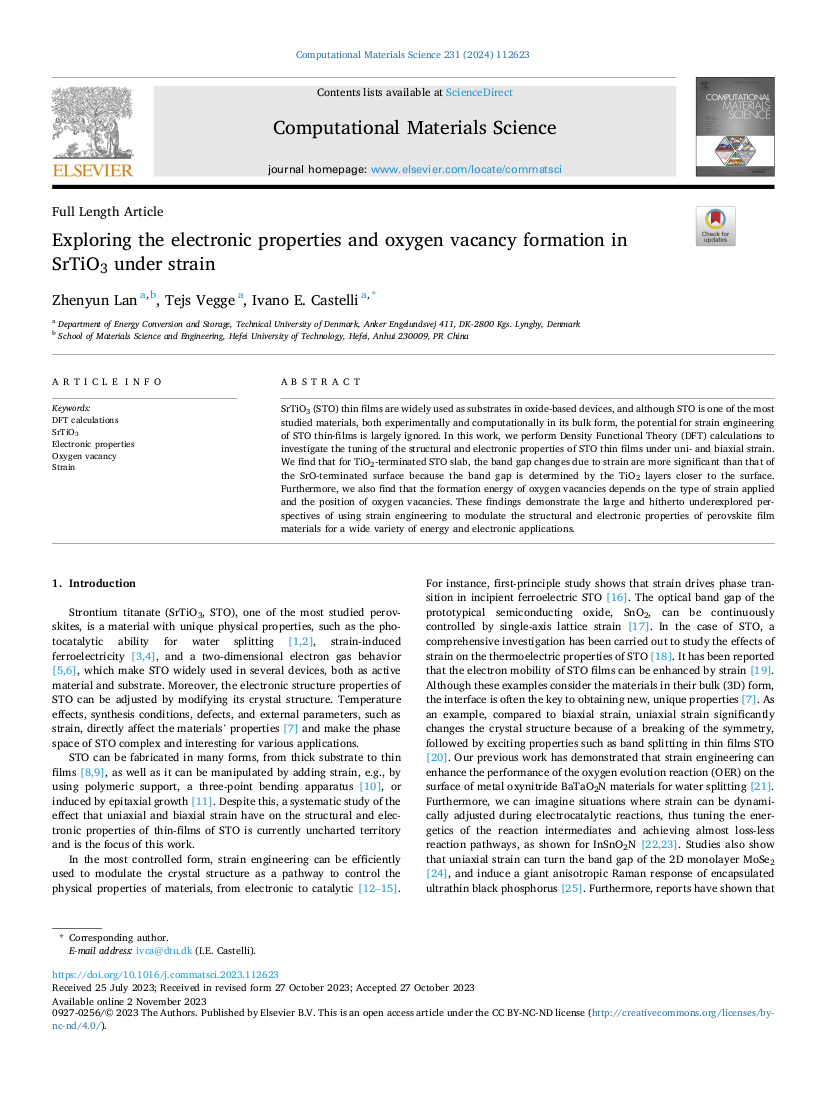 98. Exploring the Electronic Properties and Oxygen Vacancy Formation in SrTiO3 under Strain, Z. Lan, T. Vegge, and I. E. Castelli,Computational Materials Science 231, 112623 (2024).
98. Exploring the Electronic Properties and Oxygen Vacancy Formation in SrTiO3 under Strain, Z. Lan, T. Vegge, and I. E. Castelli,Computational Materials Science 231, 112623 (2024).
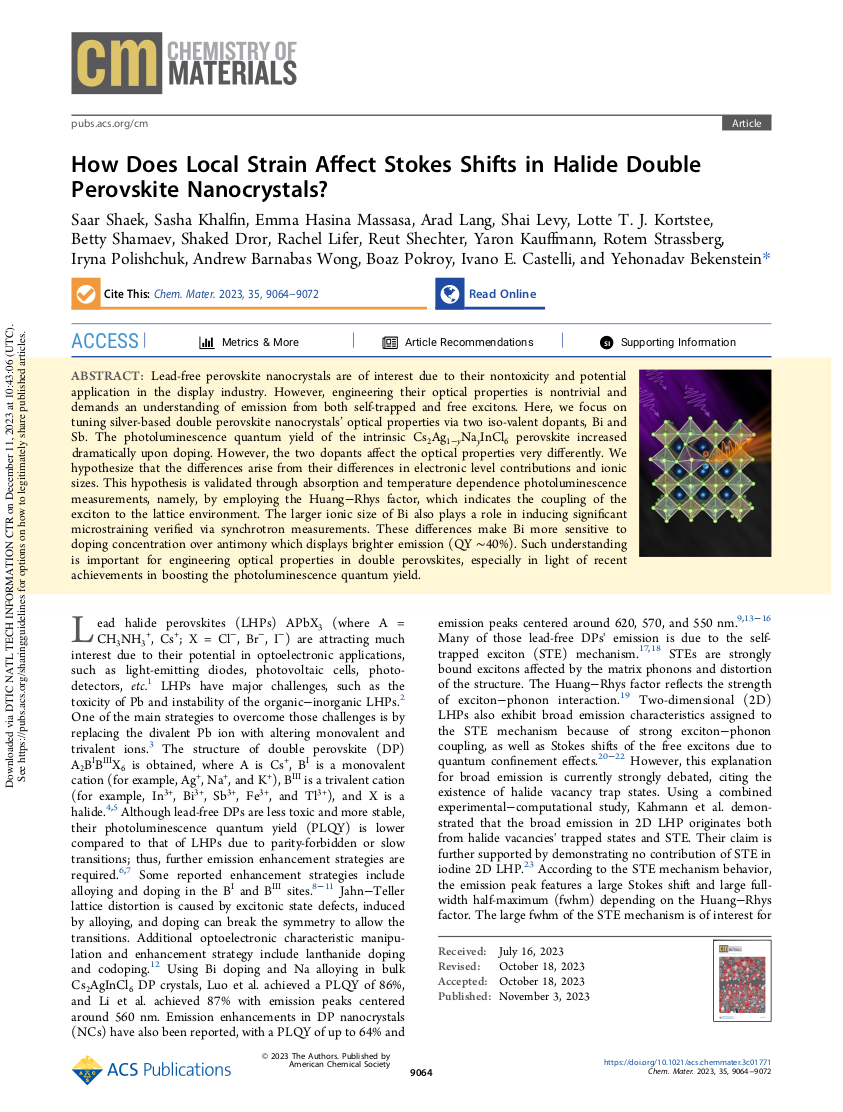 97. How Does Local Strain Affect Stokes Shifts in Halide Double Perovskite Nanocrystals?, S. Shaek, S. Khalfin, E. H. Massasa, A. Lang, S. Levy, L. T. J. Kortstee, B. Shamaev, S. Dror, R. Lifer, R. Shechter, Y. Kauffmann, R. Strassberg, I. Polishchuk, A. B. Wong, B. Pokroy, I. E. Castelli, and Y. Bekenstein, Chem. Mater. 35, 9064 (2023).
97. How Does Local Strain Affect Stokes Shifts in Halide Double Perovskite Nanocrystals?, S. Shaek, S. Khalfin, E. H. Massasa, A. Lang, S. Levy, L. T. J. Kortstee, B. Shamaev, S. Dror, R. Lifer, R. Shechter, Y. Kauffmann, R. Strassberg, I. Polishchuk, A. B. Wong, B. Pokroy, I. E. Castelli, and Y. Bekenstein, Chem. Mater. 35, 9064 (2023).
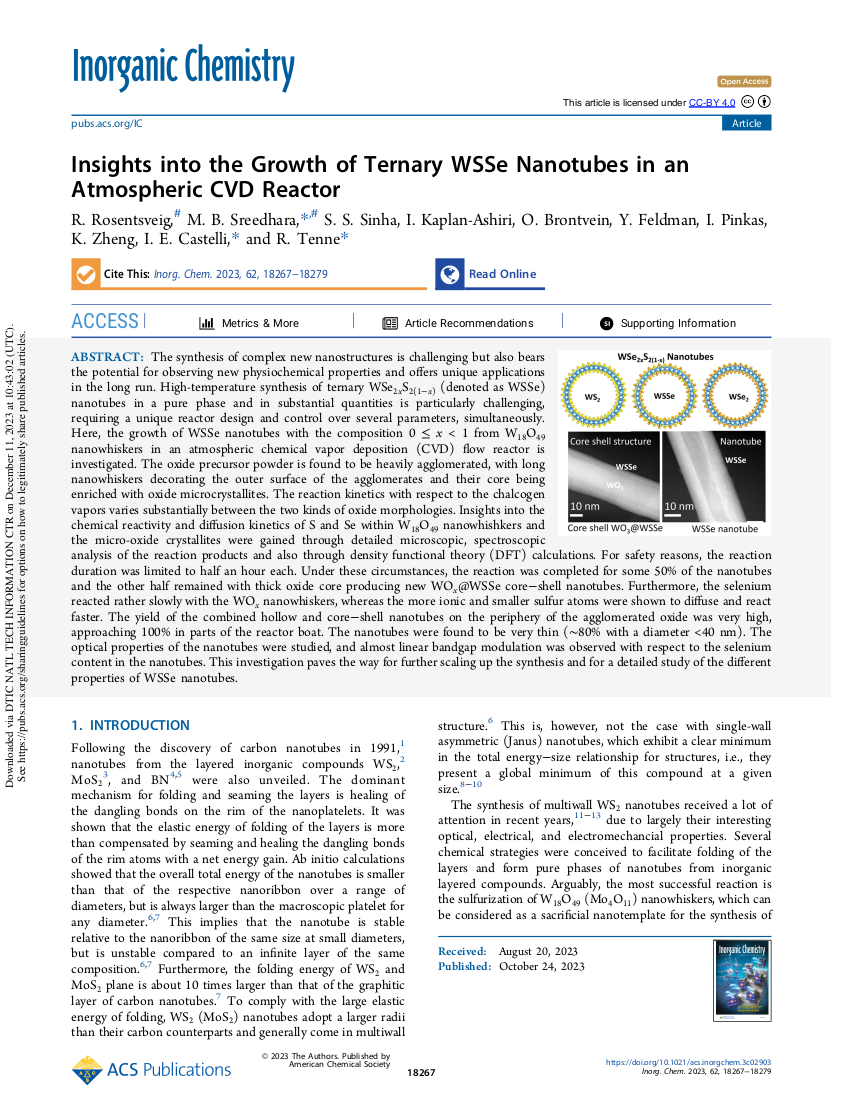 96. Insights into the Growth of Ternary WSSe Nanotubes in an Atmospheric CVD Reactor, R. Rosentsveig, M. B. Sreedhara, S. S. Sinha, I. Kaplan-Ashiri, O. Brontvein, Y. Feldman, I. Pinkas, K. Zheng, I. E. Castelli, and R. Tenne, Inorg. Chem. 62, 18267 (2023).
96. Insights into the Growth of Ternary WSSe Nanotubes in an Atmospheric CVD Reactor, R. Rosentsveig, M. B. Sreedhara, S. S. Sinha, I. Kaplan-Ashiri, O. Brontvein, Y. Feldman, I. Pinkas, K. Zheng, I. E. Castelli, and R. Tenne, Inorg. Chem. 62, 18267 (2023).
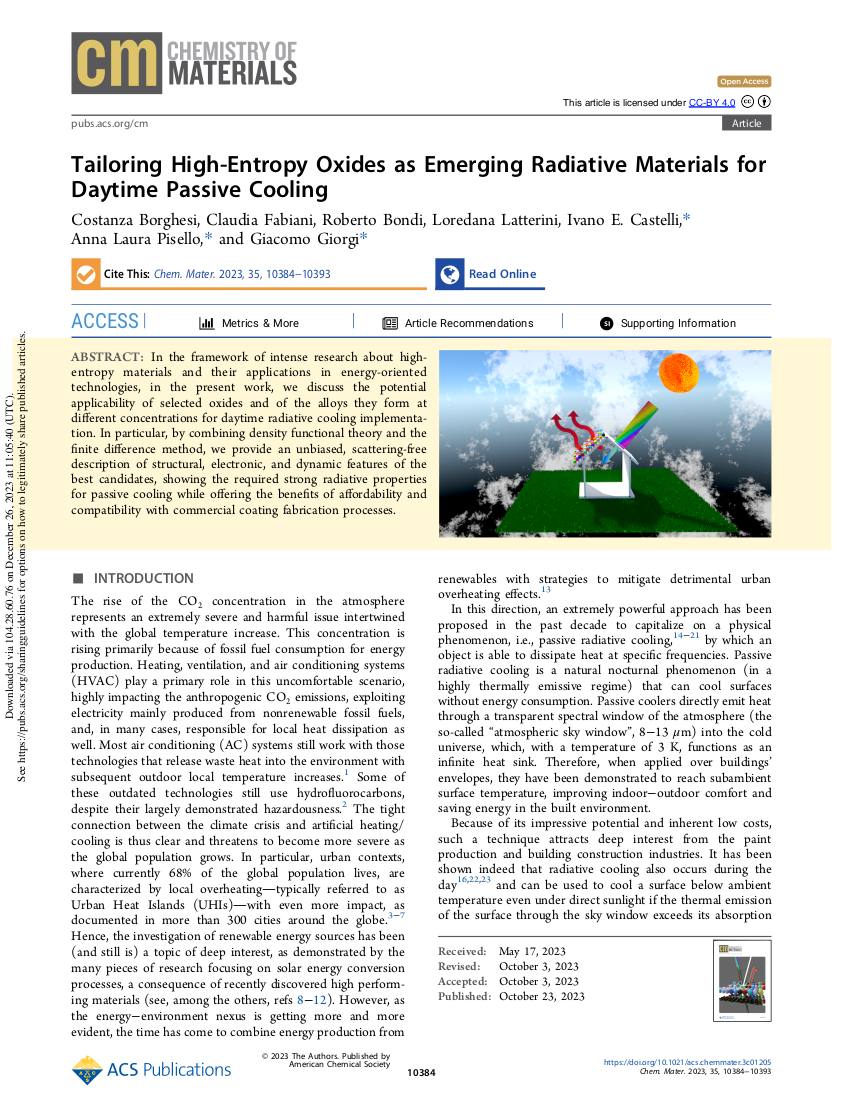 95. Tailoring High-Entropy Oxides as Emerging Radiative Materials for Daytime Passive Cooling, C. Borghesi, C. Fabiani, R. Bondi, L. Latterini, I. E. Castelli, A. L. Pisello, and G. Giorgi, Chem. Mater. 35, 10384 (2023).
95. Tailoring High-Entropy Oxides as Emerging Radiative Materials for Daytime Passive Cooling, C. Borghesi, C. Fabiani, R. Bondi, L. Latterini, I. E. Castelli, A. L. Pisello, and G. Giorgi, Chem. Mater. 35, 10384 (2023).
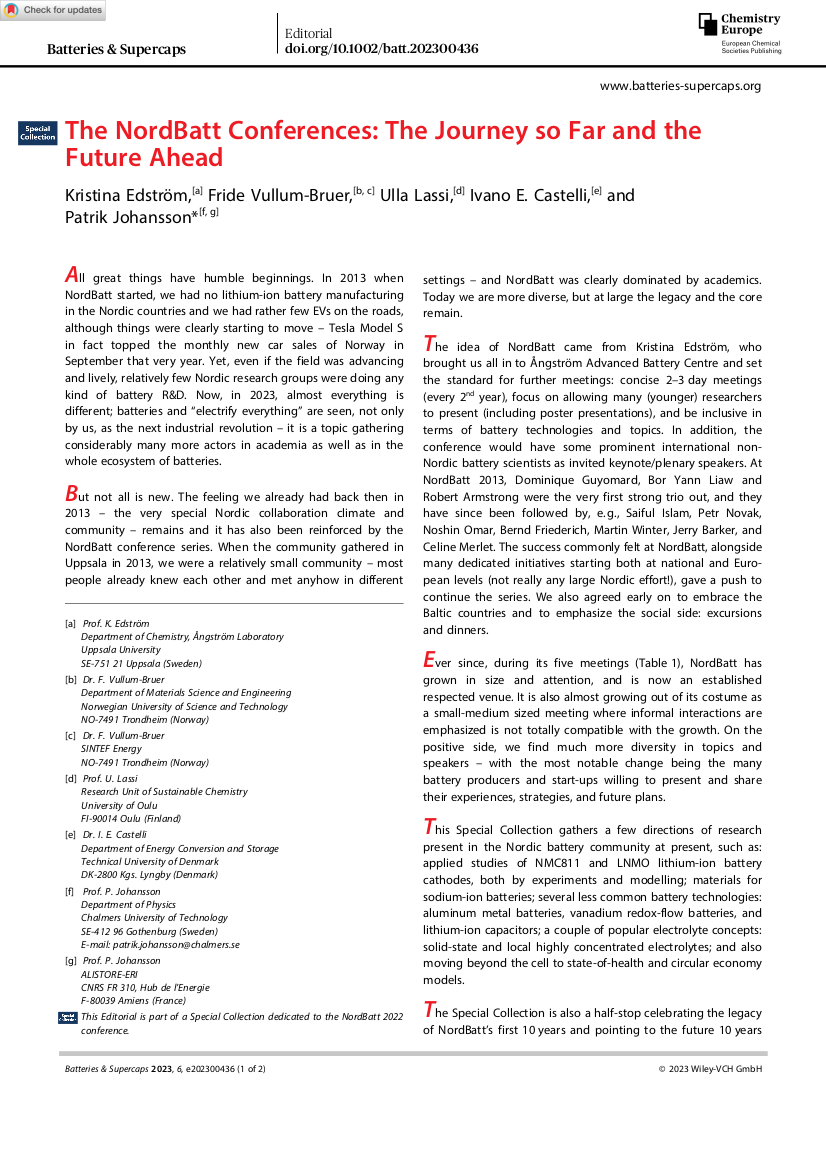 94. The NordBatt Conferences: The Journey so Far and the Future Ahead, K. Edström, F. Vullum-Bruer, U. Lassi, I. E. Castelli, and P. Johansson, Batteries & Supercaps 2023, e202300436 (2023).
94. The NordBatt Conferences: The Journey so Far and the Future Ahead, K. Edström, F. Vullum-Bruer, U. Lassi, I. E. Castelli, and P. Johansson, Batteries & Supercaps 2023, e202300436 (2023).
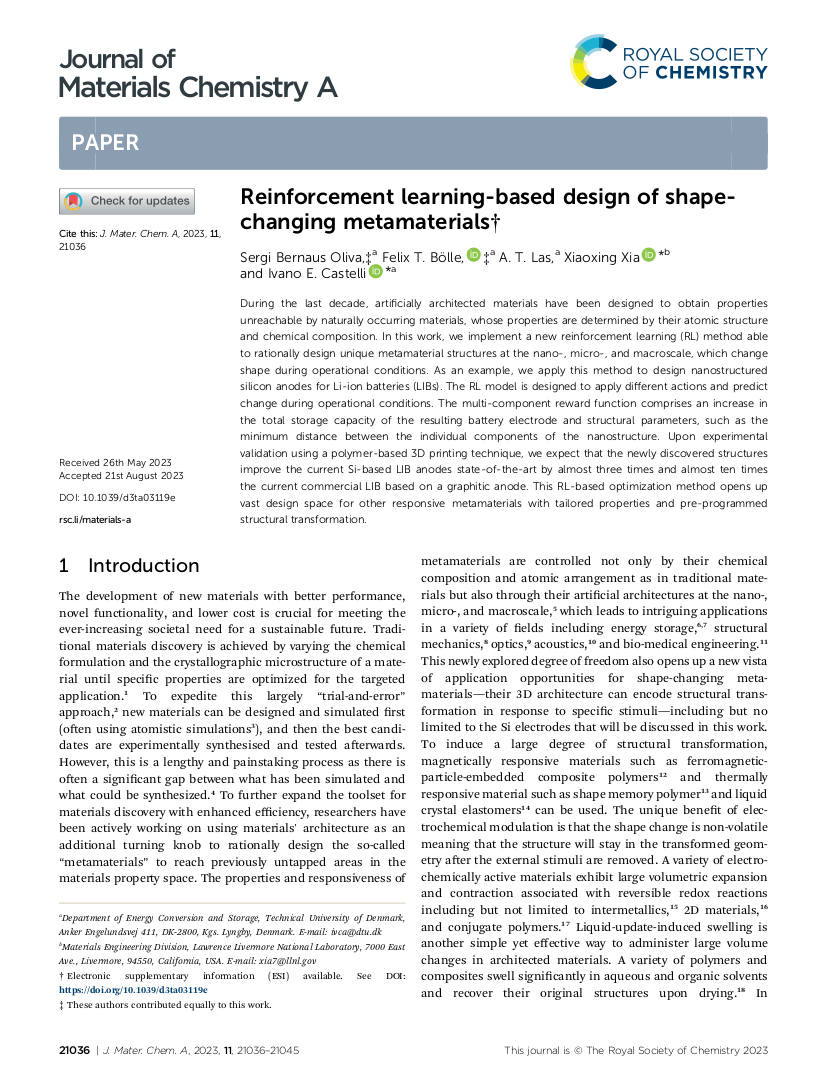 93. Reinforcement Learning-based Design of Shape-changing Metamaterials, S. B. Oliva, F. T. Bölle, X. Xia, and I. E. Castelli, J. Mater. Chem. A 11, 21036 (2023).
93. Reinforcement Learning-based Design of Shape-changing Metamaterials, S. B. Oliva, F. T. Bölle, X. Xia, and I. E. Castelli, J. Mater. Chem. A 11, 21036 (2023).
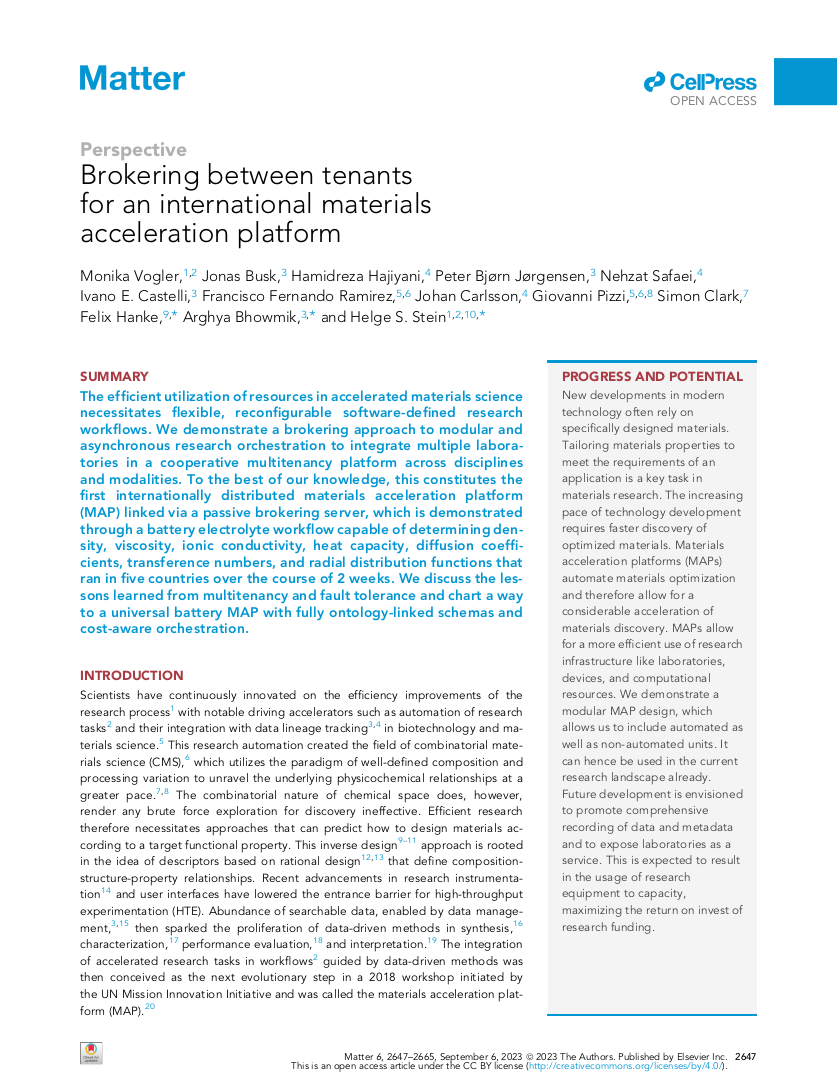 92. Brokering Between Tenants for an International Materials Acceleration Platform, M. Vogler, J. Busk, H. Hajiyani, P. B. Jørgensen, N. Safaei, I. E. Castelli, F. F. Ramirez, J. Carlsson, G. Pizzi, S. Clark, F. Hanke, A. Bhowmik, H. S. Stein, Matter 6, 2647 (2023).
92. Brokering Between Tenants for an International Materials Acceleration Platform, M. Vogler, J. Busk, H. Hajiyani, P. B. Jørgensen, N. Safaei, I. E. Castelli, F. F. Ramirez, J. Carlsson, G. Pizzi, S. Clark, F. Hanke, A. Bhowmik, H. S. Stein, Matter 6, 2647 (2023).
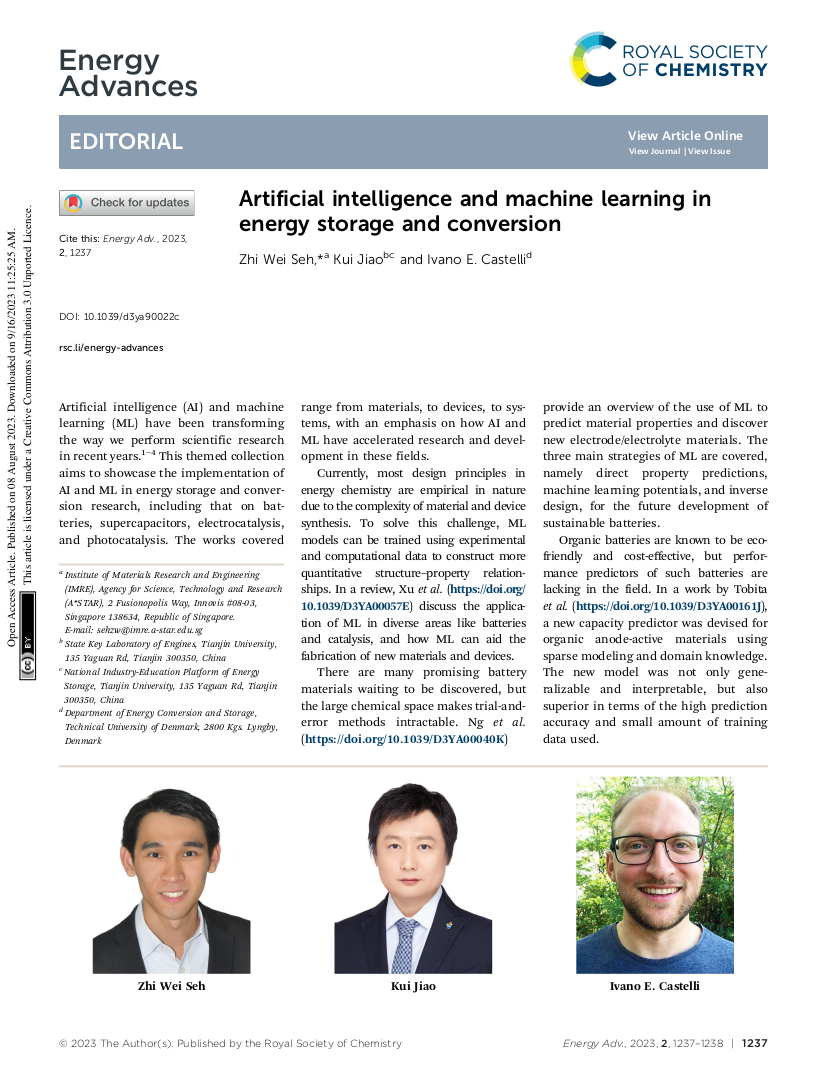 91. Artificial Intelligence and Machine Learning in Energy Storage and Conversion, Z. Wei Seh, K. Jiao, and I. E. Castelli, Energy Adv. 2, 1237 (2023).
91. Artificial Intelligence and Machine Learning in Energy Storage and Conversion, Z. Wei Seh, K. Jiao, and I. E. Castelli, Energy Adv. 2, 1237 (2023).
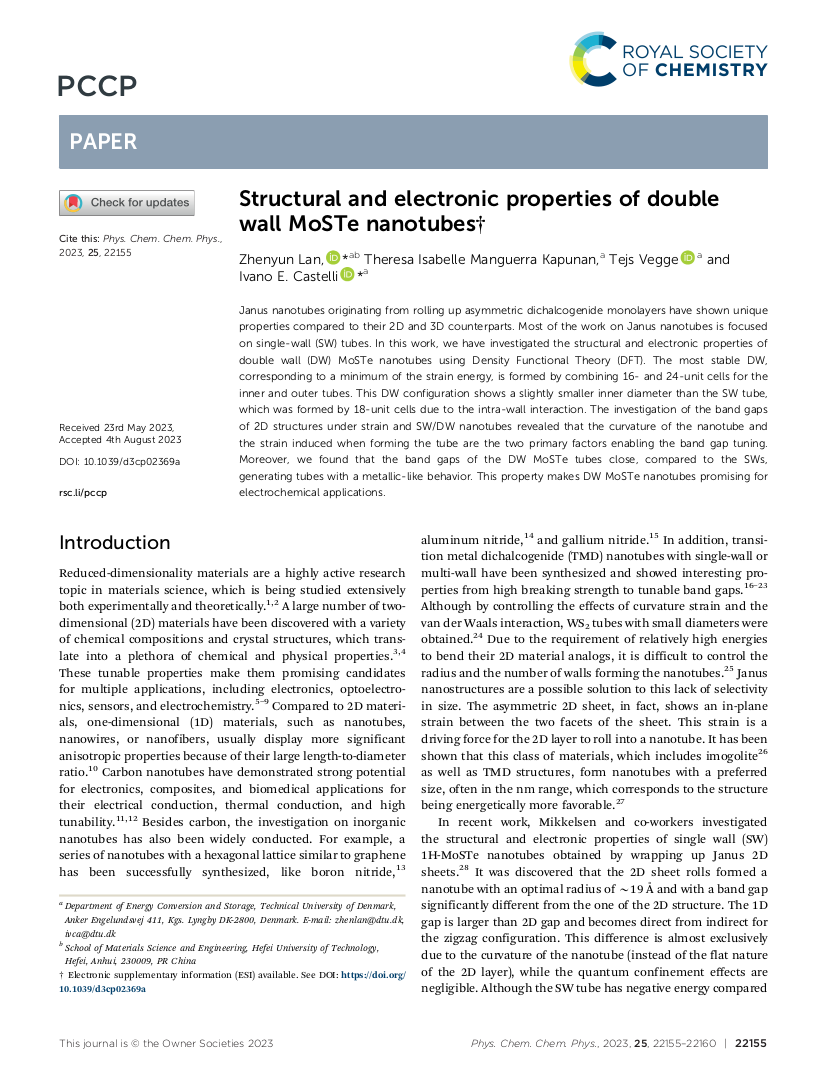 90. Structural and Electronic Properties of Double Wall MoSTe Nanotubes, Z. Lan, T. I. M. Kapunan, T. Vegge, and I. E. Castelli, Phys. Chem. Chem. Phys. 25, 22155 (2023).
90. Structural and Electronic Properties of Double Wall MoSTe Nanotubes, Z. Lan, T. I. M. Kapunan, T. Vegge, and I. E. Castelli, Phys. Chem. Chem. Phys. 25, 22155 (2023).
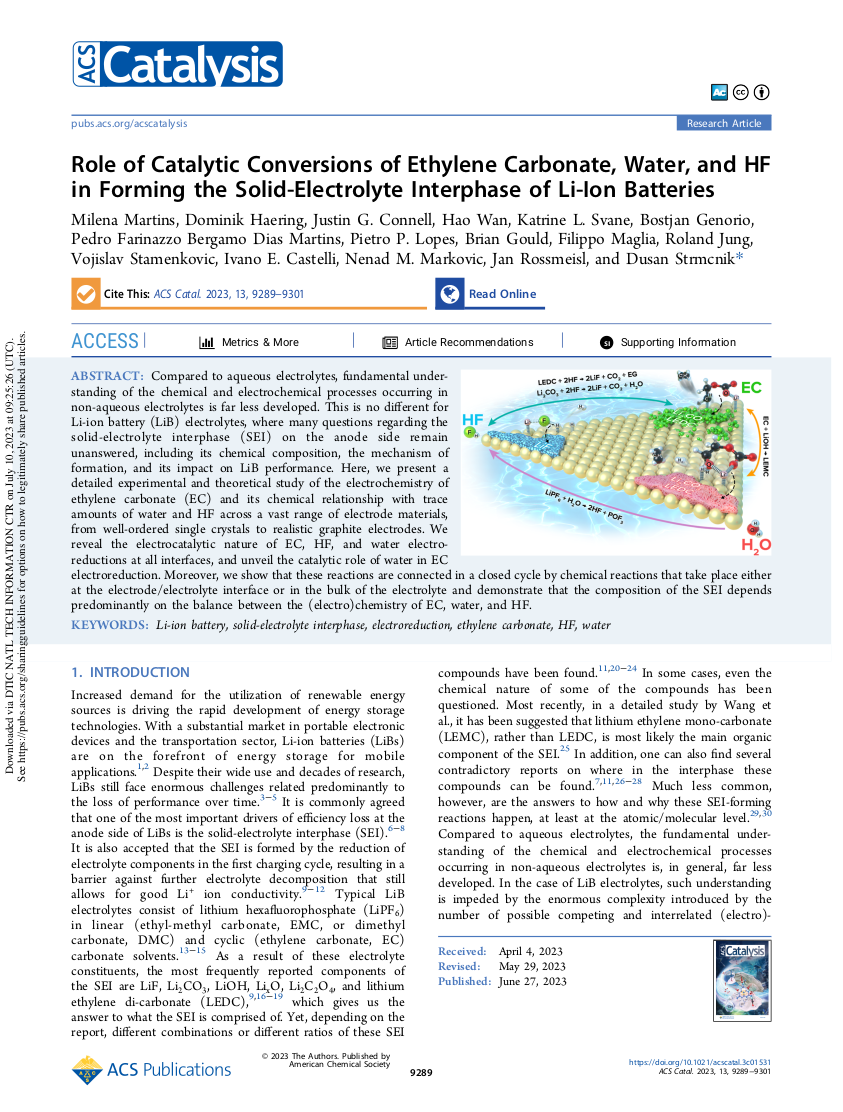 89. Role of Catalytic Conversions of Ethylene Carbonate, Water, and HF in Forming the Solid-Electrolyte Interphase of Li-Ion Batteries, M. Martins, D. Haering, J. G. Connell, H. Wan, K. L. Svane, B. Genorio, P. F. B. D. Martins, P. P. Lopes, B. Gould, F. Maglia, R. Jung, V. Stamenkovic, I. E. Castelli, N. M. Markovic, J. Rossmeisl, and D. Strmcnik, ACS Catal. 13, 9289 (2023).
89. Role of Catalytic Conversions of Ethylene Carbonate, Water, and HF in Forming the Solid-Electrolyte Interphase of Li-Ion Batteries, M. Martins, D. Haering, J. G. Connell, H. Wan, K. L. Svane, B. Genorio, P. F. B. D. Martins, P. P. Lopes, B. Gould, F. Maglia, R. Jung, V. Stamenkovic, I. E. Castelli, N. M. Markovic, J. Rossmeisl, and D. Strmcnik, ACS Catal. 13, 9289 (2023).
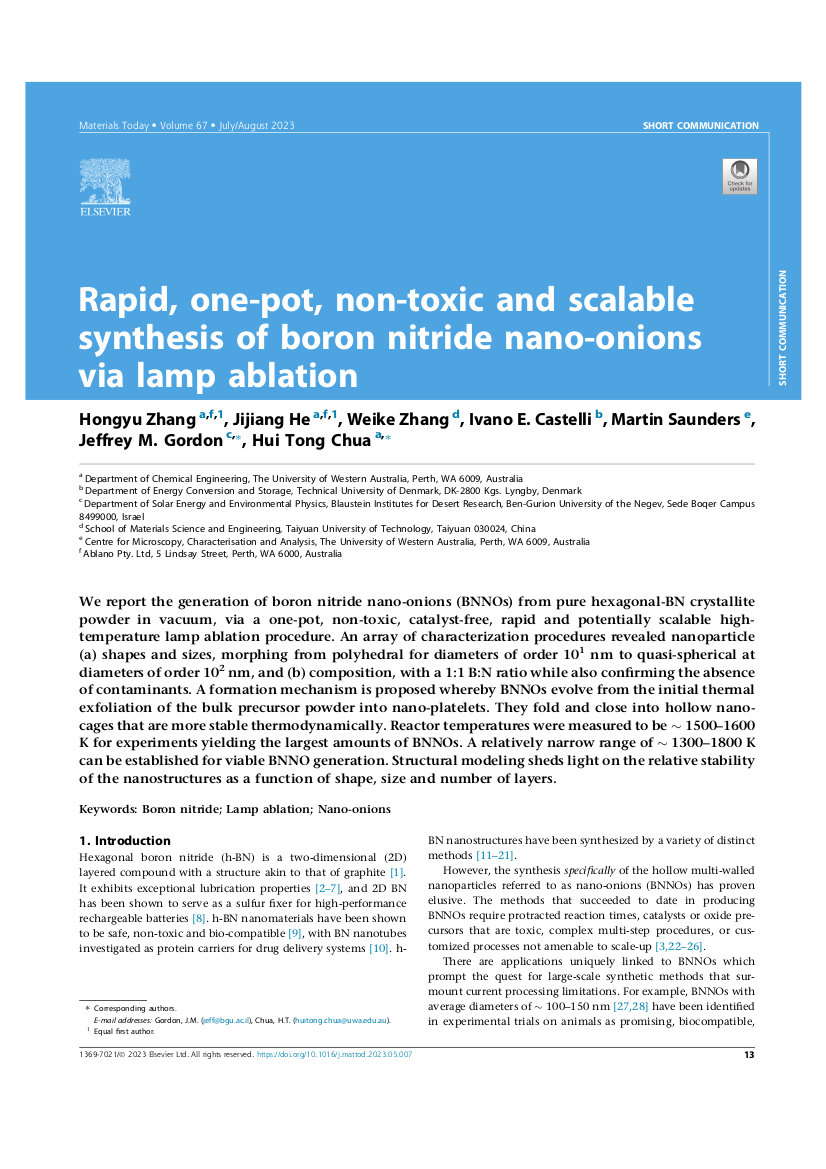 88. Rapid, One-pot, Non-toxic and Scalable Synthesis of Boron Nitride Nano-onions via Lamp Ablation, H. Zhang, J. He, W. Zhang, I. E. Castelli, M. Saunders, J. M. Gordon, and H. T. Chua, Materials Today 67, 13 (2023).
88. Rapid, One-pot, Non-toxic and Scalable Synthesis of Boron Nitride Nano-onions via Lamp Ablation, H. Zhang, J. He, W. Zhang, I. E. Castelli, M. Saunders, J. M. Gordon, and H. T. Chua, Materials Today 67, 13 (2023).
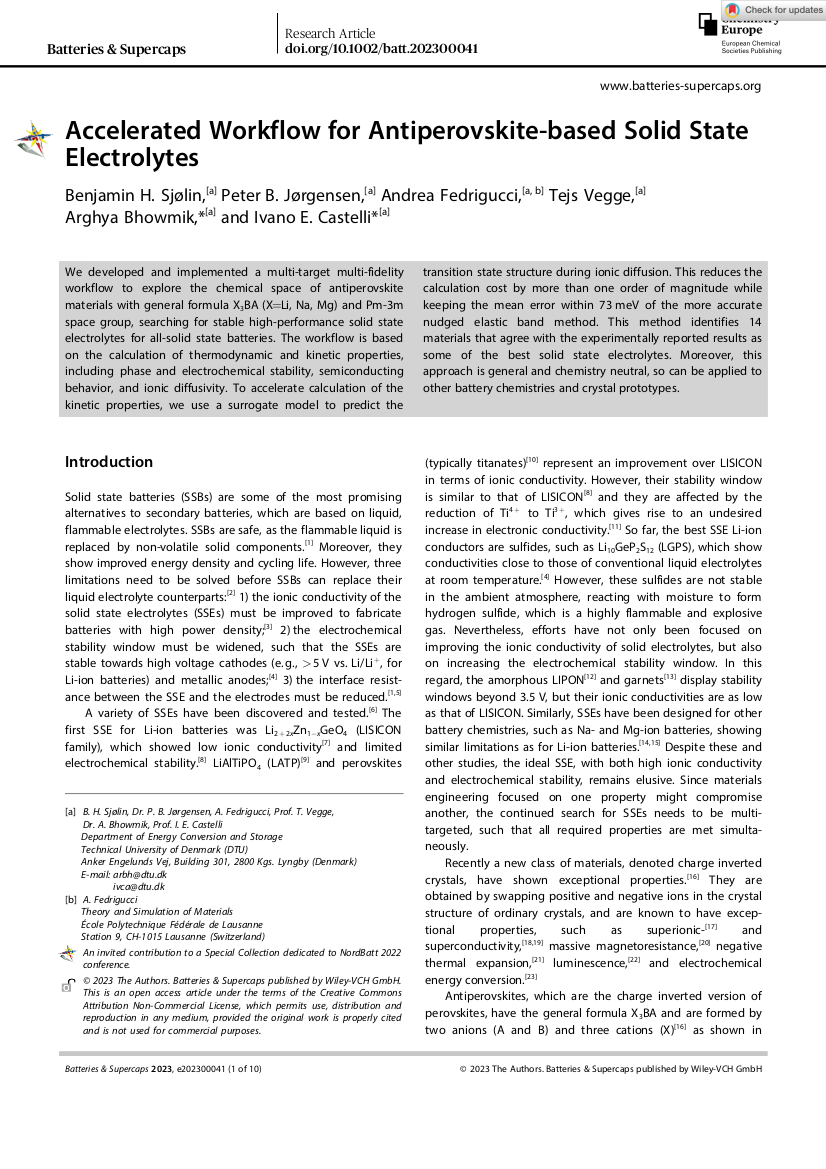 87. Accelerated Workflow for Antiperovskite-based Solid State Electrolytes, B. H. Sjølin, P. B. Jørgensen, A. Fedrigucci, T. Vegge, A. Bhowmik, I. E. Castelli, Batteries & Supercaps 2023, e202300041 (2023).
87. Accelerated Workflow for Antiperovskite-based Solid State Electrolytes, B. H. Sjølin, P. B. Jørgensen, A. Fedrigucci, T. Vegge, A. Bhowmik, I. E. Castelli, Batteries & Supercaps 2023, e202300041 (2023).
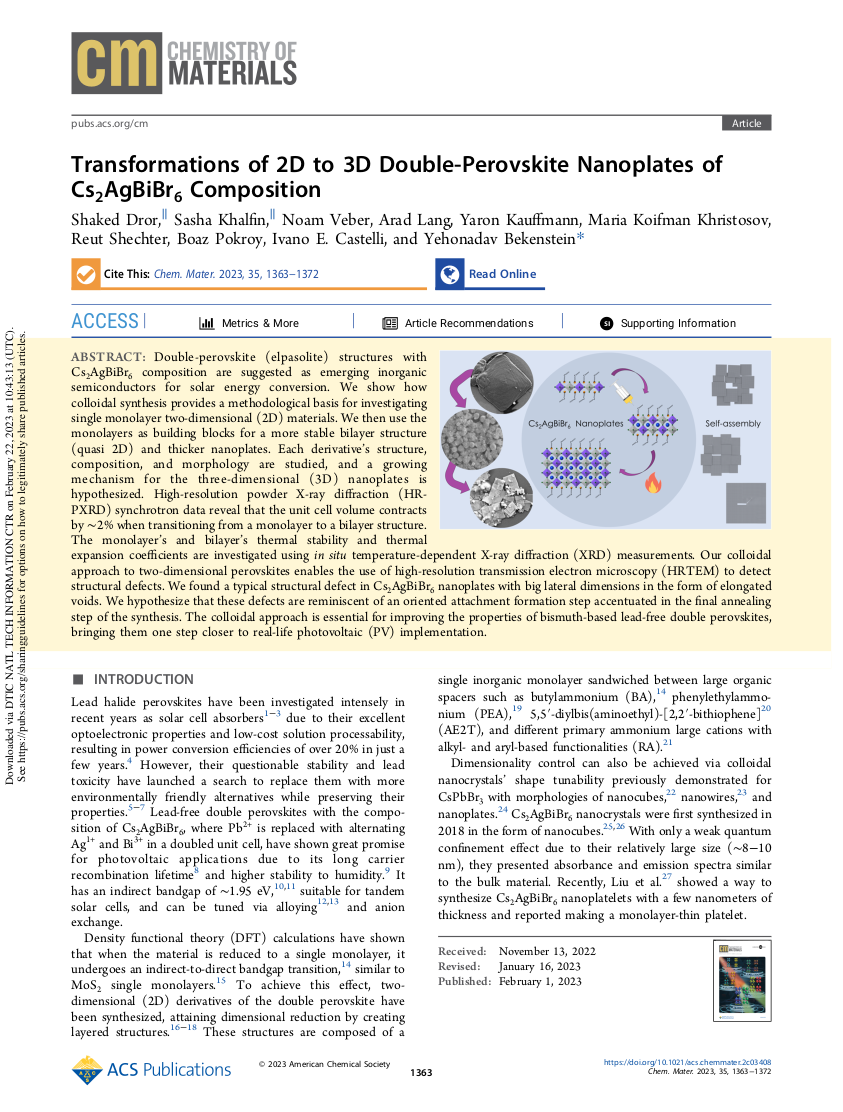 86. Transformations of 2D to 3D Double-Perovskite Nanoplates of Cs2AgBiBr6 Composition, S. Dror, S. Khalfin, N. Veber, A. Lang, Y. Kauffmann, M. K. Khristosov, R. Shechter, B. Pokroy, I. E. Castelli, and Y. Bekenstein, Chem. Mater. 35, 1363 (2023).
86. Transformations of 2D to 3D Double-Perovskite Nanoplates of Cs2AgBiBr6 Composition, S. Dror, S. Khalfin, N. Veber, A. Lang, Y. Kauffmann, M. K. Khristosov, R. Shechter, B. Pokroy, I. E. Castelli, and Y. Bekenstein, Chem. Mater. 35, 1363 (2023).
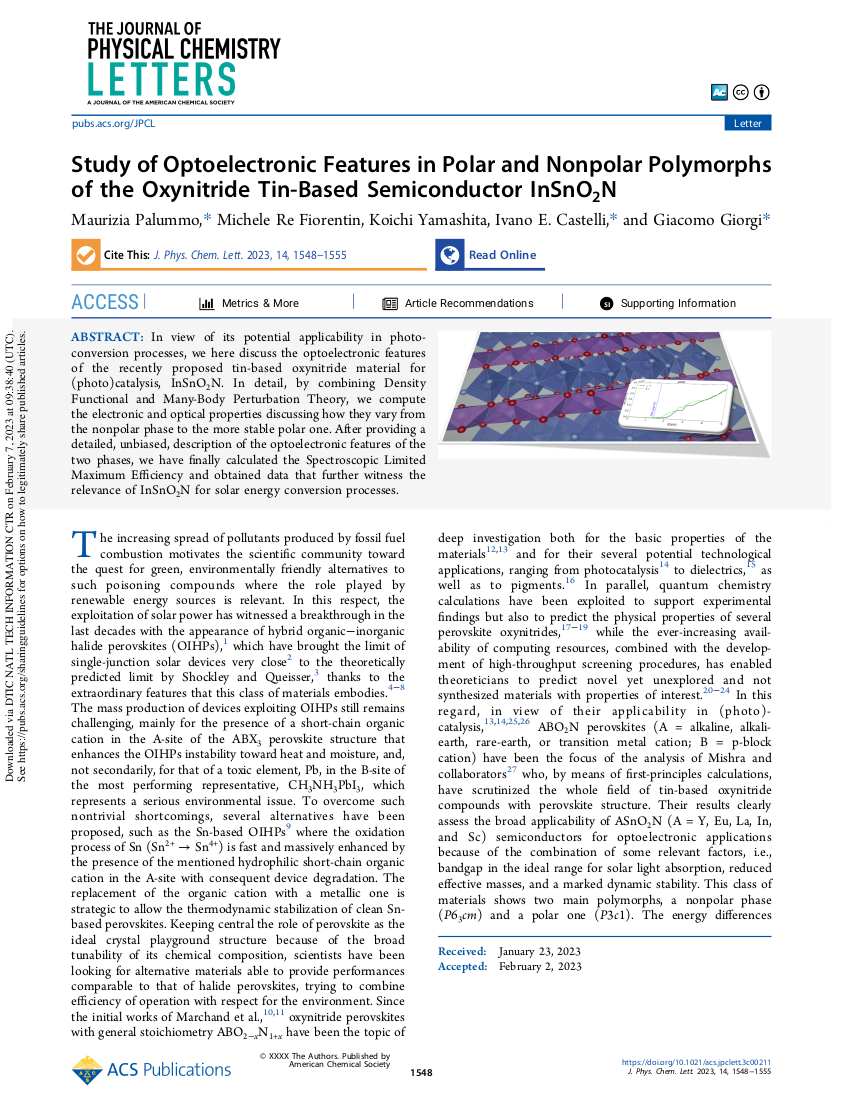 85. Study of Optoelectronic Features in Polar and Nonpolar Polymorphs of the Oxynitride Tin-Based Semiconductor InSnO2N, M. Palummo, M. R. Fiorentin, K. Yamashita, I. E. Castelli, and G. Giorgi, J. Phys. Chem. Lett. 14, 1548 (2023).
85. Study of Optoelectronic Features in Polar and Nonpolar Polymorphs of the Oxynitride Tin-Based Semiconductor InSnO2N, M. Palummo, M. R. Fiorentin, K. Yamashita, I. E. Castelli, and G. Giorgi, J. Phys. Chem. Lett. 14, 1548 (2023).
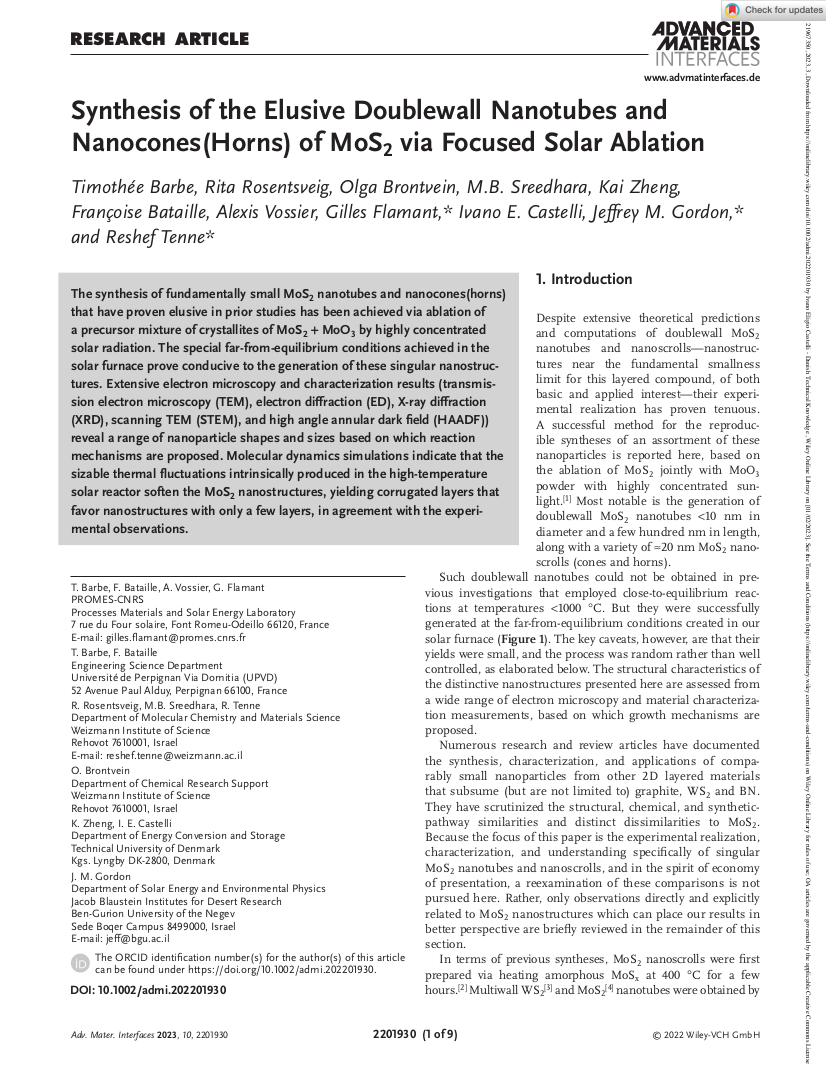 84. Synthesis of the Elusive Doublewall Nanotubes and Nanocones(Horns) of MoS2 via Focused Solar Ablation, T. Barbe, R. Rosentsveig, O. Brontvein, M. B. Sreedhara, K. Zheng, F. Bataille, A. Vossier, G. Flamant, I. E. Castelli, J. M. Gordon, and R. Tenne, Adv. Mater. Interfaces 2023, 2201930 (2023).
84. Synthesis of the Elusive Doublewall Nanotubes and Nanocones(Horns) of MoS2 via Focused Solar Ablation, T. Barbe, R. Rosentsveig, O. Brontvein, M. B. Sreedhara, K. Zheng, F. Bataille, A. Vossier, G. Flamant, I. E. Castelli, J. M. Gordon, and R. Tenne, Adv. Mater. Interfaces 2023, 2201930 (2023).
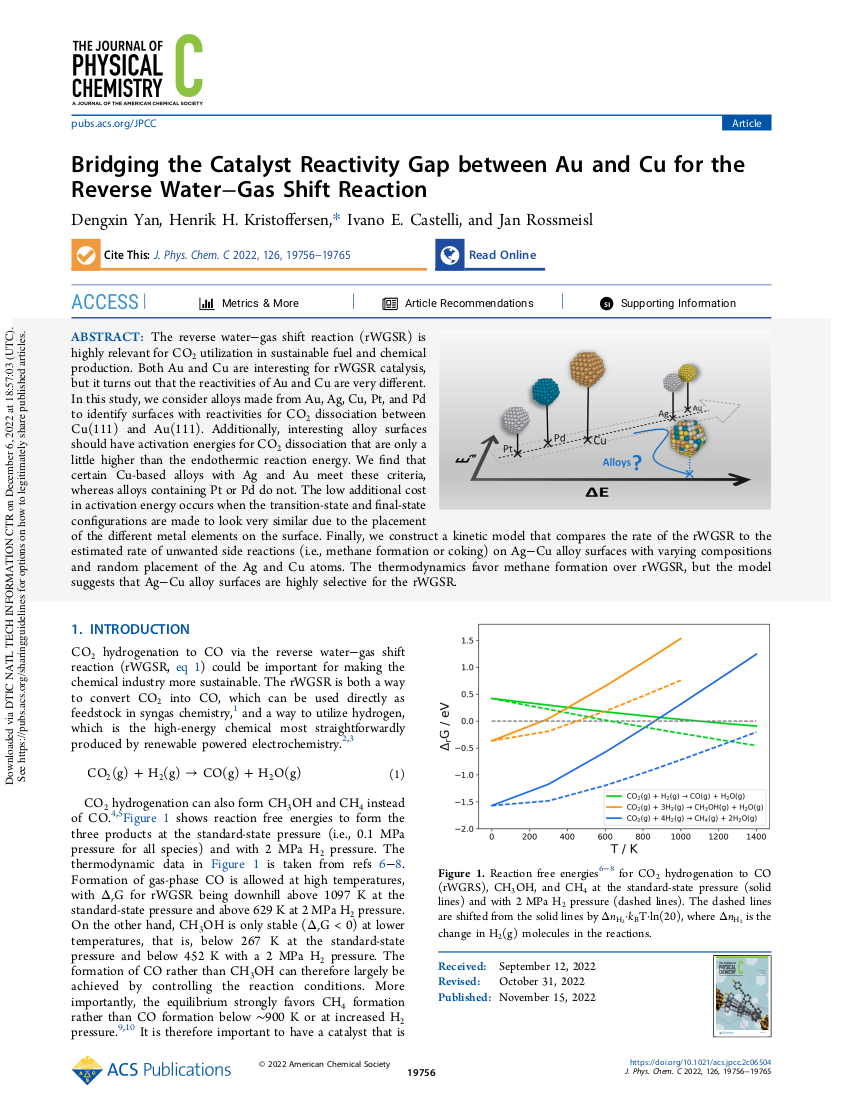 83. Bridging the Catalyst Reactivity Gap between Au and Cu for the Reverse Water-Gas Shift Reaction, D. Yan, H. H. Kristoffersen, I. E. Castelli, and J. Rossmeisl, J. Phys. Chem. C 126, 19756 (2022).
83. Bridging the Catalyst Reactivity Gap between Au and Cu for the Reverse Water-Gas Shift Reaction, D. Yan, H. H. Kristoffersen, I. E. Castelli, and J. Rossmeisl, J. Phys. Chem. C 126, 19756 (2022).
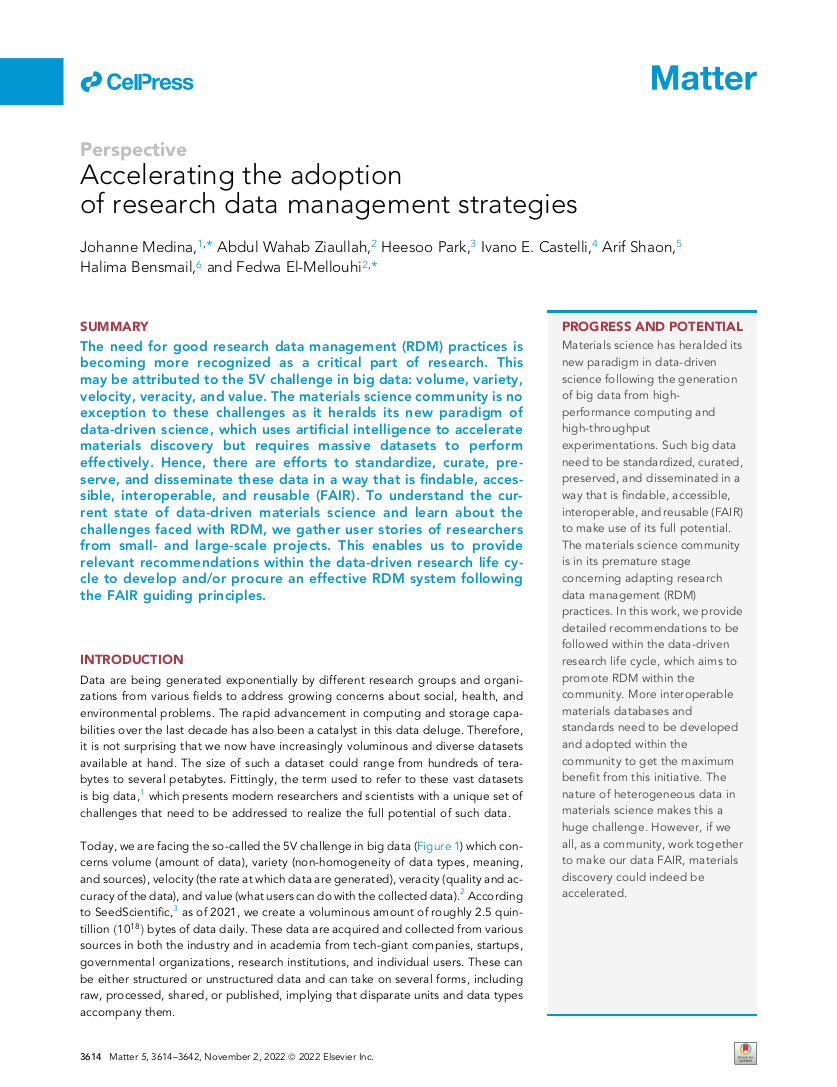 82. Accelerating the Adoption of Research Data Management Strategies, J. Medina, A. W. Ziaullah, H. Park, I. E. Castelli, A. Shaon, H. Bensmail, and F. El-Mellouh, Matter 5, 3614 (2022).
82. Accelerating the Adoption of Research Data Management Strategies, J. Medina, A. W. Ziaullah, H. Park, I. E. Castelli, A. Shaon, H. Bensmail, and F. El-Mellouh, Matter 5, 3614 (2022).
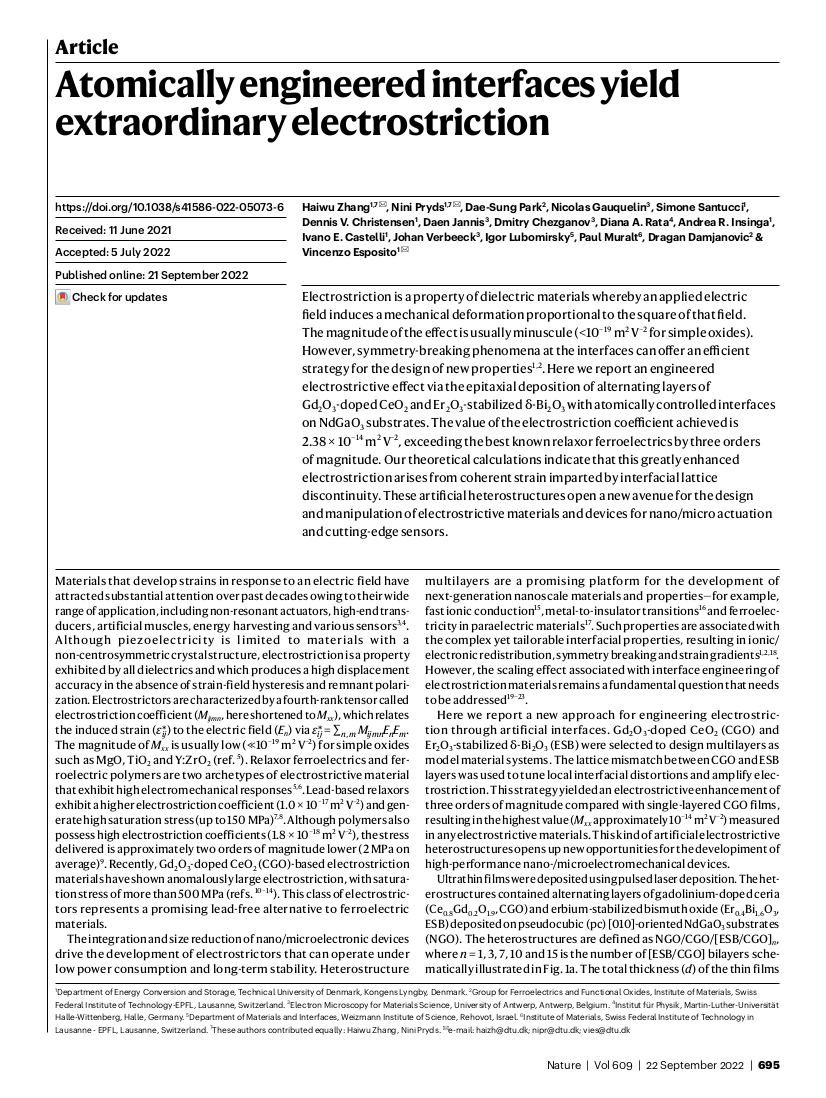 81. Atomically Engineered Interfaces Yield Extraordinary Electrostriction, H. Zhang, N. Pryds, D.-S. Park, N. Gauquelin, S. Santucci, D. V. Christensen, D. Jannis, D. Chezganov, D. A. Rata, A. R. Insinga, I. E. Castelli, J. Verbeeck, I. Lubomirsky, P. Muralt, D. Damjanovic, and V. Esposito, Nature 609, 695(2022).
81. Atomically Engineered Interfaces Yield Extraordinary Electrostriction, H. Zhang, N. Pryds, D.-S. Park, N. Gauquelin, S. Santucci, D. V. Christensen, D. Jannis, D. Chezganov, D. A. Rata, A. R. Insinga, I. E. Castelli, J. Verbeeck, I. Lubomirsky, P. Muralt, D. Damjanovic, and V. Esposito, Nature 609, 695(2022).
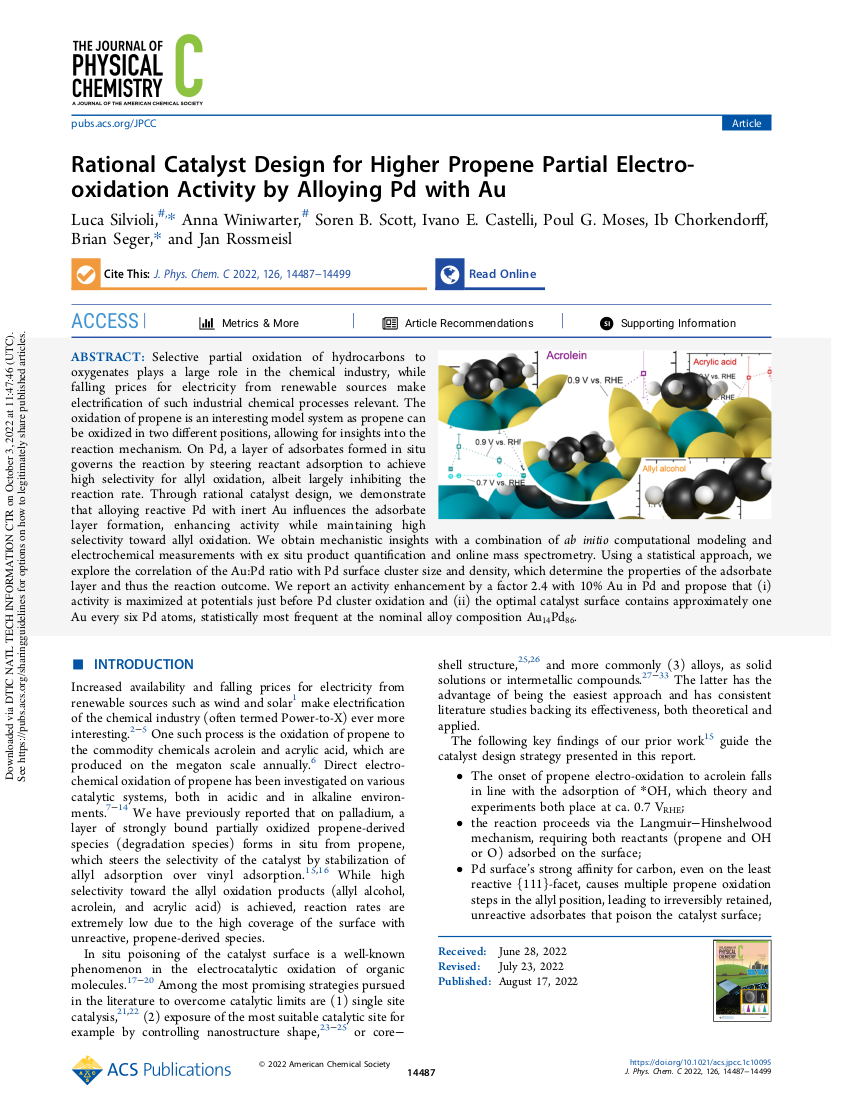 80. Rational Catalyst Design for Higher Propene Partial Electro-oxidation Activity by Alloying Pd with Au, L. Silvioli, A. Winiwarter, S. B. Scott, I. E. Castelli, P. G. Moses, I. Chorkendorff, B. Seger, and J. Rossmeisl, in printing J. Phys. Chem. C , (2022).
80. Rational Catalyst Design for Higher Propene Partial Electro-oxidation Activity by Alloying Pd with Au, L. Silvioli, A. Winiwarter, S. B. Scott, I. E. Castelli, P. G. Moses, I. Chorkendorff, B. Seger, and J. Rossmeisl, in printing J. Phys. Chem. C , (2022).
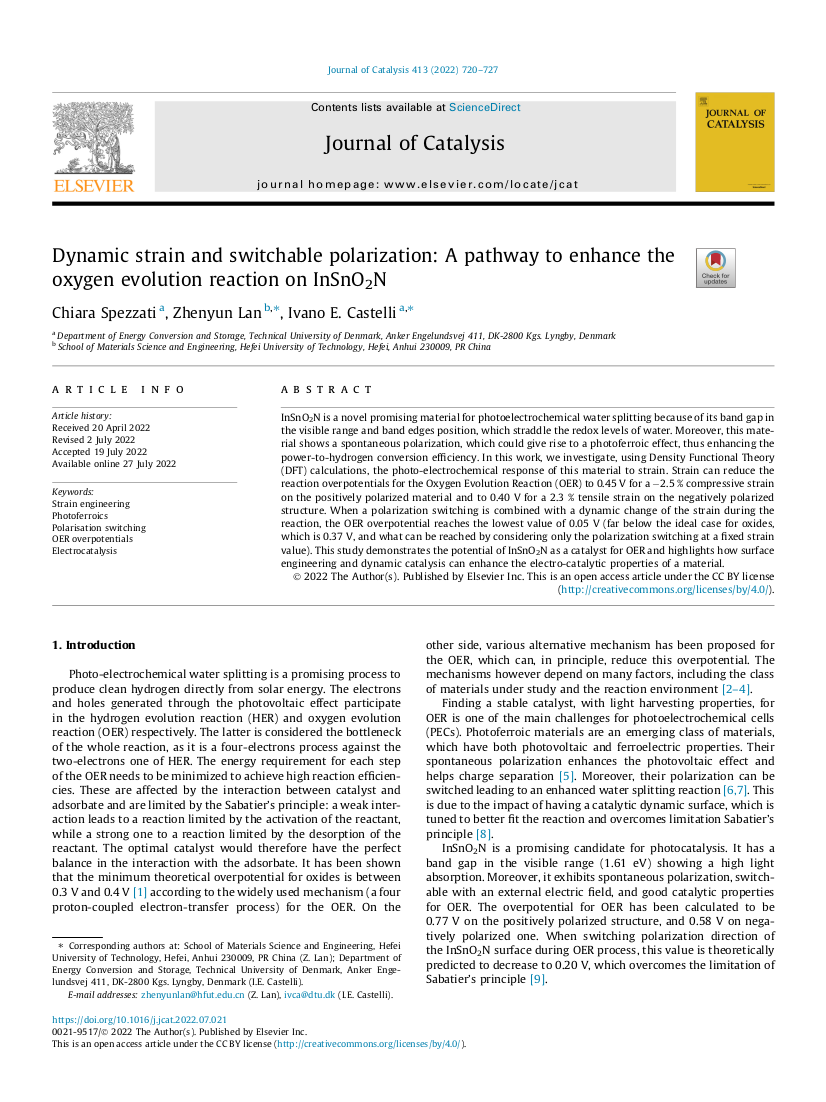 79. Dynamic Strain and Switchable Polarization: a Pathway to Enhance the Oxygen Evolution Reaction on InSnO2N, C. Spezzati, Z. Lan, and I. E. Castelli, Journal of Catalysis 413, 720 (2022).
79. Dynamic Strain and Switchable Polarization: a Pathway to Enhance the Oxygen Evolution Reaction on InSnO2N, C. Spezzati, Z. Lan, and I. E. Castelli, Journal of Catalysis 413, 720 (2022).
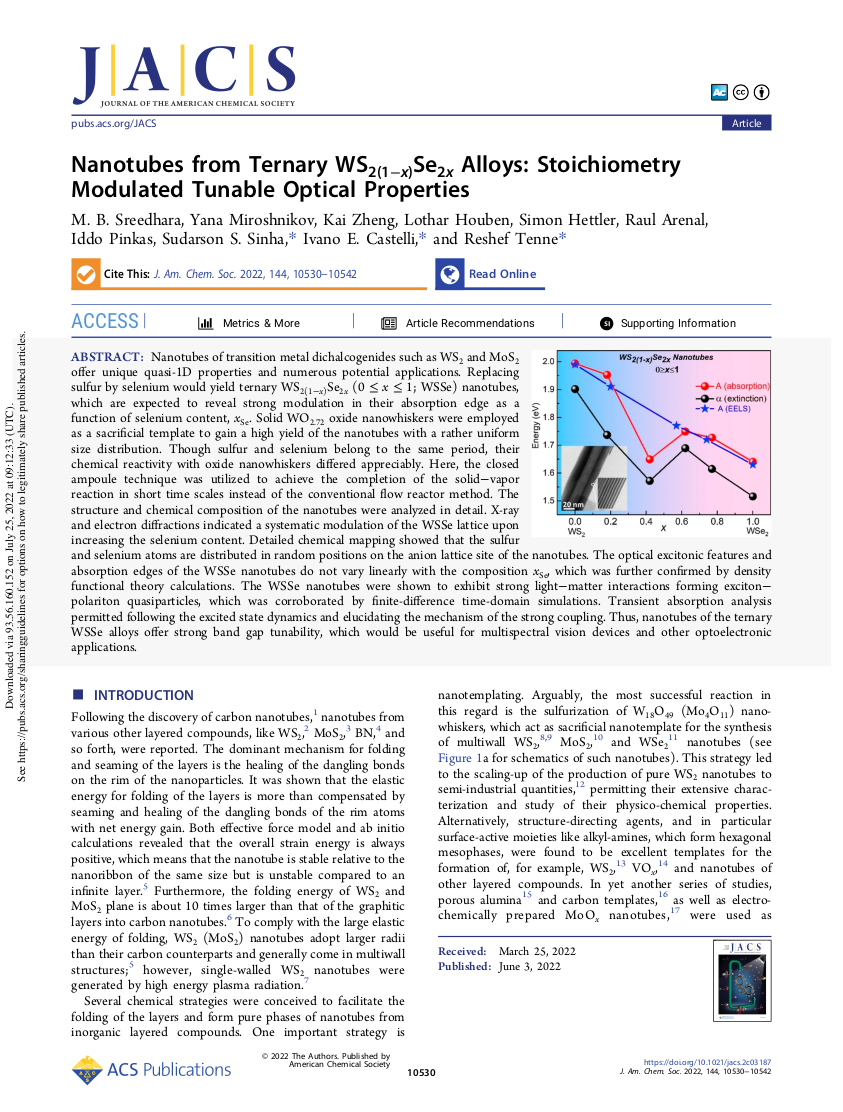 78. Nanotubes from Ternary WS2(1-x)Se2x Alloys: Stoichiometry Modulated Tunable Optical Properties, M. B. Sreedhara, Y. Miroshnikov, K. Zheng, L. Houben, S. Hettler, R. Arenal, I. Pinkas, S. Sinha, I. E. Castelli, and R. Tenne, J. Am. Chem. Soc. 144, 10530 (2022).
78. Nanotubes from Ternary WS2(1-x)Se2x Alloys: Stoichiometry Modulated Tunable Optical Properties, M. B. Sreedhara, Y. Miroshnikov, K. Zheng, L. Houben, S. Hettler, R. Arenal, I. Pinkas, S. Sinha, I. E. Castelli, and R. Tenne, J. Am. Chem. Soc. 144, 10530 (2022).
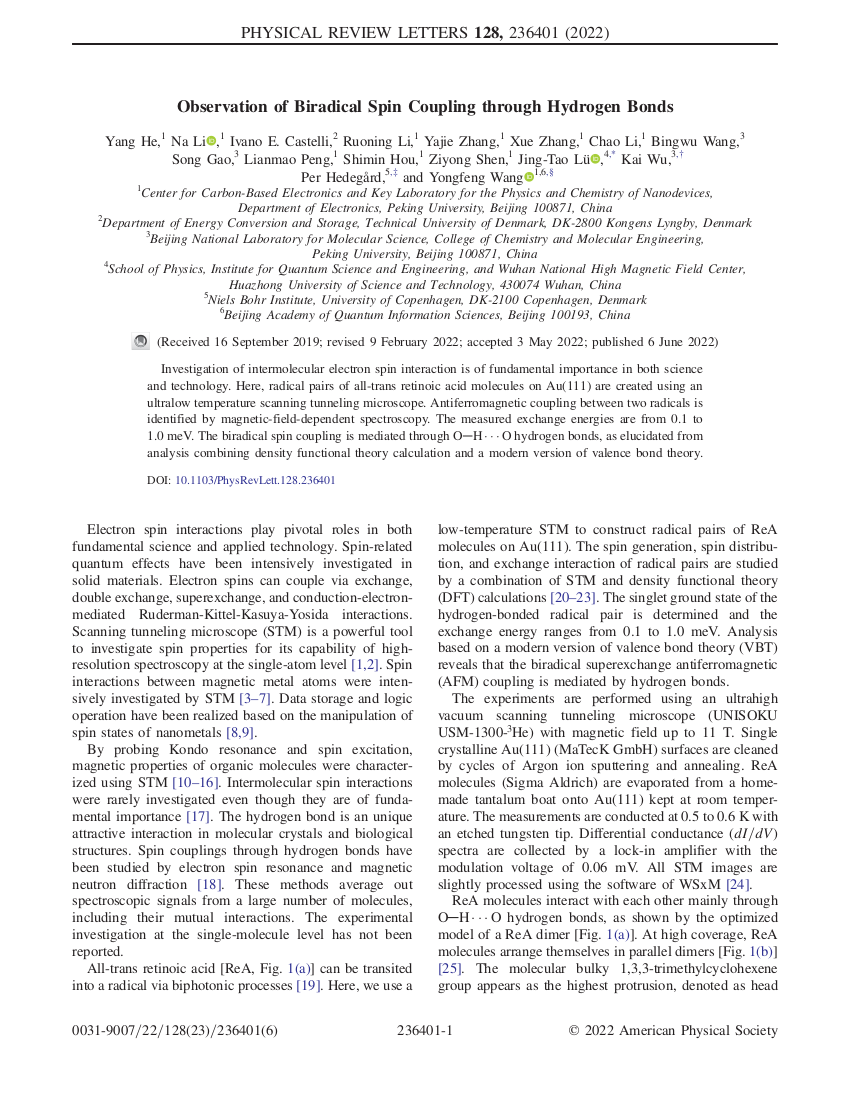 77. Observation of Biradical Spin Coupling through Hydrogen Bonds, Y. He, N. Li, I. E. Castelli, R. Li, Y. Zhang, X. Zhang, C. Li, B. Wang, S. Gao, L. Peng, S. Hou, Z. Shen, J.-T. Lü, K. Wu, P. Hedegård, and Y. Wang, Phys. Rev. Lett. 128, 236401 (2022).
77. Observation of Biradical Spin Coupling through Hydrogen Bonds, Y. He, N. Li, I. E. Castelli, R. Li, Y. Zhang, X. Zhang, C. Li, B. Wang, S. Gao, L. Peng, S. Hou, Z. Shen, J.-T. Lü, K. Wu, P. Hedegård, and Y. Wang, Phys. Rev. Lett. 128, 236401 (2022).
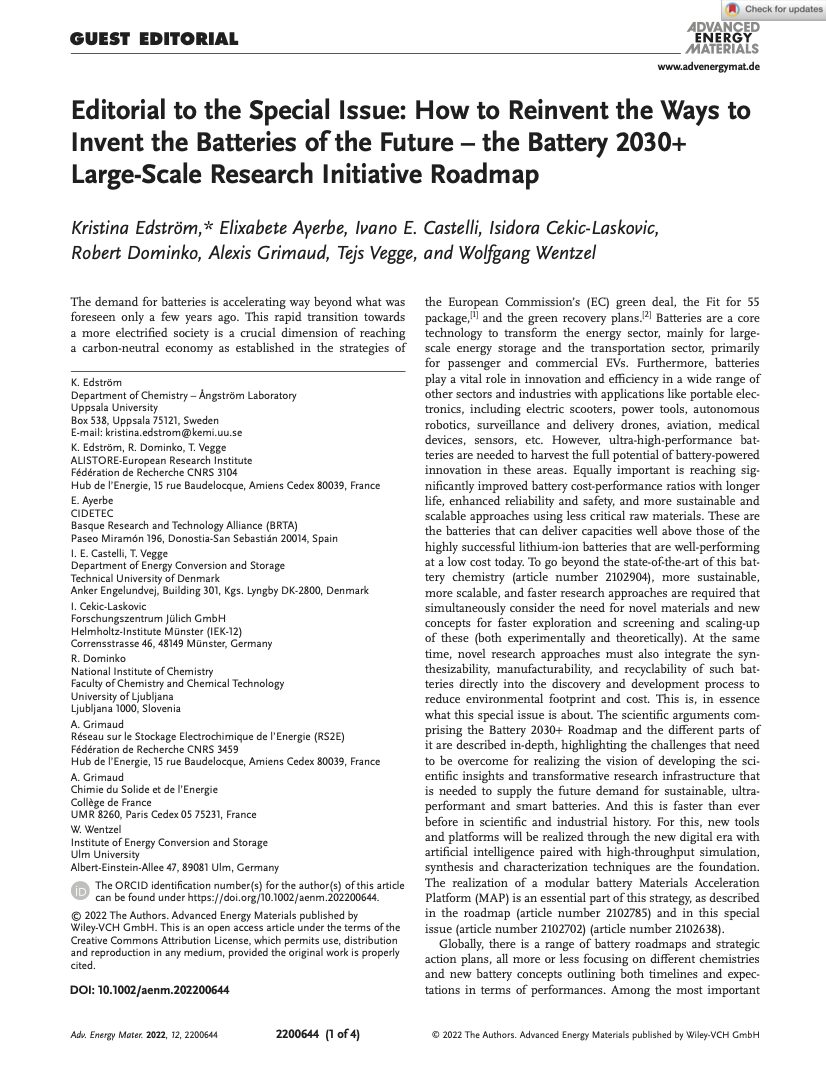 76. Editorial to the Special Issue: How to Reinvent the Ways to Invent the Batteries of the Future - the BATTERY 2030+ Large-Scale Research Initiative Roadmap , K. Edström, E. Ayerbe, I. E. Castelli, I. Cekic-Laskovic, R. Dominko, A. Grimaud, T. Vegge, and W. Wentzel, Adv. Energy Mater 2022, 2200644 (2022).
76. Editorial to the Special Issue: How to Reinvent the Ways to Invent the Batteries of the Future - the BATTERY 2030+ Large-Scale Research Initiative Roadmap , K. Edström, E. Ayerbe, I. E. Castelli, I. Cekic-Laskovic, R. Dominko, A. Grimaud, T. Vegge, and W. Wentzel, Adv. Energy Mater 2022, 2200644 (2022).
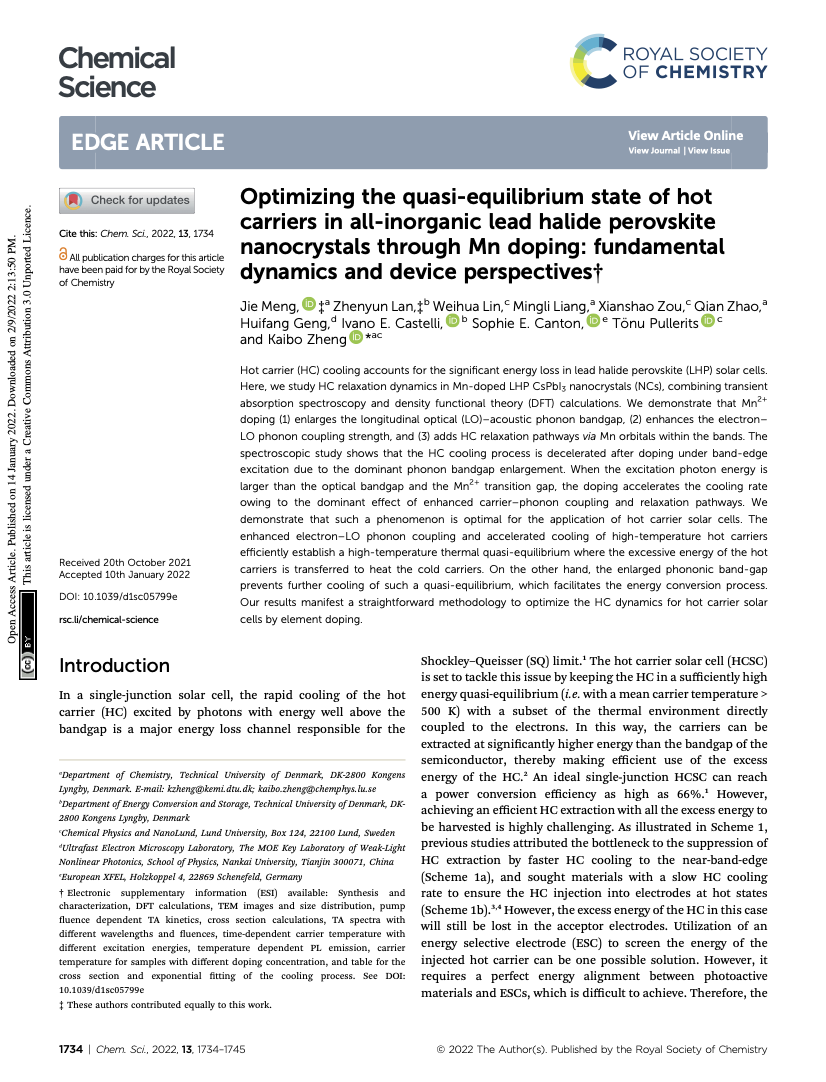 75. Optimizing the Quasi-equilibrium State of Hot Carriers in All-inorganic Lead Halide Perovskite Nanocrystals Through Mn Doping: Fundamental Dynamics and Device Perspectives, J. Meng, Z. Lan, W. Lin, M. Liang, X. Zou, Q. Zhao, H. Geng, I. E. Castelli, S. E. Canton, T. Pullerits, and K. Zheng, Chem. Sci. 13, 1734 (2022).
75. Optimizing the Quasi-equilibrium State of Hot Carriers in All-inorganic Lead Halide Perovskite Nanocrystals Through Mn Doping: Fundamental Dynamics and Device Perspectives, J. Meng, Z. Lan, W. Lin, M. Liang, X. Zou, Q. Zhao, H. Geng, I. E. Castelli, S. E. Canton, T. Pullerits, and K. Zheng, Chem. Sci. 13, 1734 (2022).
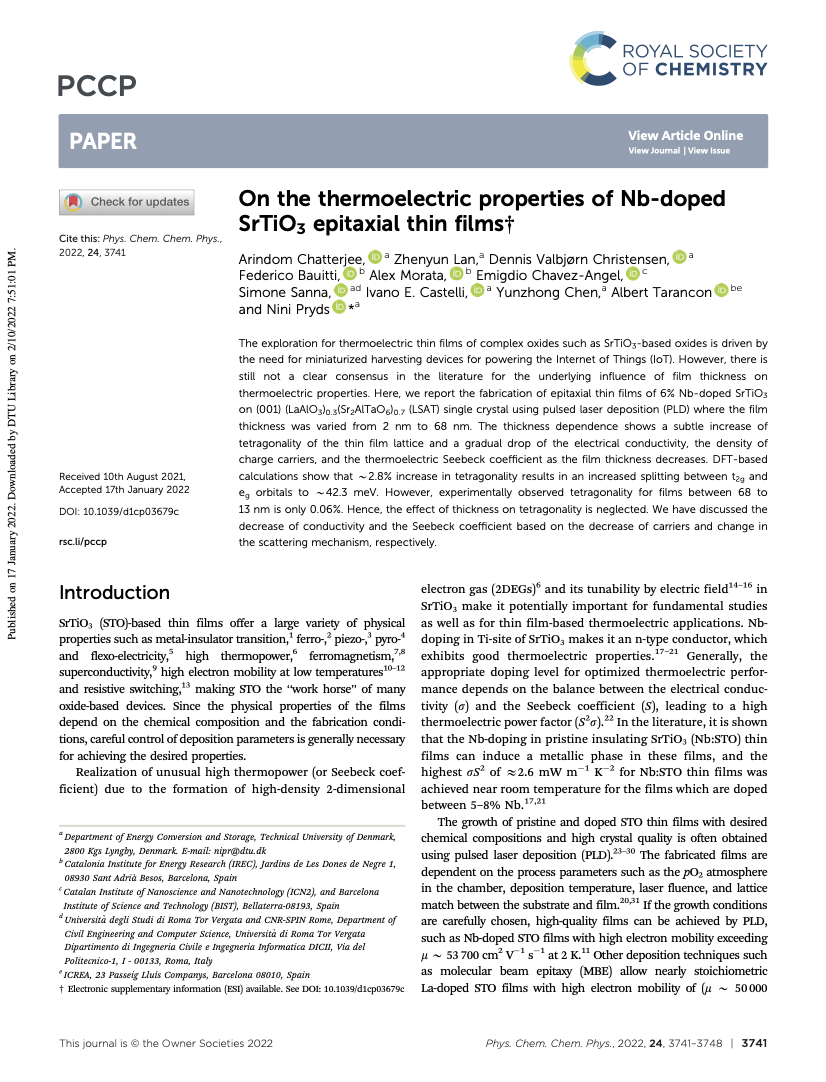 74. On the Thermoelectric Properties of Nb-doped SrTiO
74. On the Thermoelectric Properties of Nb-doped SrTiO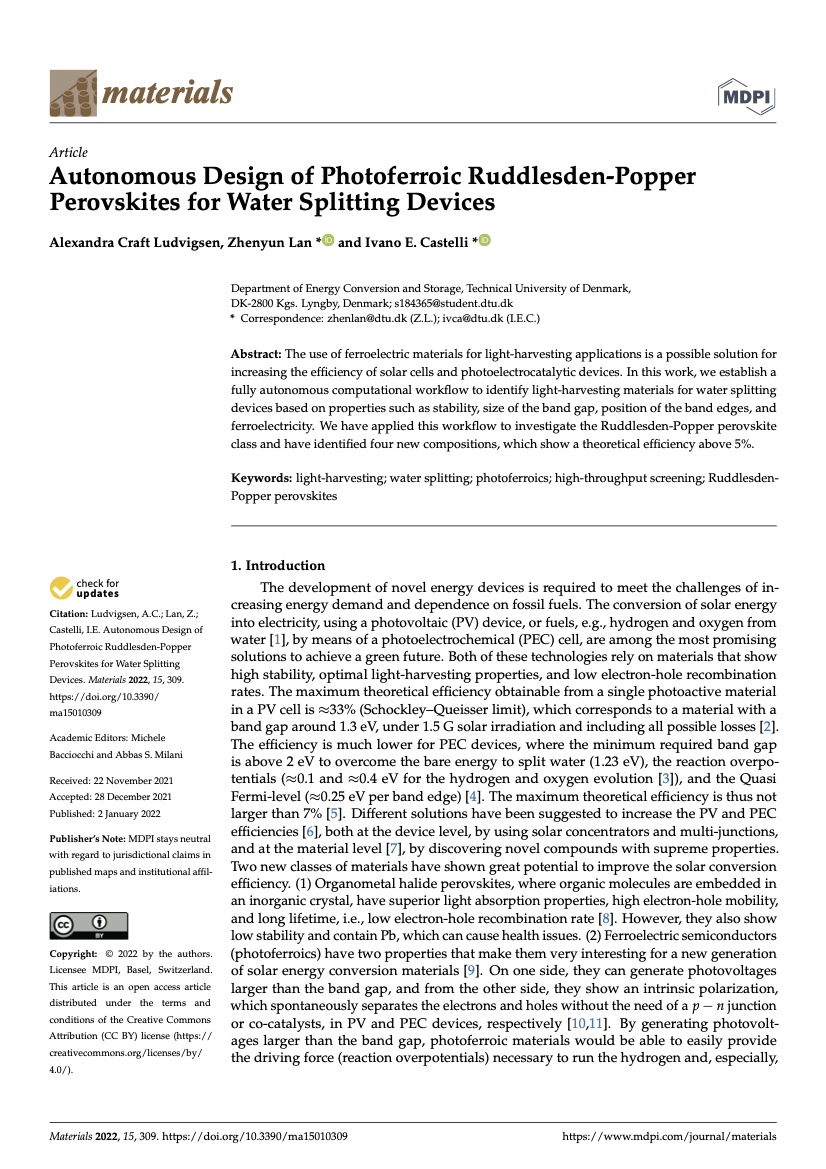 73. Autonomous Design of Photoferroic Ruddlesden-Popper Perovskites for Water Splitting Devices, A. C. Ludvigsen, Z. Lan, and I. E. Castelli, Materials 15, 309 (2022).
73. Autonomous Design of Photoferroic Ruddlesden-Popper Perovskites for Water Splitting Devices, A. C. Ludvigsen, Z. Lan, and I. E. Castelli, Materials 15, 309 (2022).
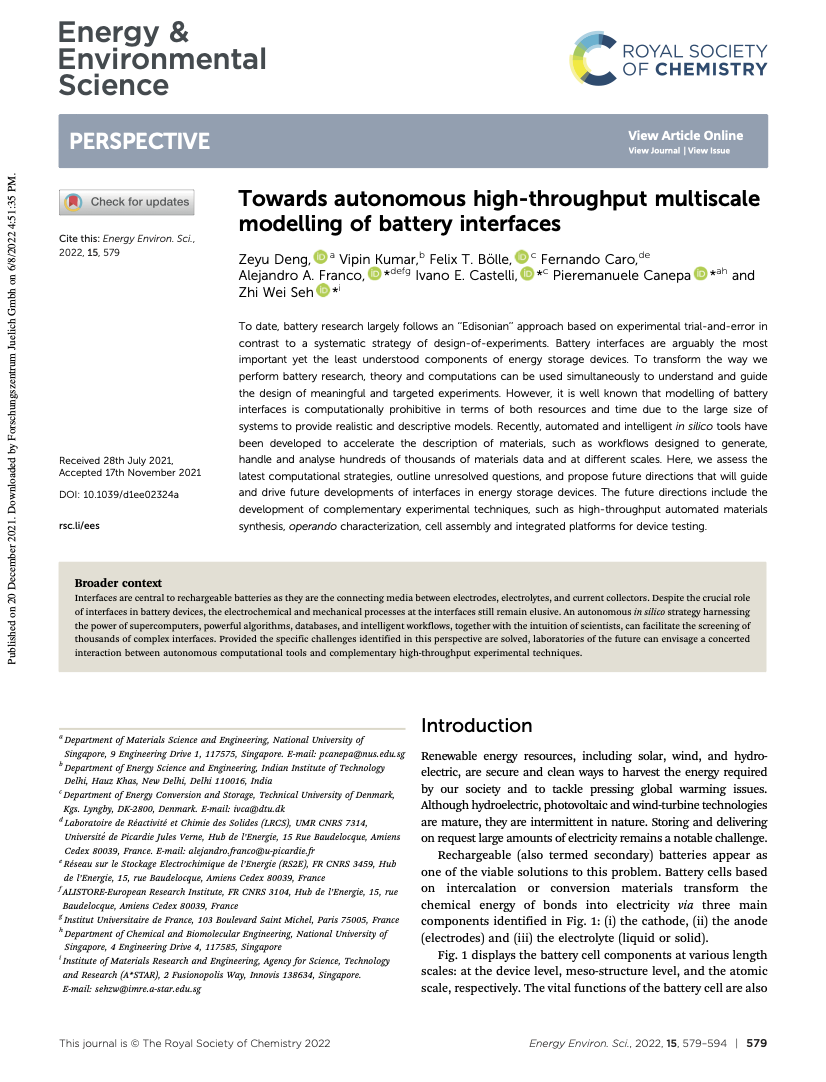 72. Towards Autonomous High-throughput Multiscale Modelling of Battery Interfaces, Z. Deng, V. Kumar, F. T. Bölle, F. Caro, A. A. Franco, I. E. Castelli, P. Canepa, and Z. Wei Seh, Energy and Environmental Science 15, 579 (2022).
72. Towards Autonomous High-throughput Multiscale Modelling of Battery Interfaces, Z. Deng, V. Kumar, F. T. Bölle, F. Caro, A. A. Franco, I. E. Castelli, P. Canepa, and Z. Wei Seh, Energy and Environmental Science 15, 579 (2022).
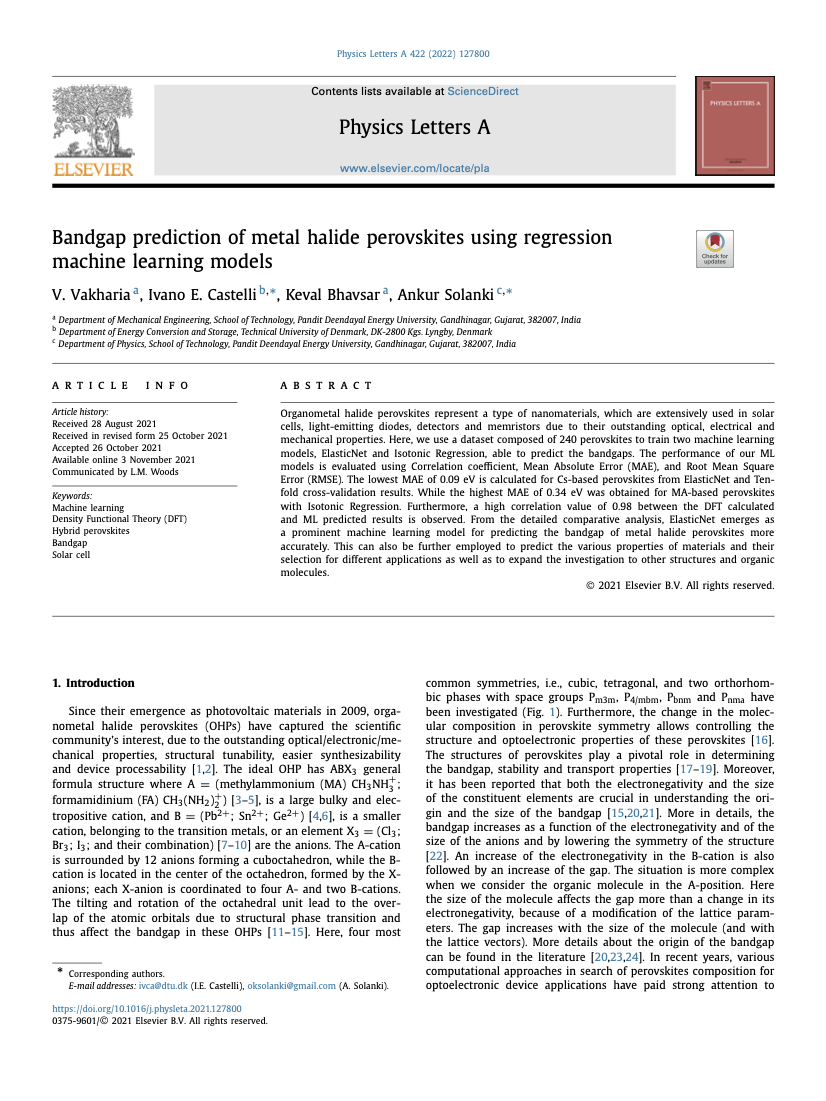 71. Bandgap Prediction of Metal Halide Perovskites using Regression Machine Learning Models, V. Vakharia, I. E. Castelli, K. Bhavsar, and A. Solanki, Physics Letters A 422, 127800 (2022).
71. Bandgap Prediction of Metal Halide Perovskites using Regression Machine Learning Models, V. Vakharia, I. E. Castelli, K. Bhavsar, and A. Solanki, Physics Letters A 422, 127800 (2022).
 70. A Roadmap for Transforming Research to Invent the Batteries of the Future Designed within the European Large Scale Research Initiative BATTERY 2030+, J. Amici, P. Asinari, E. Ayerbe, P. Barboux, P. Bayle-Guillemaud, R. J. Behm, M. Berecibar, E. Berg, A. Bhowmik, S. Bodoardo, I. E. Castelli, et al., Adv. Energy Mater. 2022, 2102785 (2022).
70. A Roadmap for Transforming Research to Invent the Batteries of the Future Designed within the European Large Scale Research Initiative BATTERY 2030+, J. Amici, P. Asinari, E. Ayerbe, P. Barboux, P. Bayle-Guillemaud, R. J. Behm, M. Berecibar, E. Berg, A. Bhowmik, S. Bodoardo, I. E. Castelli, et al., Adv. Energy Mater. 2022, 2102785 (2022).
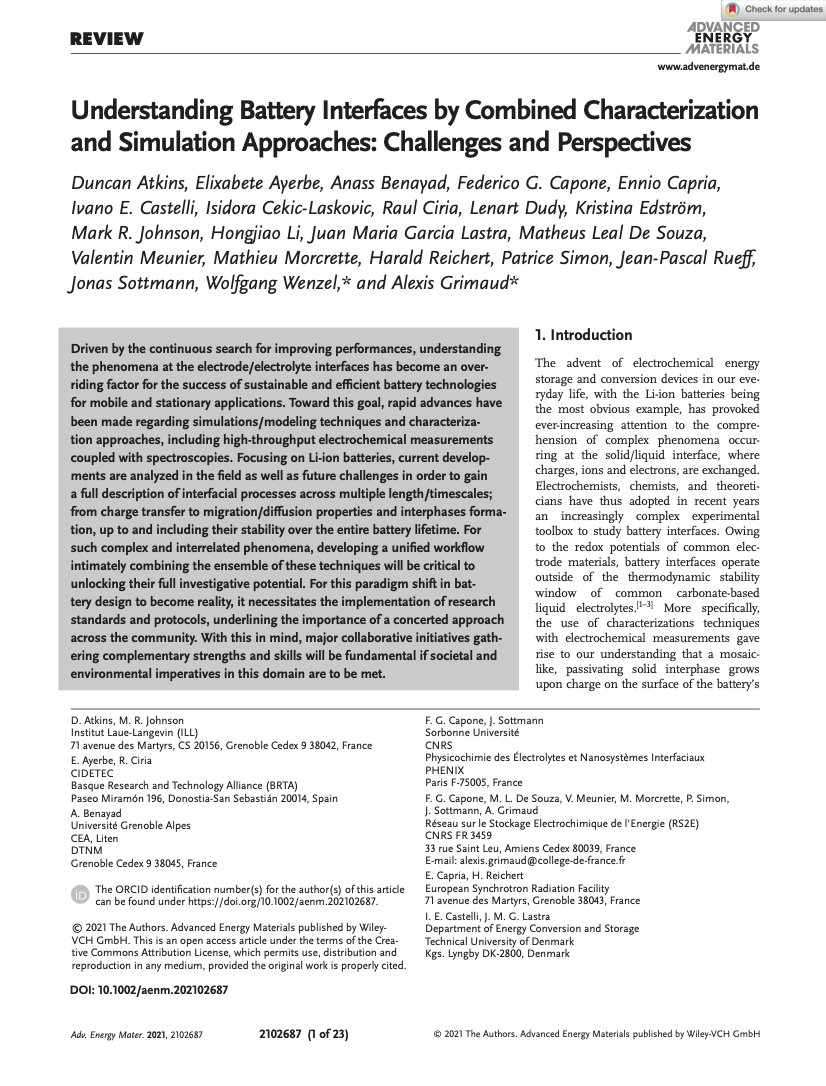 69. Understanding Battery Interfaces by Combined Characterization and Simulation Approaches: Challenges and Perspectives, D. Atkins, E. Ayerbe, A. Benayad, F. G. Capone, E. Capria, I. E. Castelli, I. Cekic-Laskovic, R. Ciria, L. Dudy, K. Edström, M. R. Johnson, H. Li, J. M. Garcia-Lastra, M. L. De Souza, V. Meunier, M. Morcrette, H. Reichert, P. Simon, J.-P. Rueff, J. Sottmann, W. Wenzel, and A. Grimaud Adv. Energy Mater. 2021, 2102687 (2021).
69. Understanding Battery Interfaces by Combined Characterization and Simulation Approaches: Challenges and Perspectives, D. Atkins, E. Ayerbe, A. Benayad, F. G. Capone, E. Capria, I. E. Castelli, I. Cekic-Laskovic, R. Ciria, L. Dudy, K. Edström, M. R. Johnson, H. Li, J. M. Garcia-Lastra, M. L. De Souza, V. Meunier, M. Morcrette, H. Reichert, P. Simon, J.-P. Rueff, J. Sottmann, W. Wenzel, and A. Grimaud Adv. Energy Mater. 2021, 2102687 (2021).
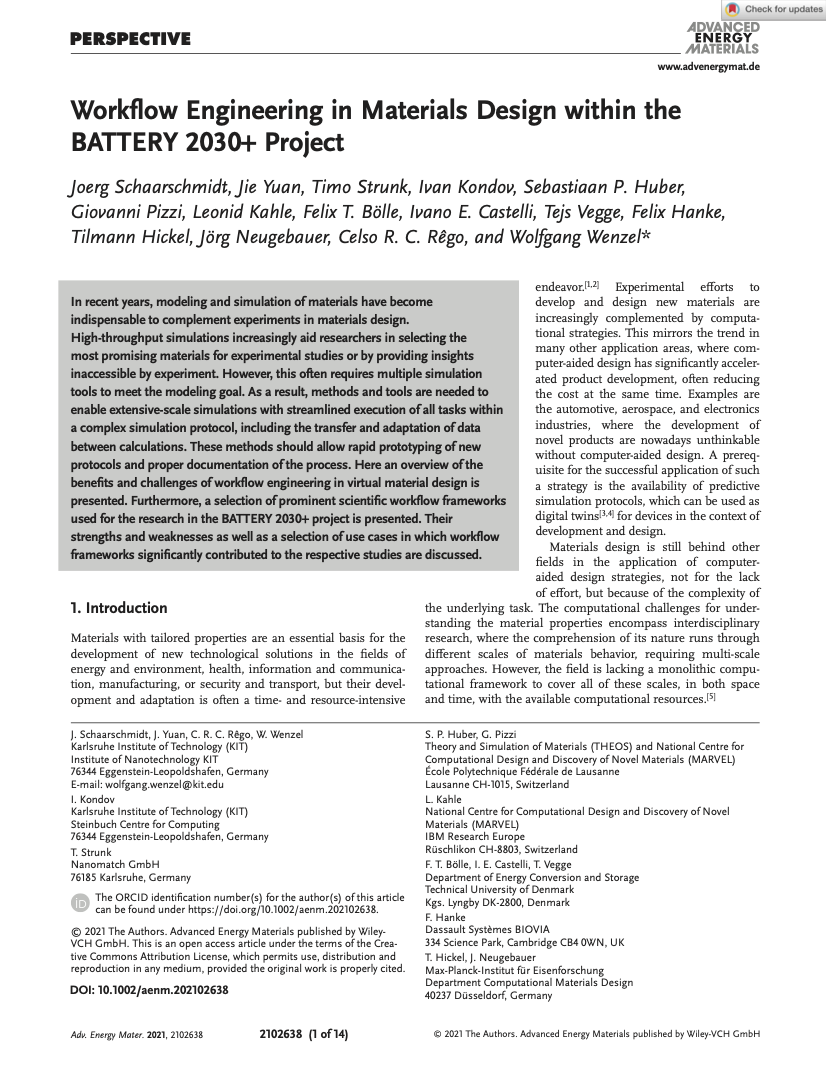 68. Workflow Engineering in Materials Design within the BATTERY 2030+ Project, J. Schaarschmidt, J. Yuan, T. Strunk, I. Kondov, S. P. Huber, G. Pizzi, L. Kahle, F. T. Bölle, I. E. Castelli, T. Vegge, F. Hanke, T. Hickel, J. Neugebauer, C. R. C. Rêgo, and W. Wenzel, Adv. Energy Mater. 2021, 2102638 (2021).
68. Workflow Engineering in Materials Design within the BATTERY 2030+ Project, J. Schaarschmidt, J. Yuan, T. Strunk, I. Kondov, S. P. Huber, G. Pizzi, L. Kahle, F. T. Bölle, I. E. Castelli, T. Vegge, F. Hanke, T. Hickel, J. Neugebauer, C. R. C. Rêgo, and W. Wenzel, Adv. Energy Mater. 2021, 2102638 (2021).
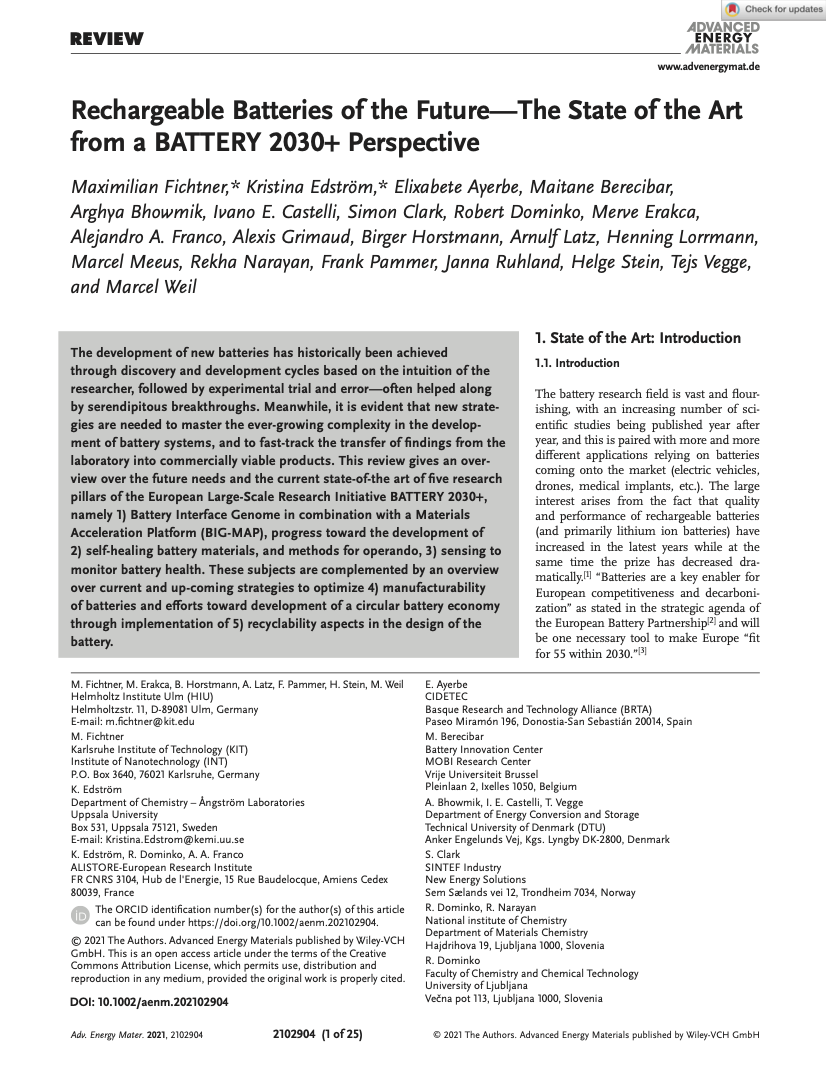 67. Rechargeable Batteries of the Future - The State of the Art from a BATTERY 2030+ Perspective, M. Fichtner, K. Edström, E. Ayerbe, M. Berecibar, A. Bhowmik, I. E. Castelli, S. Clark, R. Dominko, M. Erakca, A. A. Franco, A. Grimaud, B. Horstmann, A. Latz, H. Lorrmann, M. Meeus, R. Narayan, F. Pammer, J. Ruhland, H. Stein, T. Vegge, and M. Weil, Adv. Energy Mater. 2021, 2102638 (2021).
67. Rechargeable Batteries of the Future - The State of the Art from a BATTERY 2030+ Perspective, M. Fichtner, K. Edström, E. Ayerbe, M. Berecibar, A. Bhowmik, I. E. Castelli, S. Clark, R. Dominko, M. Erakca, A. A. Franco, A. Grimaud, B. Horstmann, A. Latz, H. Lorrmann, M. Meeus, R. Narayan, F. Pammer, J. Ruhland, H. Stein, T. Vegge, and M. Weil, Adv. Energy Mater. 2021, 2102638 (2021).
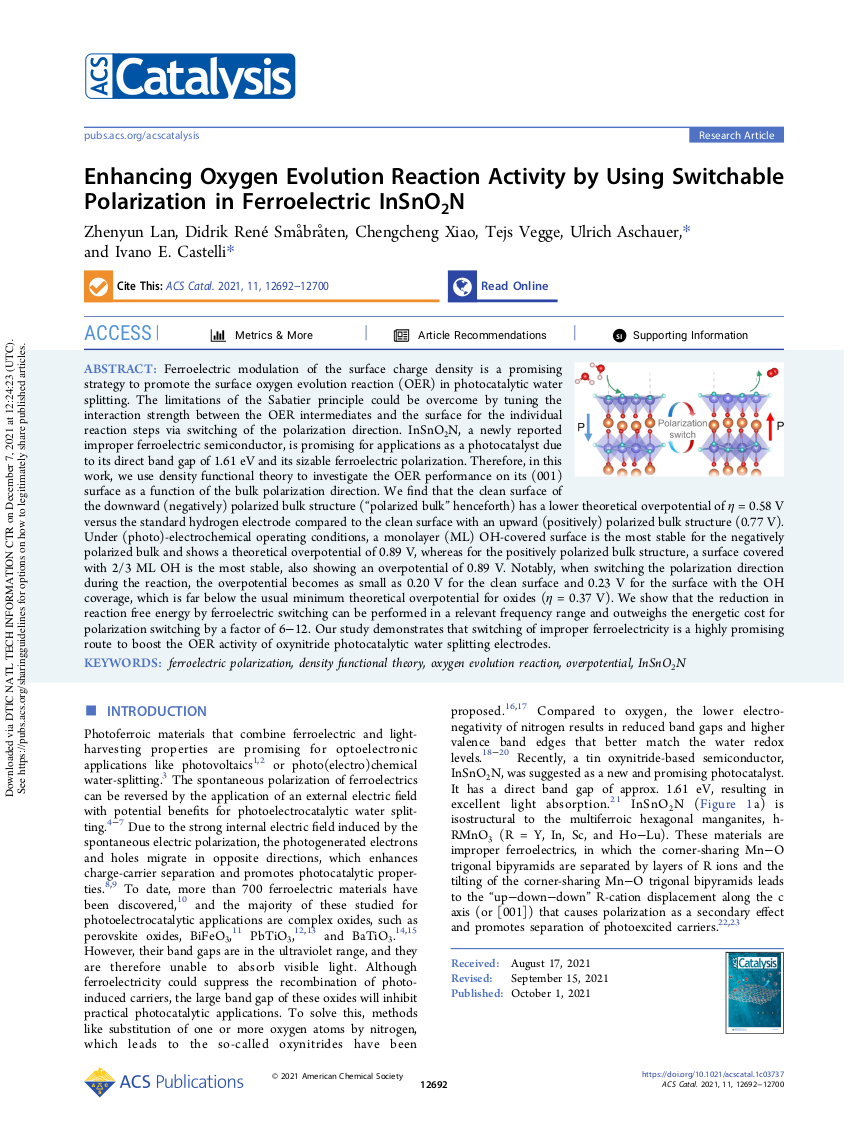 66. Enhancing Oxygen Evolution Reaction Activity by Using Switchable Polarization in Ferroelectric InSnO2N, Z. Lan, D. R. Småbråten, C. Xiao,T. Vegge, U. Aschauer, and I. E. Castelli, ACS Catal. 11, 12692 (2021).
66. Enhancing Oxygen Evolution Reaction Activity by Using Switchable Polarization in Ferroelectric InSnO2N, Z. Lan, D. R. Småbråten, C. Xiao,T. Vegge, U. Aschauer, and I. E. Castelli, ACS Catal. 11, 12692 (2021).
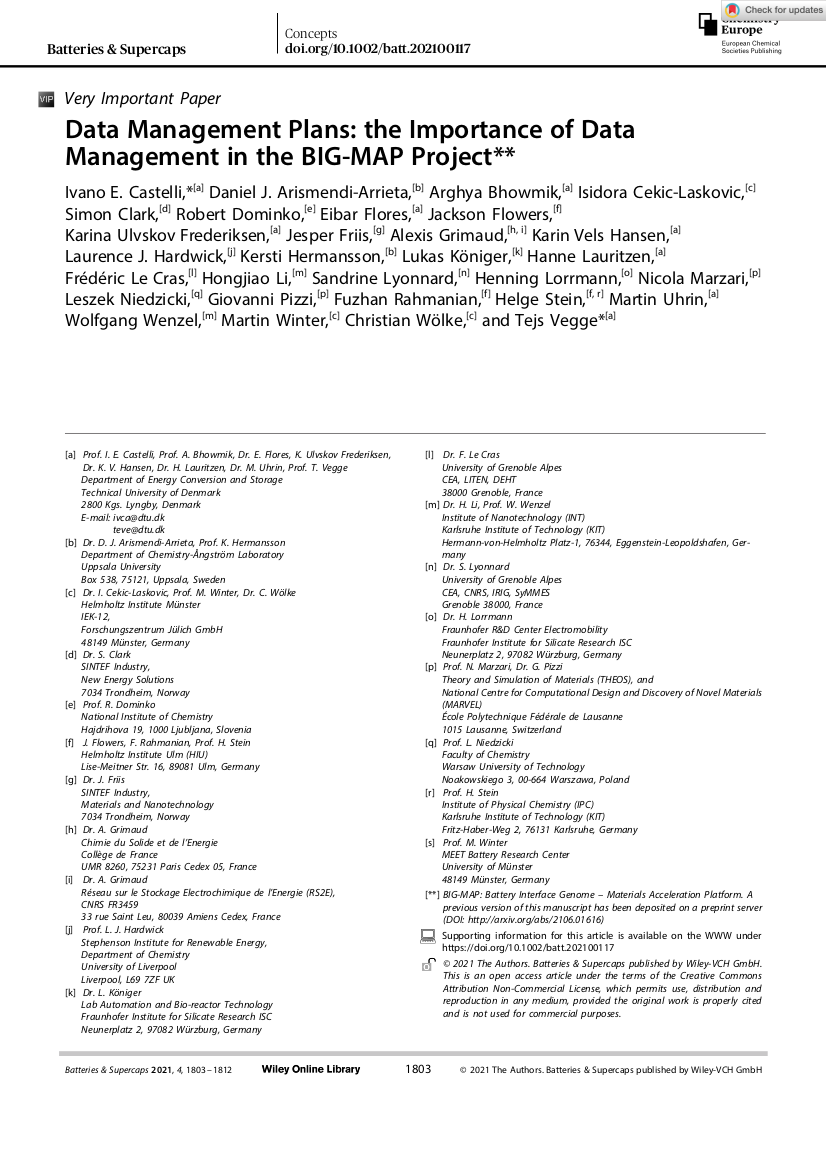 65. Data Management Plans: the Importance of Data Management in the BIG-MAP Project, I. E. Castelli, D. J. Arismendi-Arrieta, A. Bhowmik, I. Cekic-Laskovic, S. Clark, R. Dominko, E. Flores, J. Flowers, K. Ulvskov Frederiksen, J. Friis, A. Grimaud, K. Vels Hansen, L. J. Hardwick, K. Hermansson, L. Königer, H. Lauritzen, F. Le Cras, H. Li, S. Lyonnard, H. Lorrmann, N. Marzari, L. Niedzicki, G. Pizzi, F. Rahmanian, H. Stein, M. Uhrin, W. Wenzel, M. Winter, C. Wölke, and T. Vegge, Batteries & Supercaps 4, 1803 (2021).
65. Data Management Plans: the Importance of Data Management in the BIG-MAP Project, I. E. Castelli, D. J. Arismendi-Arrieta, A. Bhowmik, I. Cekic-Laskovic, S. Clark, R. Dominko, E. Flores, J. Flowers, K. Ulvskov Frederiksen, J. Friis, A. Grimaud, K. Vels Hansen, L. J. Hardwick, K. Hermansson, L. Königer, H. Lauritzen, F. Le Cras, H. Li, S. Lyonnard, H. Lorrmann, N. Marzari, L. Niedzicki, G. Pizzi, F. Rahmanian, H. Stein, M. Uhrin, W. Wenzel, M. Winter, C. Wölke, and T. Vegge, Batteries & Supercaps 4, 1803 (2021).
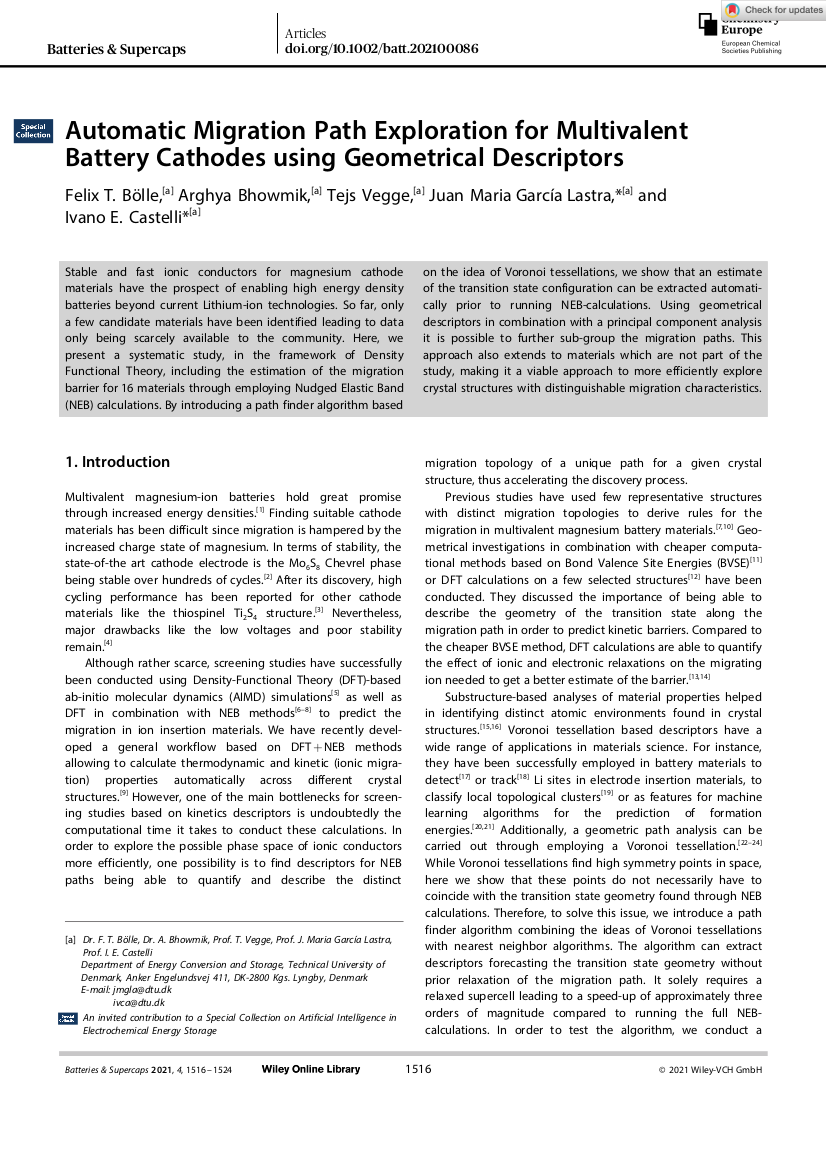 64. Automatic Migration Path Exploration for Multivalent Battery Cathodes using Geometrical Descriptors, F. T. Bölle, A. Bhowmik, T. Vegge, J. M. García-Lastra, and I. E. Castelli, Batteries & Supercaps 4, 1516 (2021).
64. Automatic Migration Path Exploration for Multivalent Battery Cathodes using Geometrical Descriptors, F. T. Bölle, A. Bhowmik, T. Vegge, J. M. García-Lastra, and I. E. Castelli, Batteries & Supercaps 4, 1516 (2021).
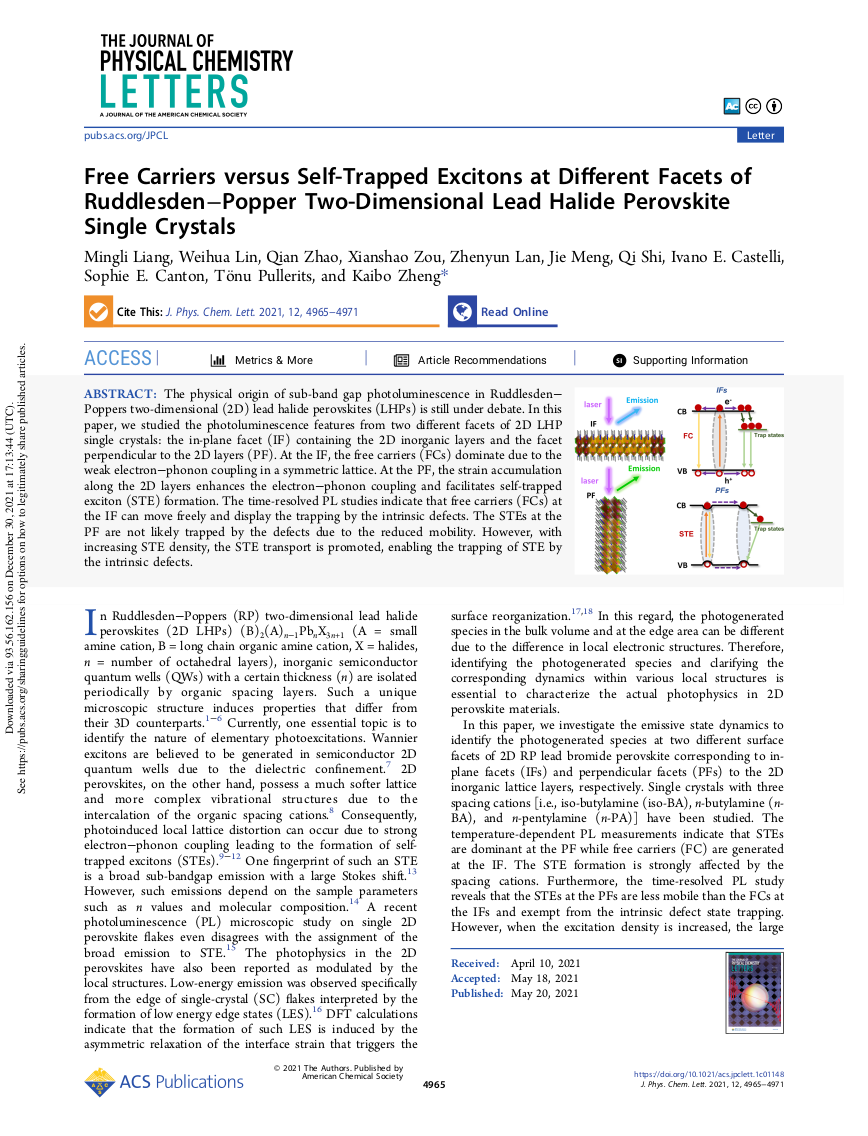 63. Free Carriers versus Self-Trapped Excitons at Different Facets of Ruddlesden-Popper Two-Dimensional Lead Halide Perovskite Single Crystals, M. Liang, W. Lin, Q. Zhao, X. Zou, Z. Lan, J. Meng, Q. Shi, I. E. Castelli, S. Canton, T. Pullerits, and K. Zheng, J. Phys. Chem. Lett. 12, 4965 (2021).
63. Free Carriers versus Self-Trapped Excitons at Different Facets of Ruddlesden-Popper Two-Dimensional Lead Halide Perovskite Single Crystals, M. Liang, W. Lin, Q. Zhao, X. Zou, Z. Lan, J. Meng, Q. Shi, I. E. Castelli, S. Canton, T. Pullerits, and K. Zheng, J. Phys. Chem. Lett. 12, 4965 (2021).
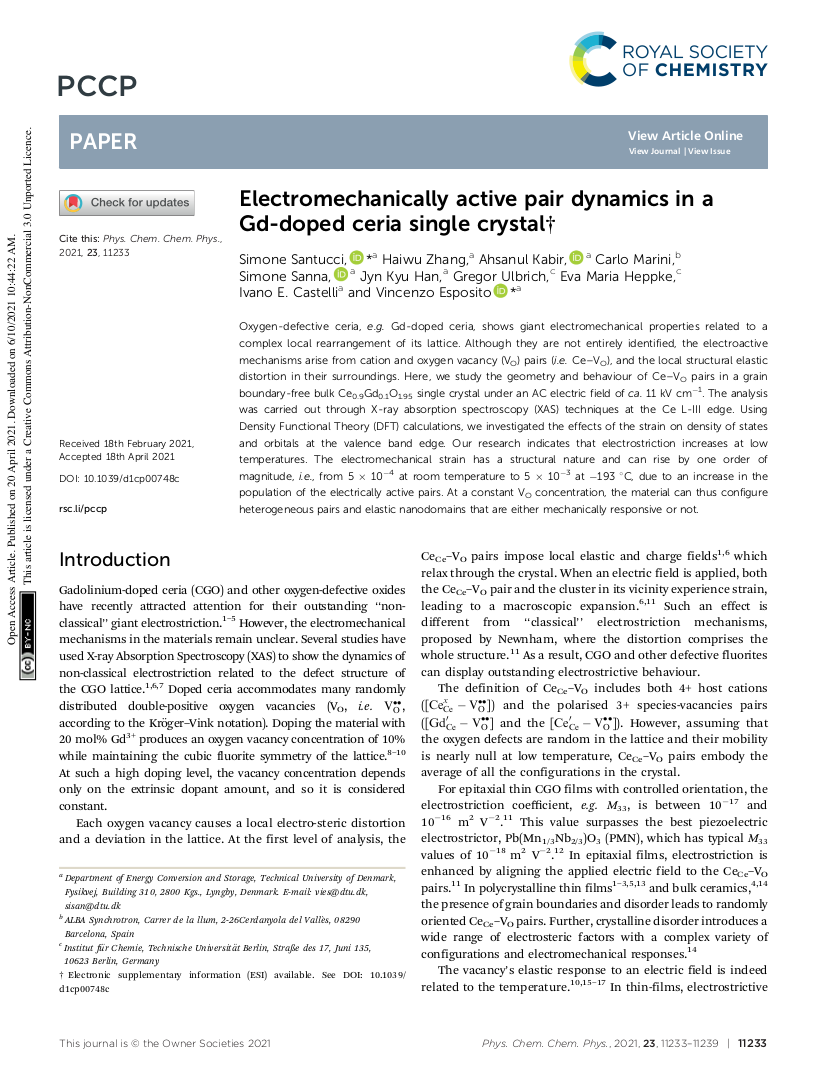 62. Electromechanically Active Pairs Dynamics in Gd-doped Ceria Single Crystal, S. Santucci, H. Zhang, A. Kabir, C. Marini, S. Sanna, J. K. Han, E. M. Heppke, I. E. Castelli, and V. Esposito, Phys. Chem. Chem. Phys. 23, 11233 (2021). Selected as Hot Paper.
62. Electromechanically Active Pairs Dynamics in Gd-doped Ceria Single Crystal, S. Santucci, H. Zhang, A. Kabir, C. Marini, S. Sanna, J. K. Han, E. M. Heppke, I. E. Castelli, and V. Esposito, Phys. Chem. Chem. Phys. 23, 11233 (2021). Selected as Hot Paper.
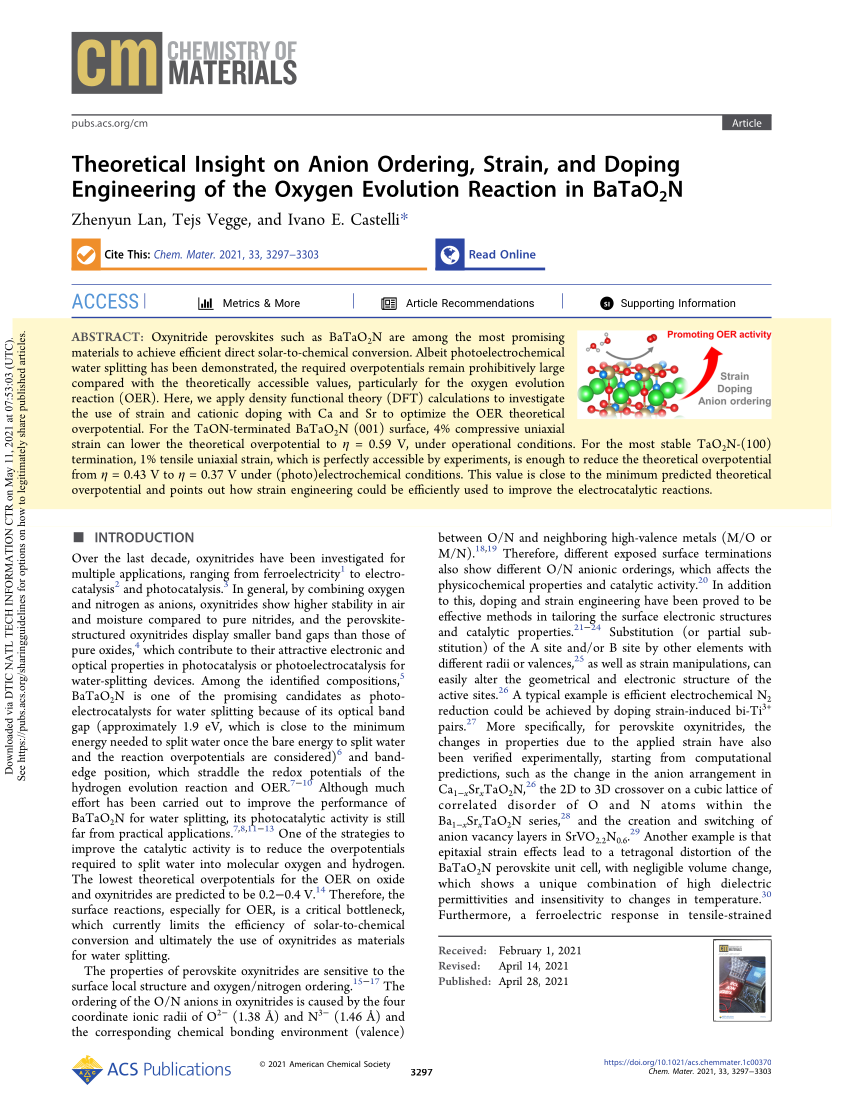 61. Theoretical Insight on Anion Ordering, Strain, and Doping Engineering of the Oxygen Evolution Reaction in BaTaO2N, Z. Lan, T. Vegge, and I. E. Castelli, Chem. Mater. 33, 3297 (2021).
61. Theoretical Insight on Anion Ordering, Strain, and Doping Engineering of the Oxygen Evolution Reaction in BaTaO2N, Z. Lan, T. Vegge, and I. E. Castelli, Chem. Mater. 33, 3297 (2021).
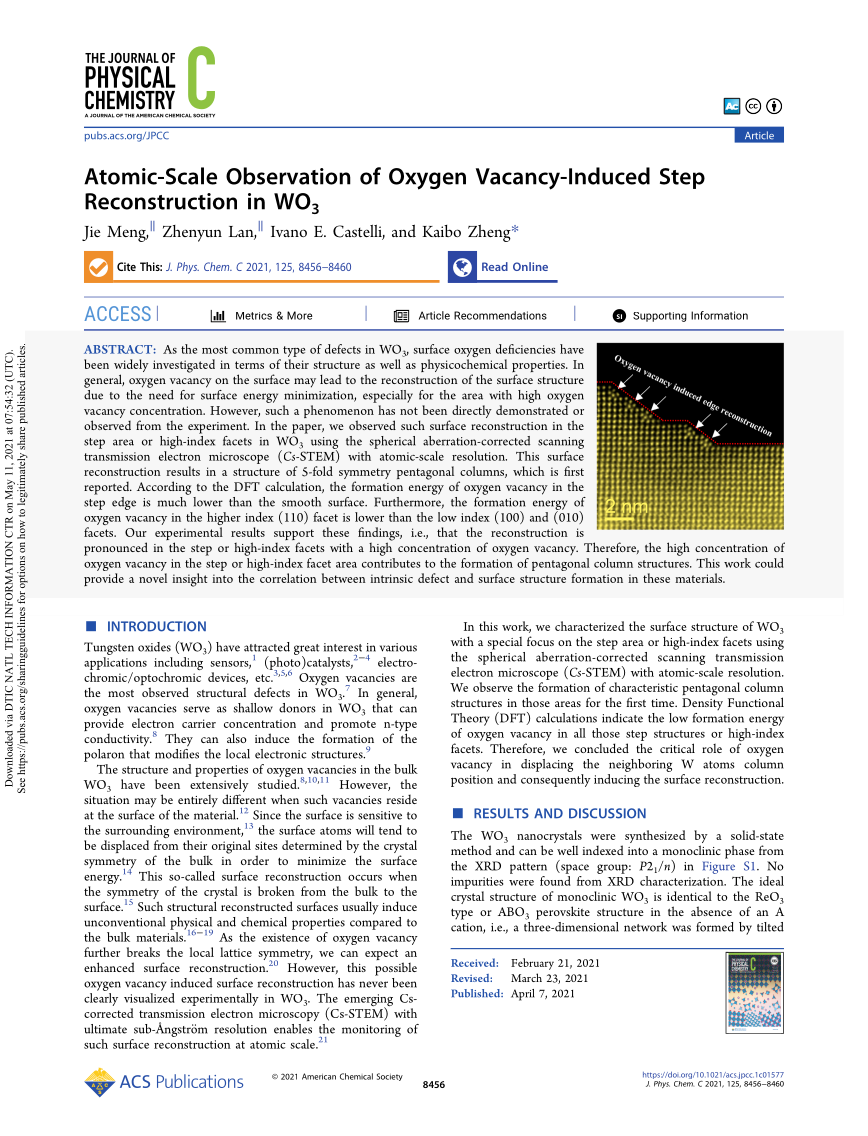 60. Atomic-Scale Observation of Oxygen Vacancy-Induced Step Reconstruction in WO3, J. Meng, Z. Lan, I. E. Castelli, and K. Zheng, J. Phys. Chem. C 125, 15 (2021).
60. Atomic-Scale Observation of Oxygen Vacancy-Induced Step Reconstruction in WO3, J. Meng, Z. Lan, I. E. Castelli, and K. Zheng, J. Phys. Chem. C 125, 15 (2021).
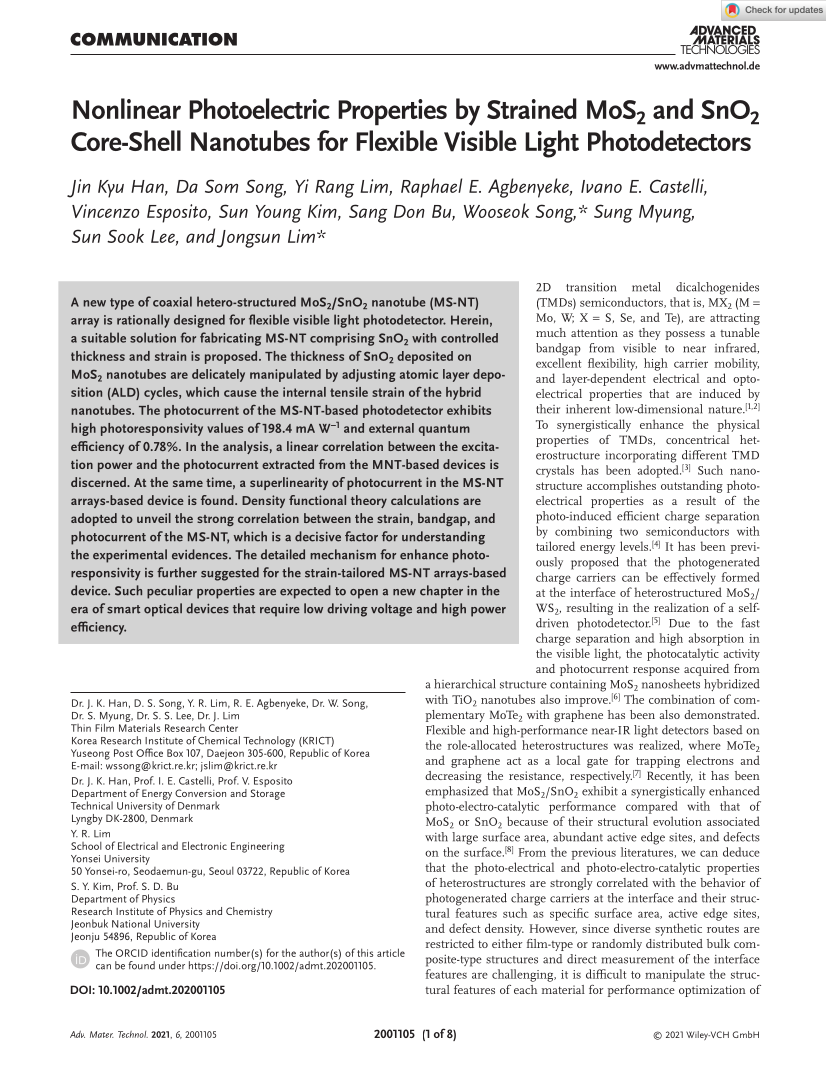 59. Nonlinear Photoelectric Properties by Strained MoS2 and SnO2 Core-Shell Nanotubes for Flexible Visible Light Photodetectors, J. K. Han, D. S. Song, Y. R. Lim, R. E. Agbenyeke, I. E. Castelli, V. Esposito, S. Y. Kim, S. D. Bu, W. Song, S. Myung, S. S. Lee, and J. Lim, Adv. Mater. Technol. 6, 2001105 (2021).
59. Nonlinear Photoelectric Properties by Strained MoS2 and SnO2 Core-Shell Nanotubes for Flexible Visible Light Photodetectors, J. K. Han, D. S. Song, Y. R. Lim, R. E. Agbenyeke, I. E. Castelli, V. Esposito, S. Y. Kim, S. D. Bu, W. Song, S. Myung, S. S. Lee, and J. Lim, Adv. Mater. Technol. 6, 2001105 (2021).
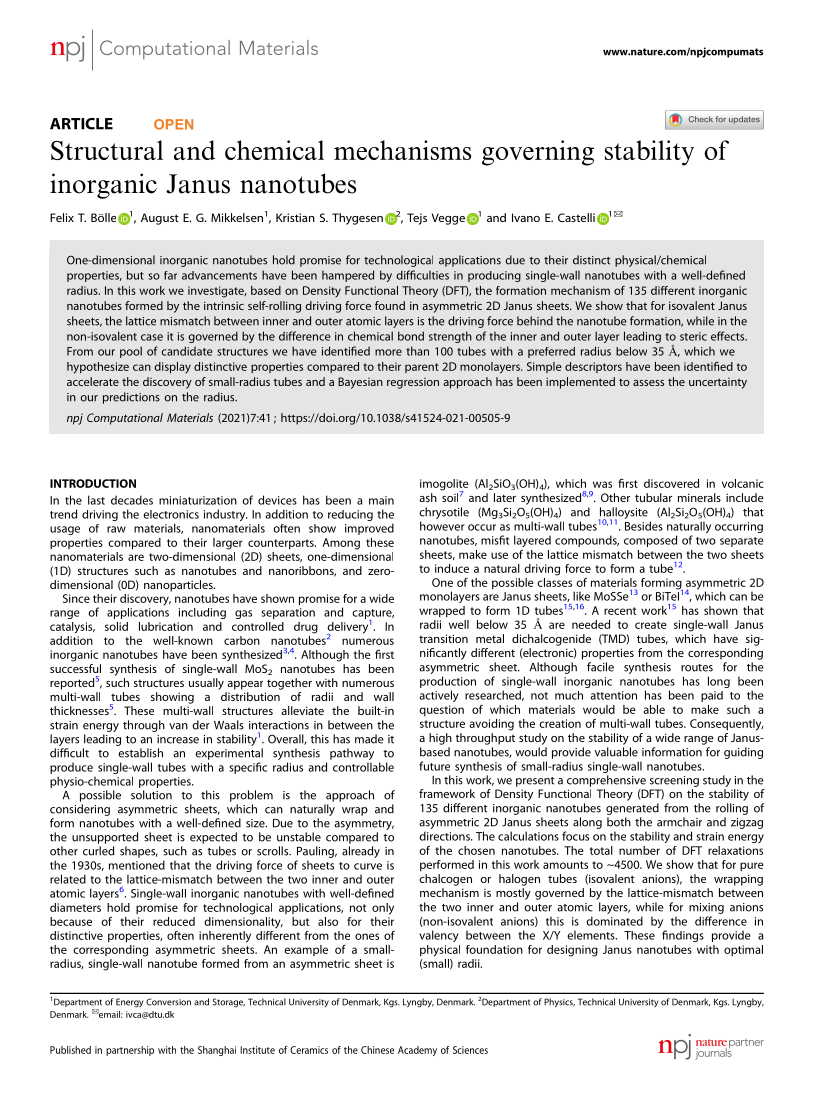 58. Structural and Chemical Mechanisms Governing Stability of Inorganic Janus Nanotubes, F. T. Bölle, A. E. G. Mikkelsen, K. S. Thygesen, T. Vegge, and I. E. Castelli, npj Computational Materials 7, 41 (2021).
58. Structural and Chemical Mechanisms Governing Stability of Inorganic Janus Nanotubes, F. T. Bölle, A. E. G. Mikkelsen, K. S. Thygesen, T. Vegge, and I. E. Castelli, npj Computational Materials 7, 41 (2021).
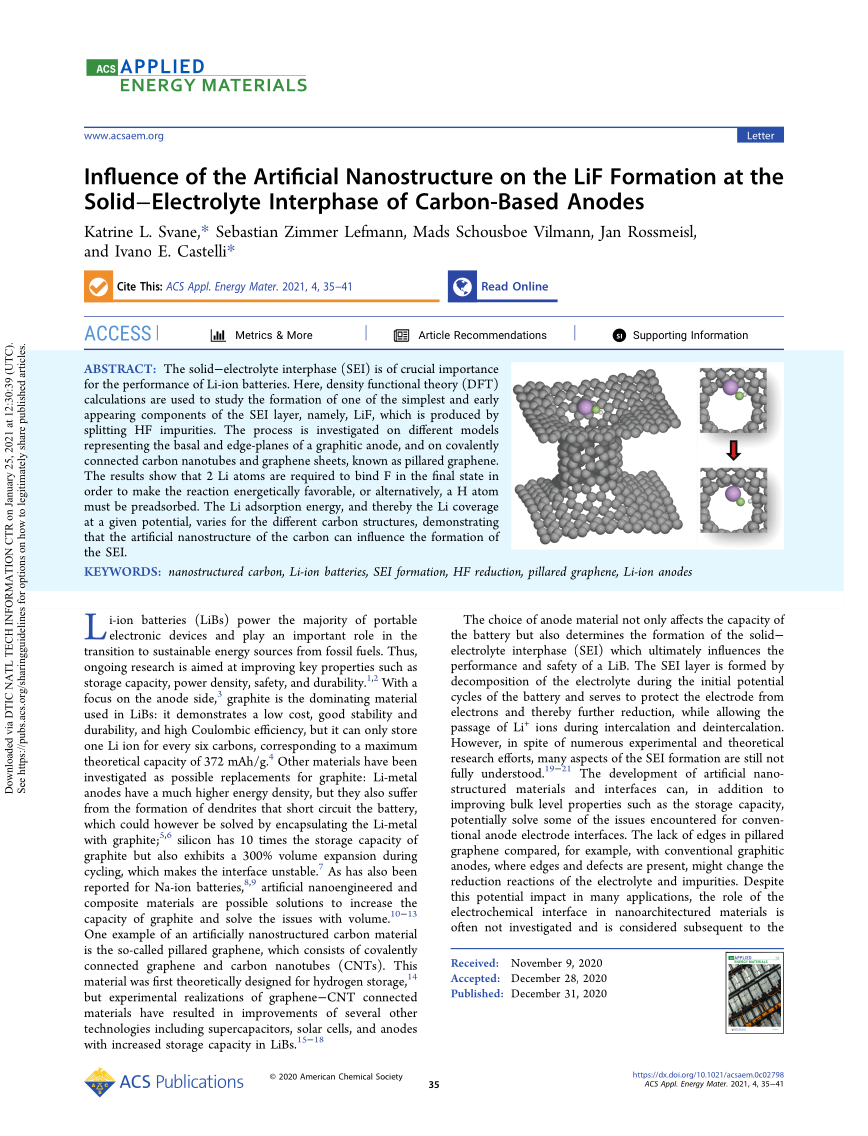 57. Influence of the Artificial Nanostructure on the LiF Formation at the Solid-Electrolyte Interphase of Carbon-Based Anodes, K. L. Svane, S. Z. Lefmann, M. S. Vilmann, J. Rossmeisl, and I. E. Castelli, ACS Appl. Energy Mater. 4, 35 (2021).
57. Influence of the Artificial Nanostructure on the LiF Formation at the Solid-Electrolyte Interphase of Carbon-Based Anodes, K. L. Svane, S. Z. Lefmann, M. S. Vilmann, J. Rossmeisl, and I. E. Castelli, ACS Appl. Energy Mater. 4, 35 (2021).
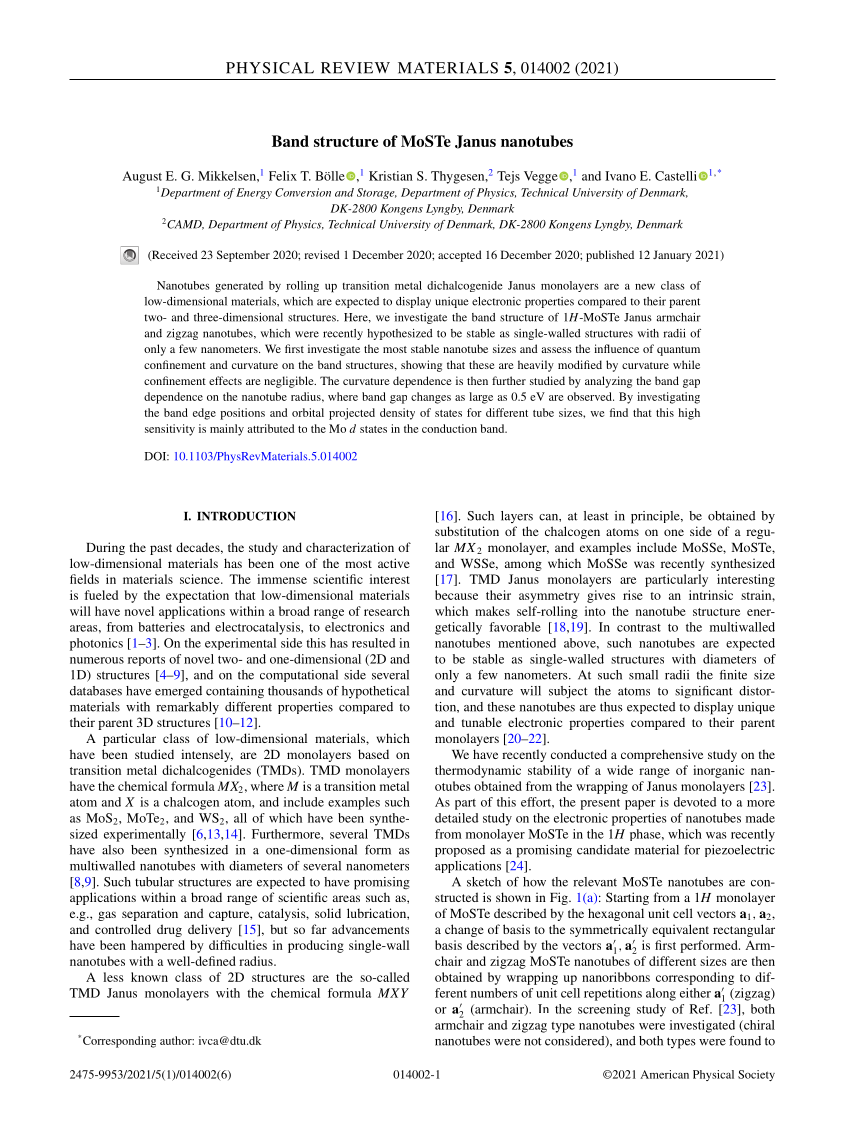 56. Band Structure of MoSTe Janus Nanotubes, A. E. G. Mikkelsen, F. T. Bölle, K. S. Thygesen, T. Vegge, and I. E. Castelli, Phys. Rev. Materials 5, 014002 (2021).
56. Band Structure of MoSTe Janus Nanotubes, A. E. G. Mikkelsen, F. T. Bölle, K. S. Thygesen, T. Vegge, and I. E. Castelli, Phys. Rev. Materials 5, 014002 (2021).
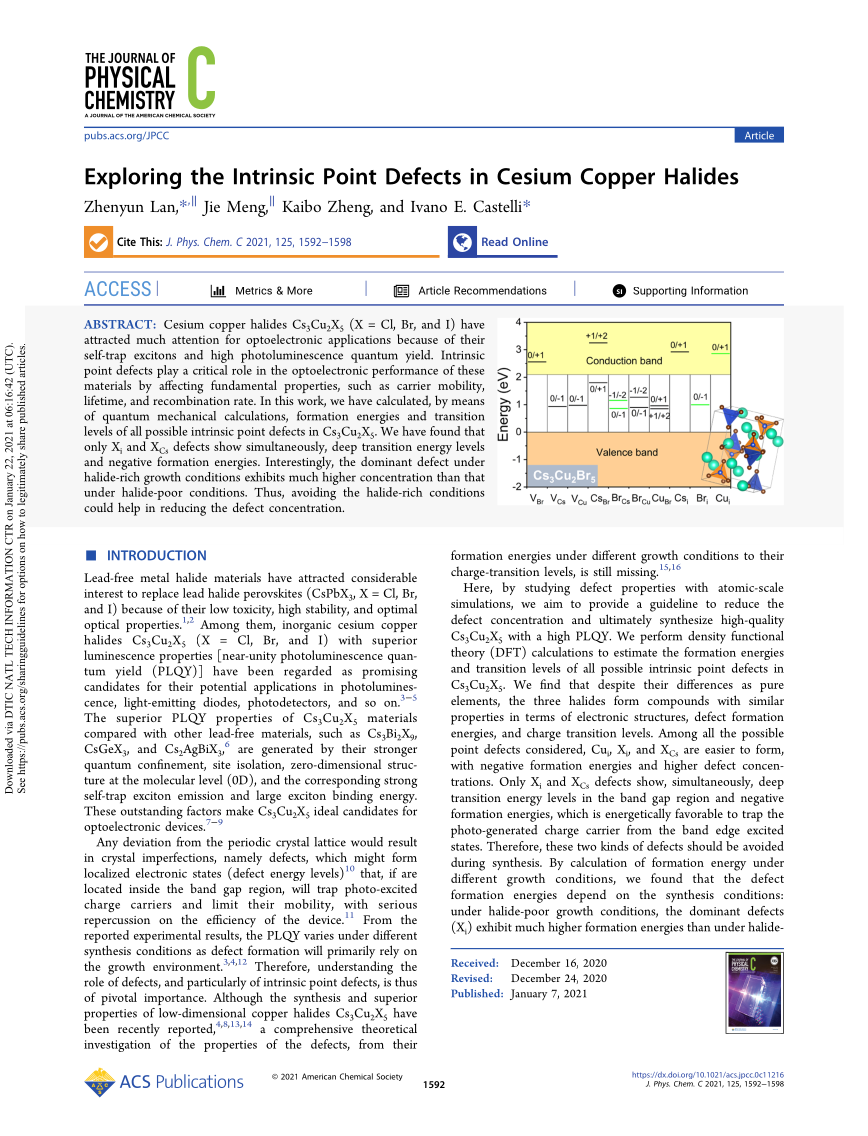 55. Exploring the Intrinsic Point Defects in Cesium Copper Halides, Z. Lan, J. Meng, K. Zhang, and I. E. Castelli, J. Phys. Chem C. 125, 1592 (2021).
55. Exploring the Intrinsic Point Defects in Cesium Copper Halides, Z. Lan, J. Meng, K. Zhang, and I. E. Castelli, J. Phys. Chem C. 125, 1592 (2021).
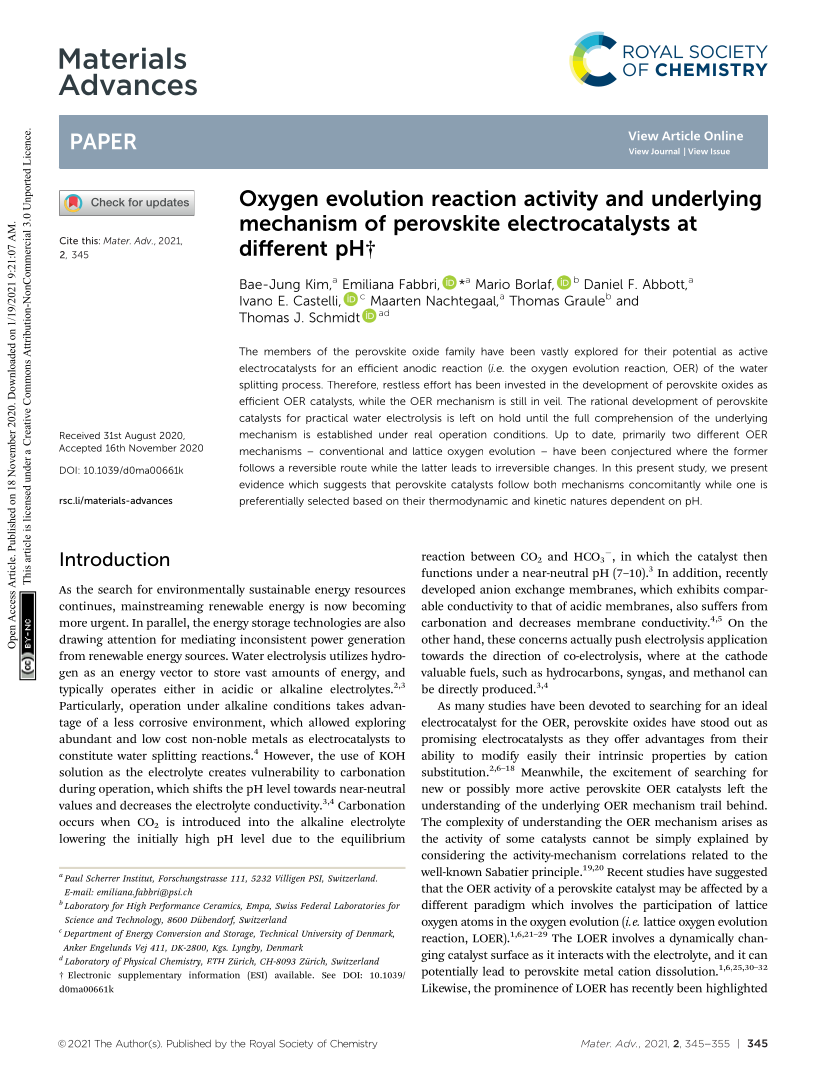 54. Oxygen Evolution Reaction Activity and Underlying Mechanism of Perovskite Electrocatalysts at Different pH, B.-J. Kim, E. Fabbri, M. Borlaf, D. F. Abbott, I. E. Castelli, M. Nachtegaal, T. Graule, and T. J. Schmidt, Mater. Adv. 2, 345 (2021).
54. Oxygen Evolution Reaction Activity and Underlying Mechanism of Perovskite Electrocatalysts at Different pH, B.-J. Kim, E. Fabbri, M. Borlaf, D. F. Abbott, I. E. Castelli, M. Nachtegaal, T. Graule, and T. J. Schmidt, Mater. Adv. 2, 345 (2021).
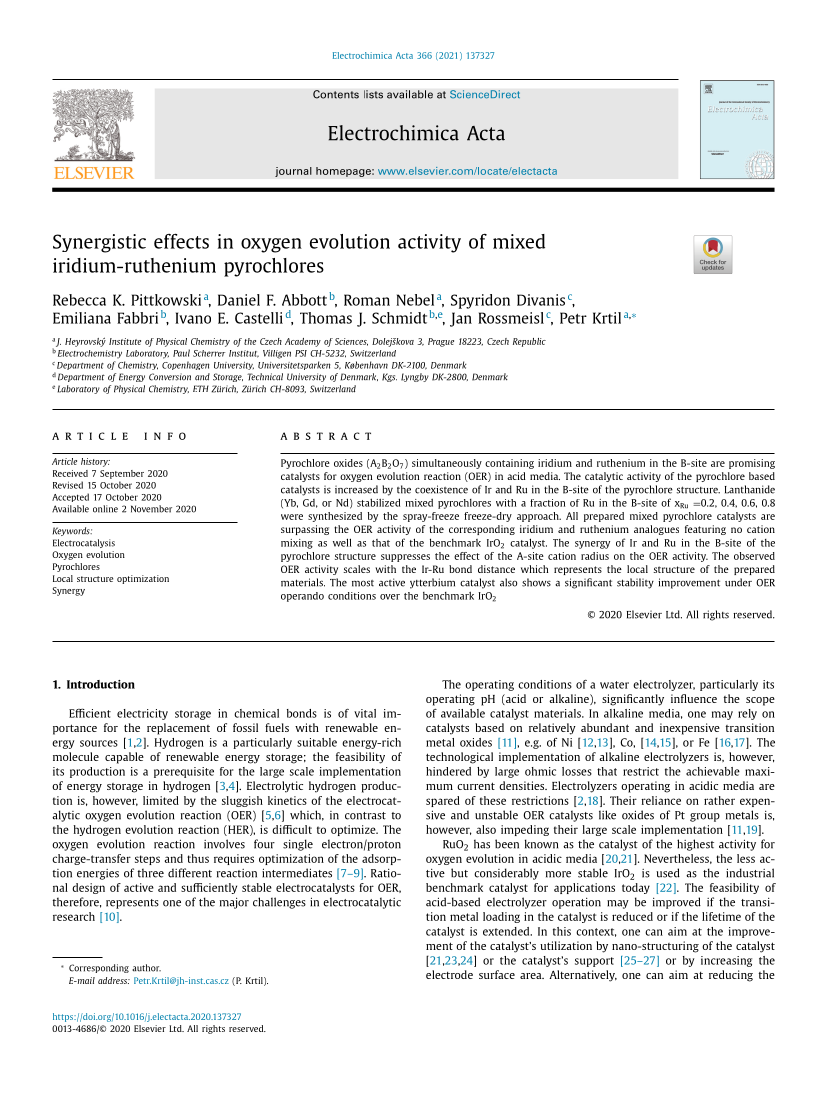 53. Synergistic Effects in Oxygen Evolution Activity of Mixed Iridium-Ruthenium Pyrochlores, R. K. Pittkowski, D. F. Abbott, R. Nebel, S. Divanis, E. Fabbri, I. E. Castelli d , T. J. Schmidt, J. Rossmeisl, and P. Krtil, Electrochimica Acta 366, 137327 (2021).
53. Synergistic Effects in Oxygen Evolution Activity of Mixed Iridium-Ruthenium Pyrochlores, R. K. Pittkowski, D. F. Abbott, R. Nebel, S. Divanis, E. Fabbri, I. E. Castelli d , T. J. Schmidt, J. Rossmeisl, and P. Krtil, Electrochimica Acta 366, 137327 (2021).
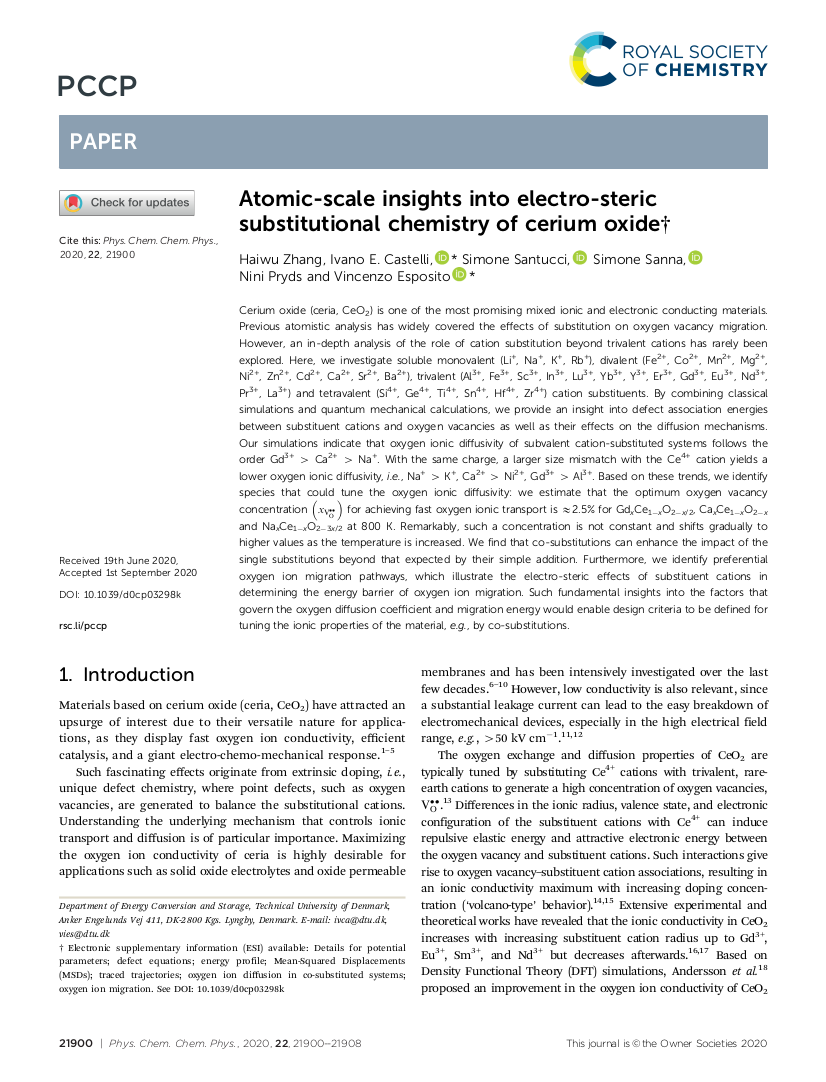 52. Atomic-scale Insights into Electro-steric Substitutional Chemistry of Cerium Oxide, H. Zhang, I. E. Castelli, S. Santucci, S. Sanna, N. Pryds, and V. Esposito, Phys. Chem. Chem. Phys. 22, 21900 (2020).
52. Atomic-scale Insights into Electro-steric Substitutional Chemistry of Cerium Oxide, H. Zhang, I. E. Castelli, S. Santucci, S. Sanna, N. Pryds, and V. Esposito, Phys. Chem. Chem. Phys. 22, 21900 (2020).
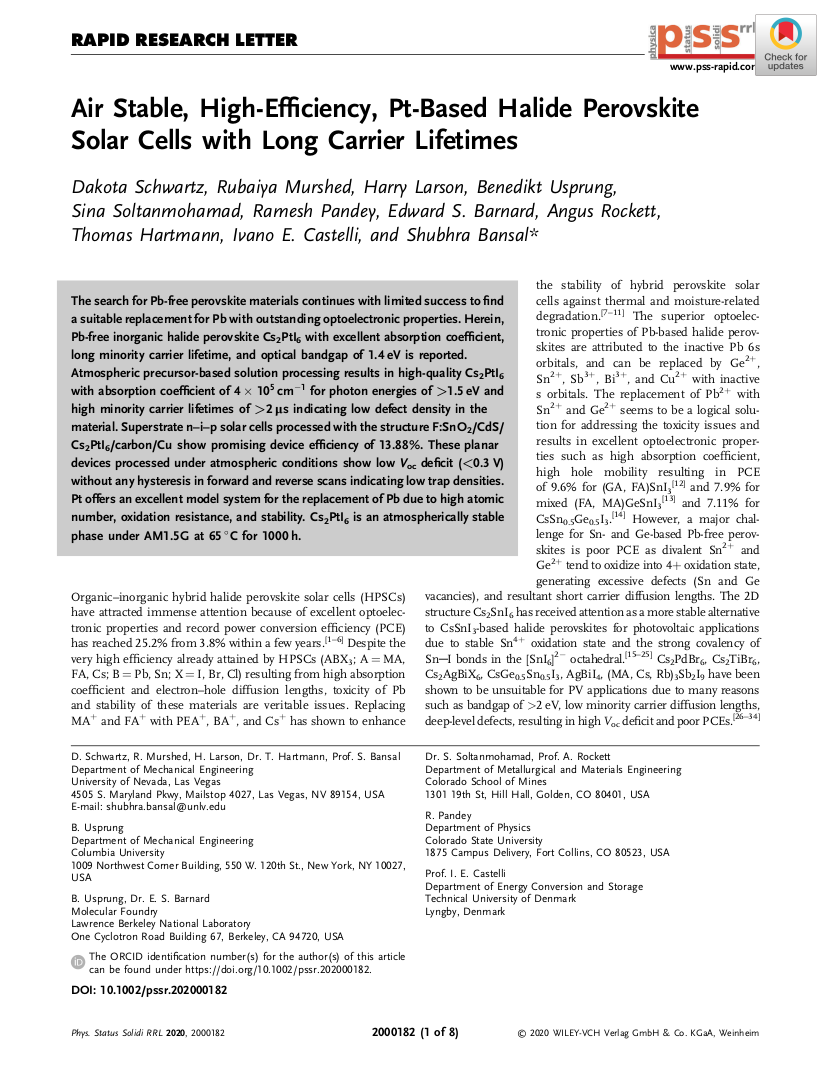 51. Air Stable, High-Efficiency, Pt-Based Halide Perovskite Solar Cells with Long Carrier Lifetimes, D. Schwartz, R. Murshed, H. Larson, B. Usprung, S. Soltanmohamad, R. Pandey, E. S. Barnard, A. Rockett, T. Hartmann, I. E. Castelli, and S. Bansal, Phys. Status Solidi RRL 2020, 2000182 (2020).
51. Air Stable, High-Efficiency, Pt-Based Halide Perovskite Solar Cells with Long Carrier Lifetimes, D. Schwartz, R. Murshed, H. Larson, B. Usprung, S. Soltanmohamad, R. Pandey, E. S. Barnard, A. Rockett, T. Hartmann, I. E. Castelli, and S. Bansal, Phys. Status Solidi RRL 2020, 2000182 (2020).
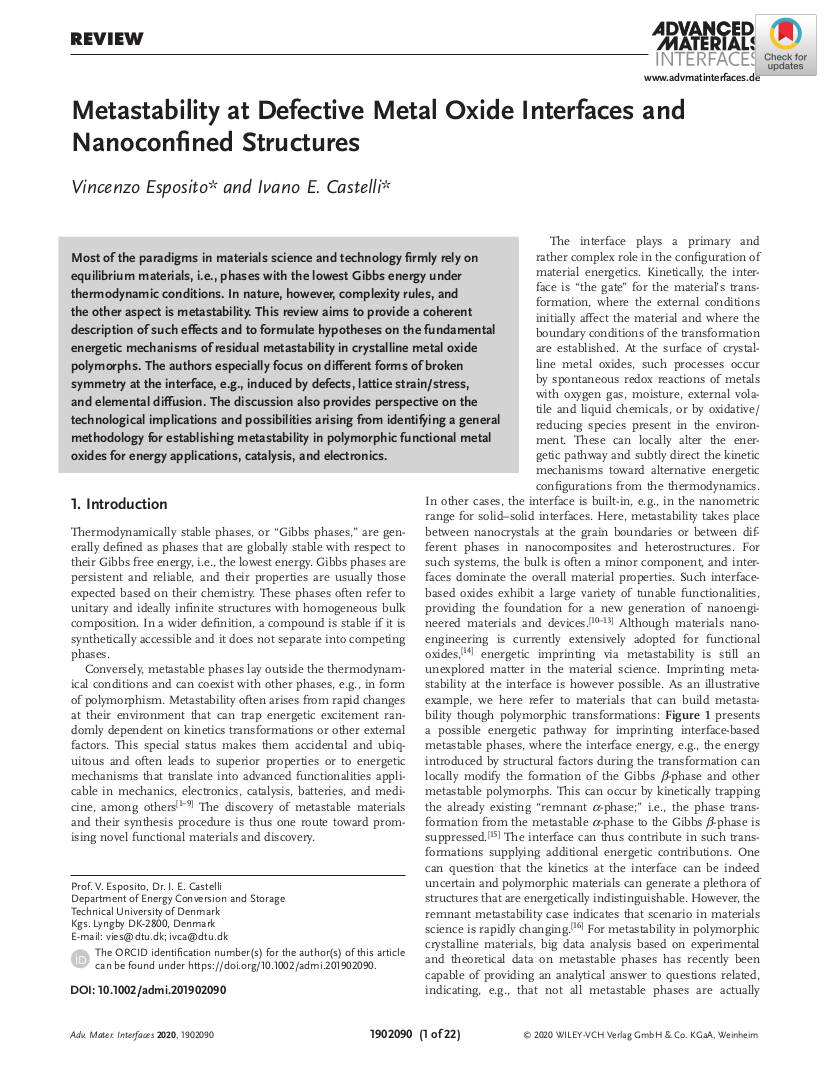 50. Metastability at Defective Metal Oxide Interfaces and Nanoconfined Structures, V. Esposito and I. E. Castelli, Adv. Mater. Interfaces 2020, 1902090 (2020).
50. Metastability at Defective Metal Oxide Interfaces and Nanoconfined Structures, V. Esposito and I. E. Castelli, Adv. Mater. Interfaces 2020, 1902090 (2020).
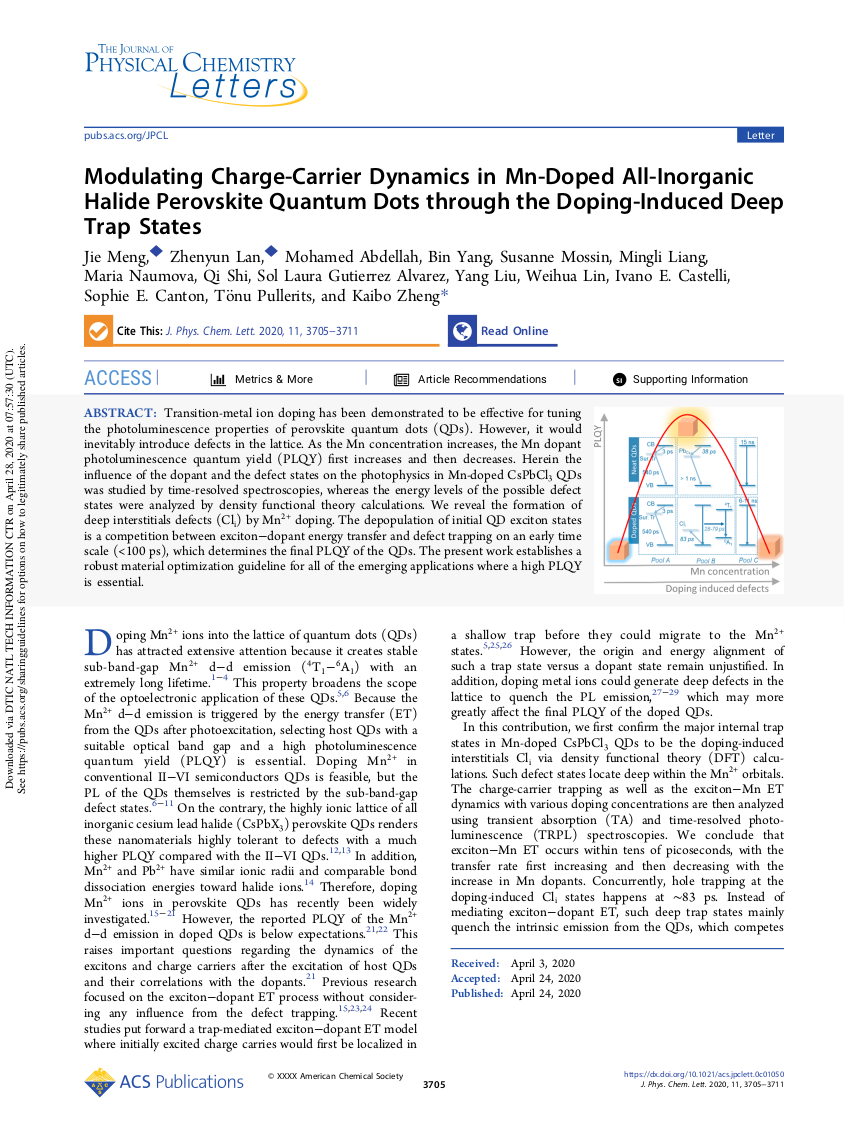 49. Modulating Charge-Carrier Dynamics in Mn-Doped All-Inorganic Halide Perovskite Quantum Dots through the Doping-Induced Deep Trap States, J. Meng, Z. Lan, M. Abdellah, B. Yang, S. Mossin, M. Liang, M. Naumova, Q. Shi, S. L. Gutierrez Alvarez, Y. Liu, W. Lin, I. E. Castelli, S. E. Canton, T. Pullerits, and K. Zheng, J. Phys. Chem. Lett. 11, 3705 (2020).
49. Modulating Charge-Carrier Dynamics in Mn-Doped All-Inorganic Halide Perovskite Quantum Dots through the Doping-Induced Deep Trap States, J. Meng, Z. Lan, M. Abdellah, B. Yang, S. Mossin, M. Liang, M. Naumova, Q. Shi, S. L. Gutierrez Alvarez, Y. Liu, W. Lin, I. E. Castelli, S. E. Canton, T. Pullerits, and K. Zheng, J. Phys. Chem. Lett. 11, 3705 (2020).
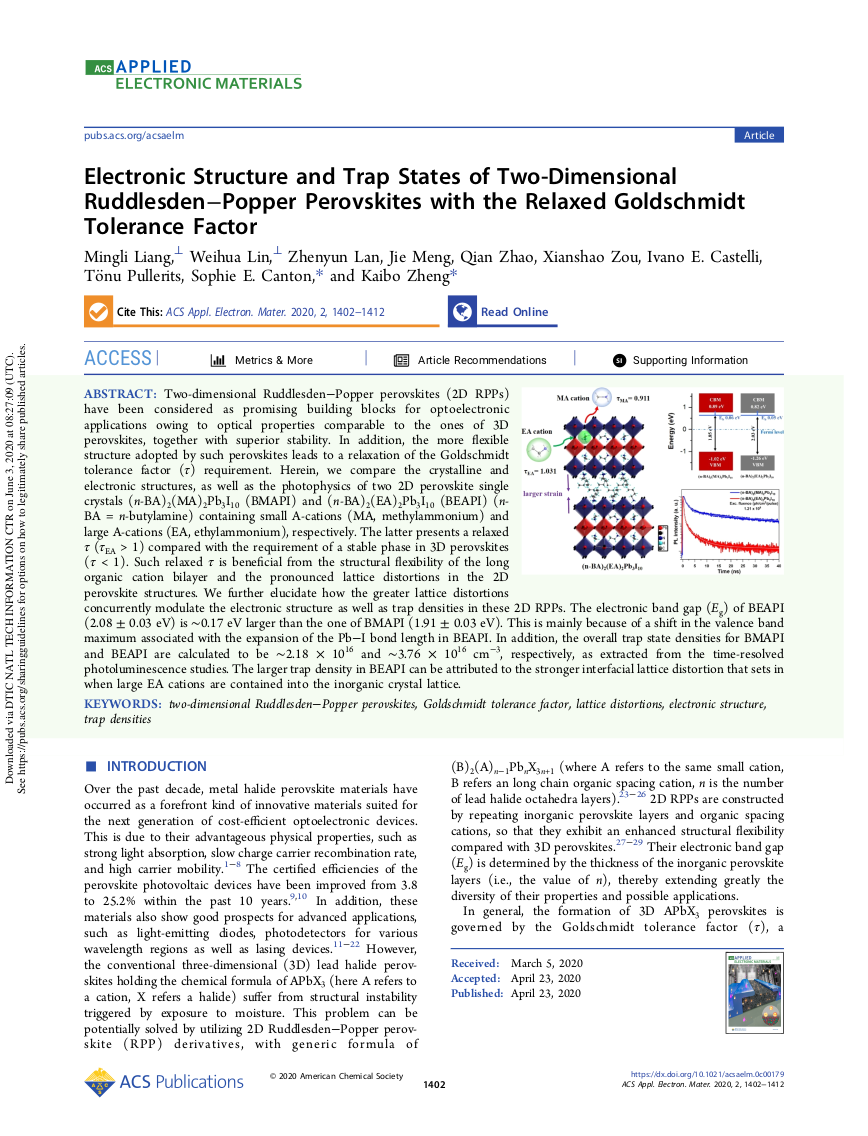 48. Electronic Structure and Trap-States of Two-Dimensional Ruddlesden-Popper Perovskites with Relaxed Goldschmidt Tolerance Factor, M. Liang, W. Lin, Z. Lan, J. Meng, Q. Zhao, X. Zou, I. E. Castelli, T. Pullerits, S. E. Canton, and K. Zheng, ACS Applied Electronic Materials 2, 1402 (2020).
48. Electronic Structure and Trap-States of Two-Dimensional Ruddlesden-Popper Perovskites with Relaxed Goldschmidt Tolerance Factor, M. Liang, W. Lin, Z. Lan, J. Meng, Q. Zhao, X. Zou, I. E. Castelli, T. Pullerits, S. E. Canton, and K. Zheng, ACS Applied Electronic Materials 2, 1402 (2020).
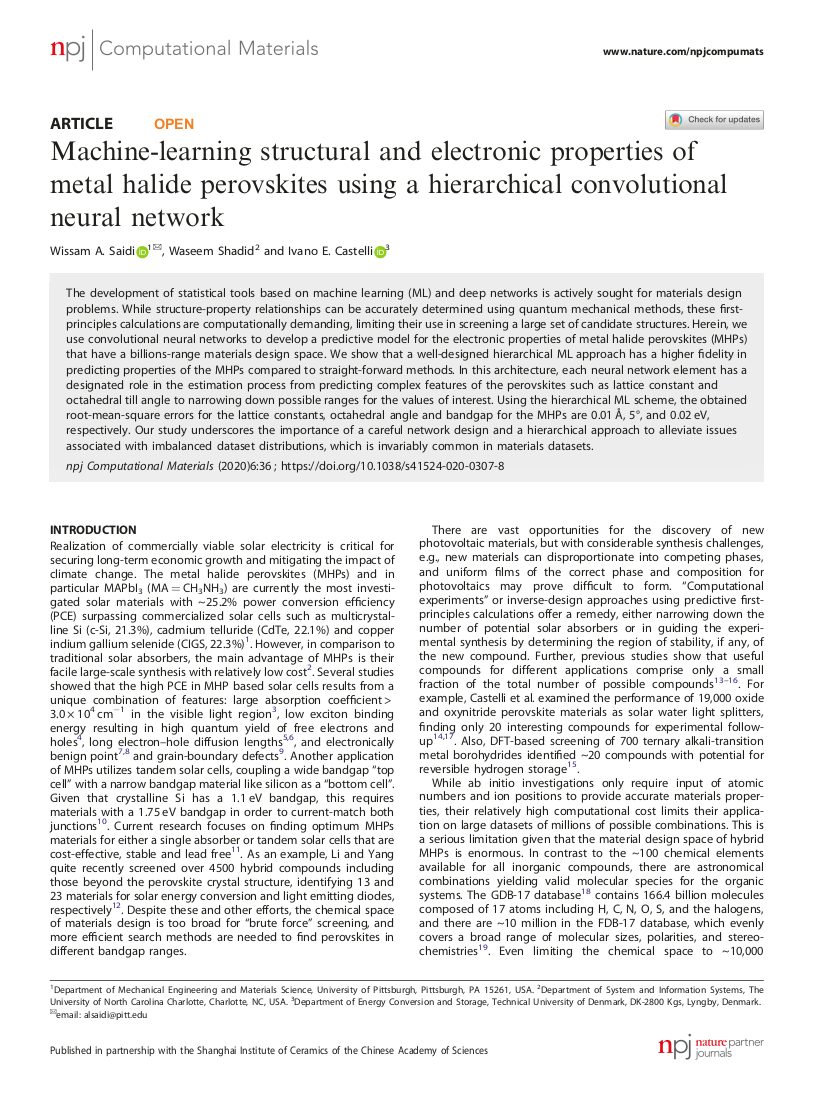 47. Machine-learning Structural and Electronic Properties of Metal Halide Perovskites Using a Hierarchical Convolutional Neural Network, W. A. Saidi, W. Shadid, and I. E. Castelli, npj Computational Materials 6, 36 (2020).
47. Machine-learning Structural and Electronic Properties of Metal Halide Perovskites Using a Hierarchical Convolutional Neural Network, W. A. Saidi, W. Shadid, and I. E. Castelli, npj Computational Materials 6, 36 (2020).
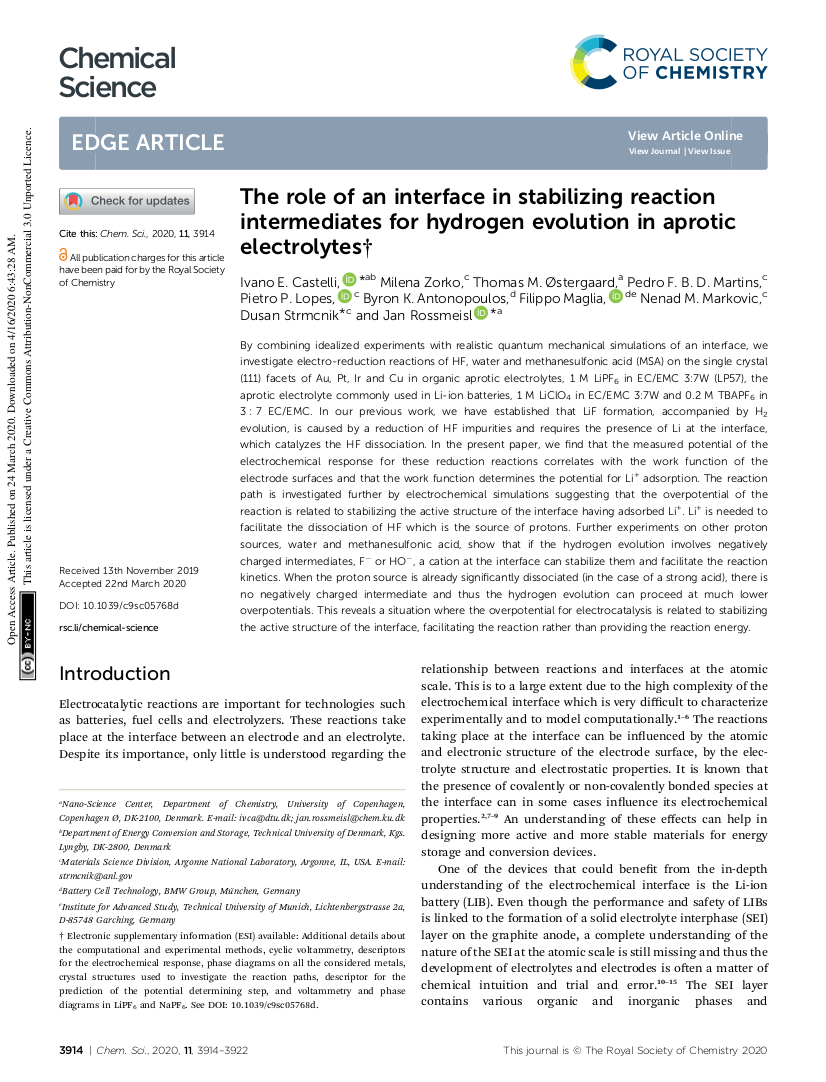 46. The Role of an Interface in Stabilizing Reaction Intermediates for Hydrogen Evolution in Aprotic Electrolytes, I. E. Castelli, M. Zorko, T. M. Østergaard, P. F. B. D. Martins, P. P. Lopes, B. K. Antonopoulos, F. Maglia, N. M. Markovic, D. Strmcnik, and J. Rossmeisl, Chem. Sci. 11, 3914 (2020).
46. The Role of an Interface in Stabilizing Reaction Intermediates for Hydrogen Evolution in Aprotic Electrolytes, I. E. Castelli, M. Zorko, T. M. Østergaard, P. F. B. D. Martins, P. P. Lopes, B. K. Antonopoulos, F. Maglia, N. M. Markovic, D. Strmcnik, and J. Rossmeisl, Chem. Sci. 11, 3914 (2020).
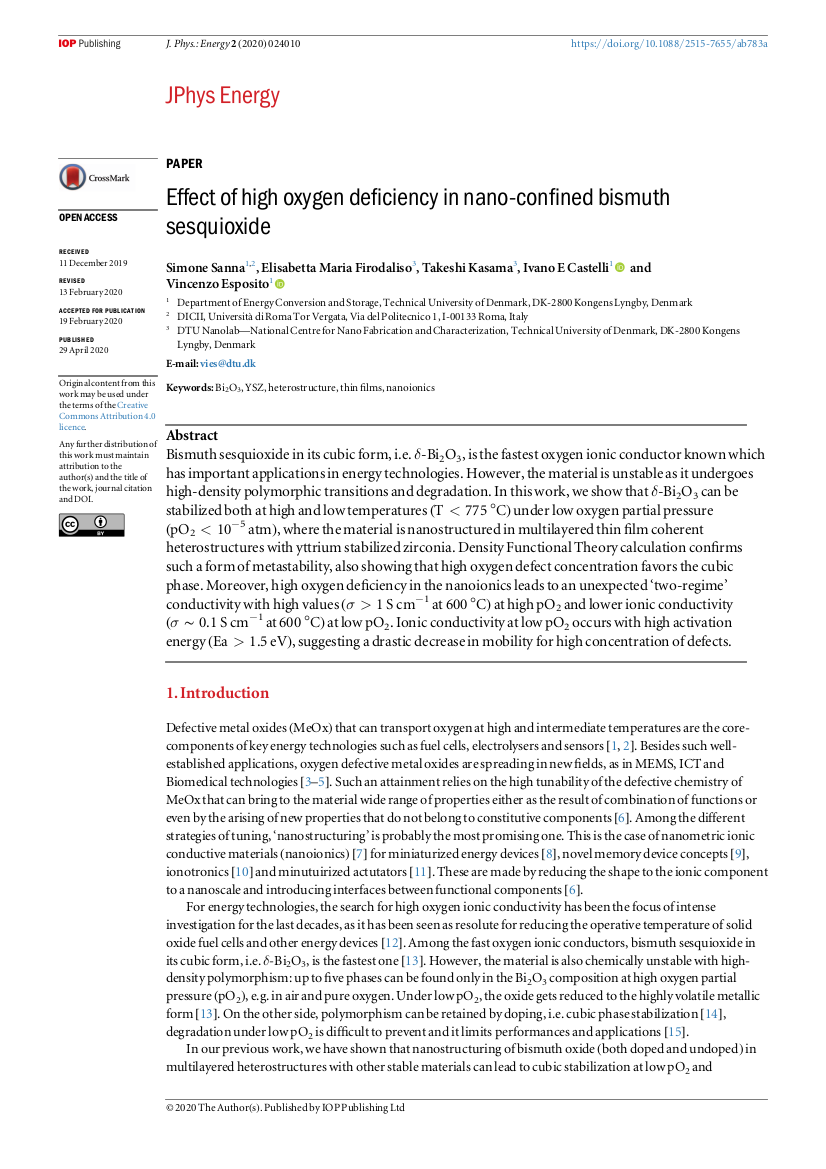 45. Effect of High Oxygen Deficiency in Nano-confined Bismuth Sesquioxide, S.Sanna, E. Fiordaliso, T. Kasama, I. E. Castelli, and V. Esposito, J. Phys.: Energy 2, 024010 (2020).
45. Effect of High Oxygen Deficiency in Nano-confined Bismuth Sesquioxide, S.Sanna, E. Fiordaliso, T. Kasama, I. E. Castelli, and V. Esposito, J. Phys.: Energy 2, 024010 (2020).
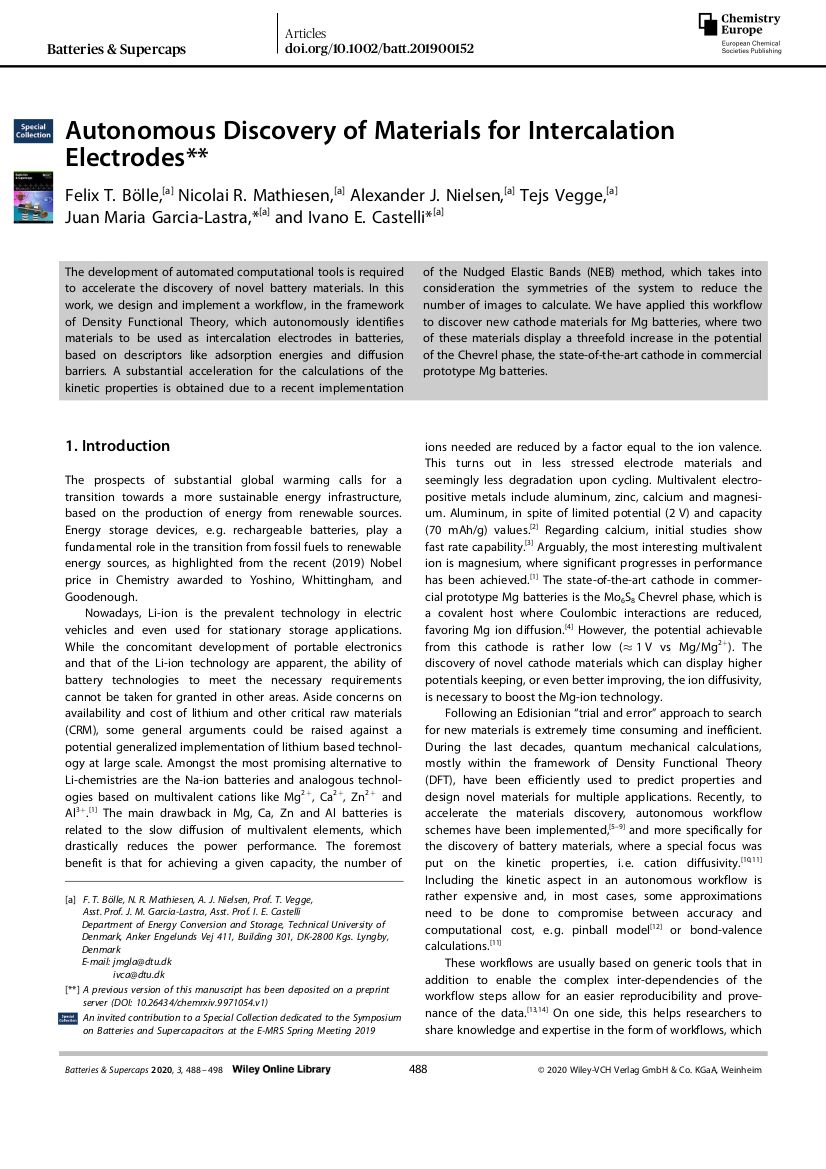 44. Autonomous Discovery of Materials for Intercalation Electrodes, F. T. Bölle, N. R. Mathiesen, A. J. Nielsen, T. Vegge, J. M. García-Lastra, and I. E. Castelli, Batteries & Supercaps 3, 488 (2020).
44. Autonomous Discovery of Materials for Intercalation Electrodes, F. T. Bölle, N. R. Mathiesen, A. J. Nielsen, T. Vegge, J. M. García-Lastra, and I. E. Castelli, Batteries & Supercaps 3, 488 (2020).
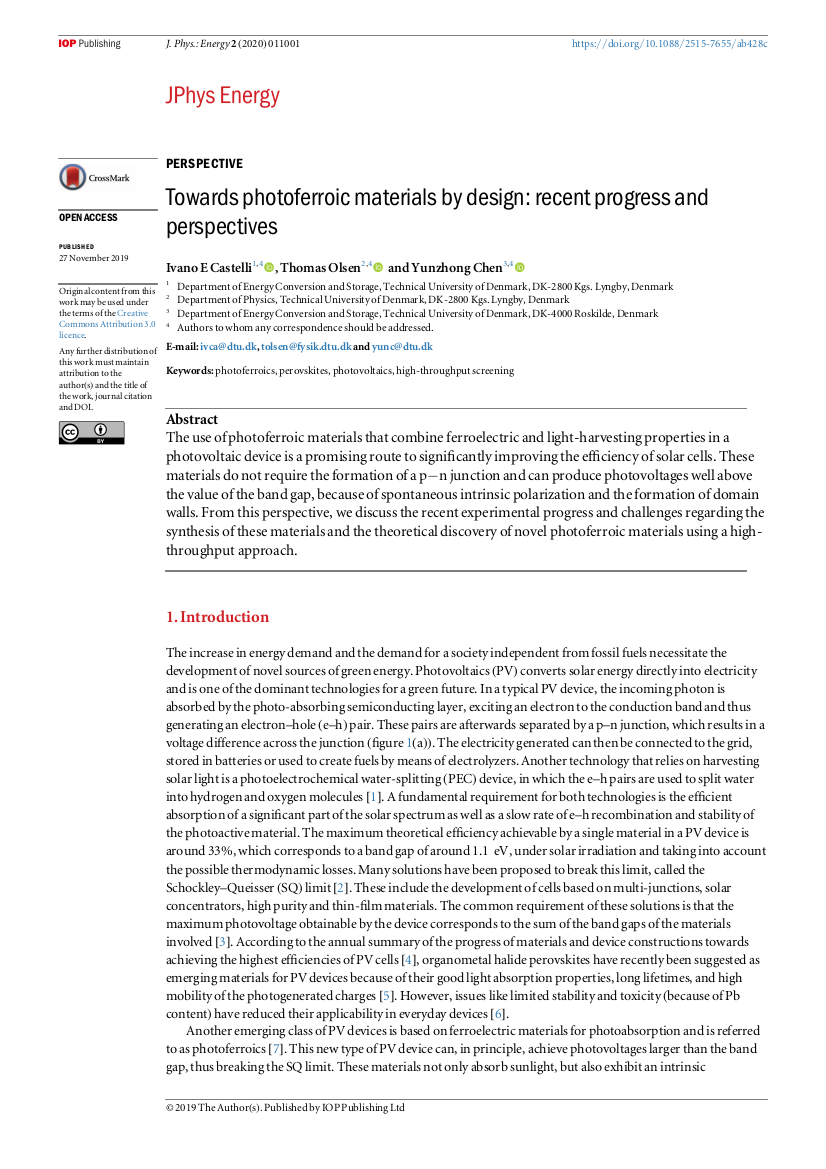 43. Towards Photoferroic Materials by Design: Recent Progress and Perspectives, I. E. Castelli, T. Olsen, and Y. Chen, J. Phys.: Energy 2, 011001 (2020).
43. Towards Photoferroic Materials by Design: Recent Progress and Perspectives, I. E. Castelli, T. Olsen, and Y. Chen, J. Phys.: Energy 2, 011001 (2020).
 42. Yttrium Tantalum Oxynitride Multiphases as Photoanodes for Water Oxidation, W. Si, Z. P. Tehrani, F. Haydous, N. Marzari, I. E. Castelli, D. Pergolesi, and T. Lippert, J. Phys. Chem. C 123, 26211 (2019).
42. Yttrium Tantalum Oxynitride Multiphases as Photoanodes for Water Oxidation, W. Si, Z. P. Tehrani, F. Haydous, N. Marzari, I. E. Castelli, D. Pergolesi, and T. Lippert, J. Phys. Chem. C 123, 26211 (2019).
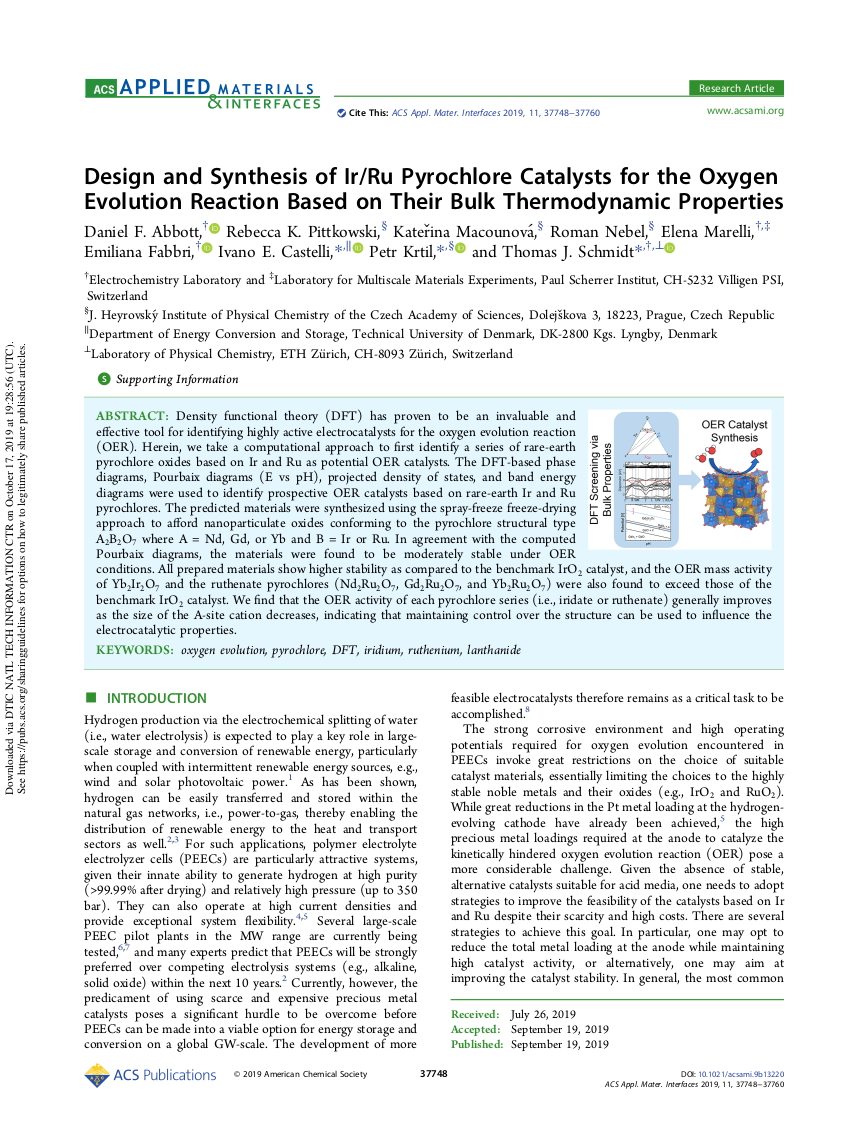 41. Design and Synthesis of Ir/Ru Pyrochlore Catalysts for the Oxygen Evolution Reaction Based on Their Bulk Thermodynamic Properties, D. F. Abbott, R. K. Pittkowski, K. Macounova, R. Nebel, E. Marelli, E. Fabbri, I. E. Castelli, P. Krtil, and T. J. Schmidt, ACS Appl. Mater. Interfaces 11, 37748(2019).
41. Design and Synthesis of Ir/Ru Pyrochlore Catalysts for the Oxygen Evolution Reaction Based on Their Bulk Thermodynamic Properties, D. F. Abbott, R. K. Pittkowski, K. Macounova, R. Nebel, E. Marelli, E. Fabbri, I. E. Castelli, P. Krtil, and T. J. Schmidt, ACS Appl. Mater. Interfaces 11, 37748(2019).
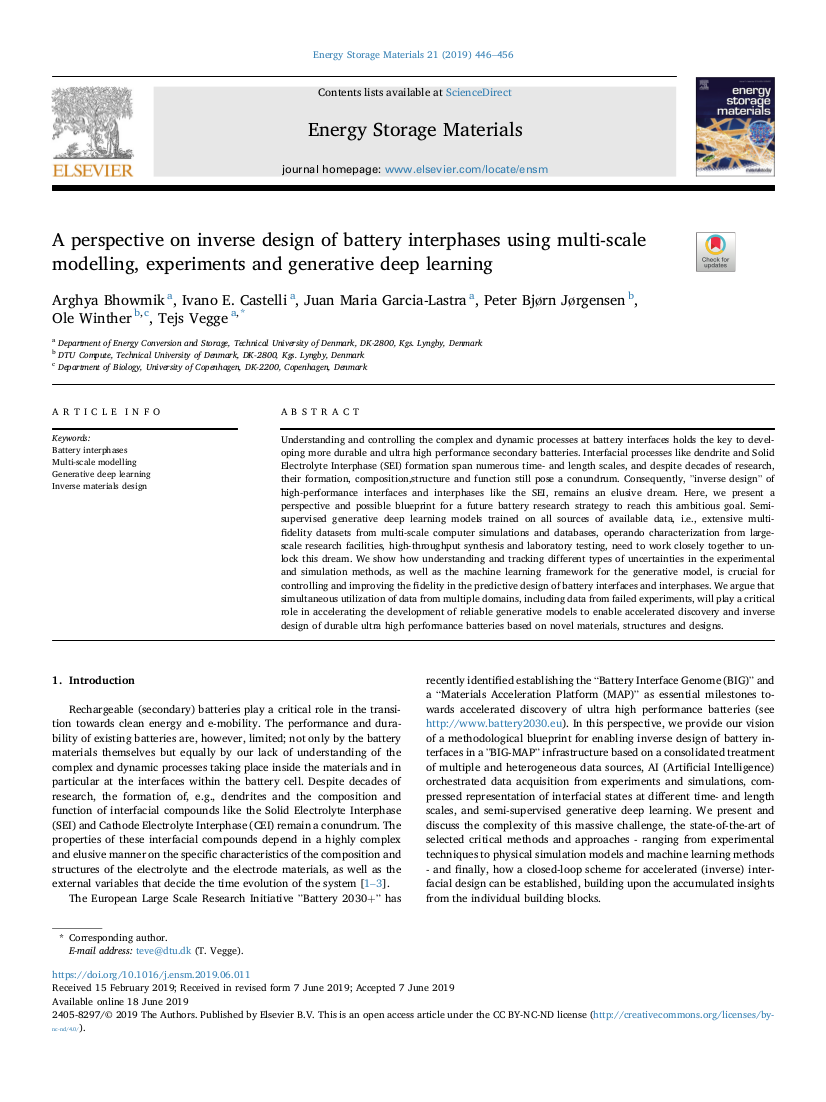 40. A Perspective on Inverse Design of Battery Interphases using Multi-scale Modelling, Experiments and Generative Deep Learning, A. Bhowmik, I. E. Castelli, J. M. García-Lastra, P. B. Jørgensen, O. Winther, and T. Vegge, Energy Storage Materials 21, 446 (2019).
40. A Perspective on Inverse Design of Battery Interphases using Multi-scale Modelling, Experiments and Generative Deep Learning, A. Bhowmik, I. E. Castelli, J. M. García-Lastra, P. B. Jørgensen, O. Winther, and T. Vegge, Energy Storage Materials 21, 446 (2019).
 39. Fe-Doping in Double Perovskite PrBaCo2(1-x)Fe2xO6-δ: Insights into Structural and Electronic Effects to Enhance Oxygen Evolution Catalyst Stability, B.-J. Kim, E. Fabbri, I. E. Castelli, M. Borlaf, T. Graule, M. Nachtegaal, and T. J. Schmidt, Catalysts 9, 263 (2019).
39. Fe-Doping in Double Perovskite PrBaCo2(1-x)Fe2xO6-δ: Insights into Structural and Electronic Effects to Enhance Oxygen Evolution Catalyst Stability, B.-J. Kim, E. Fabbri, I. E. Castelli, M. Borlaf, T. Graule, M. Nachtegaal, and T. J. Schmidt, Catalysts 9, 263 (2019).
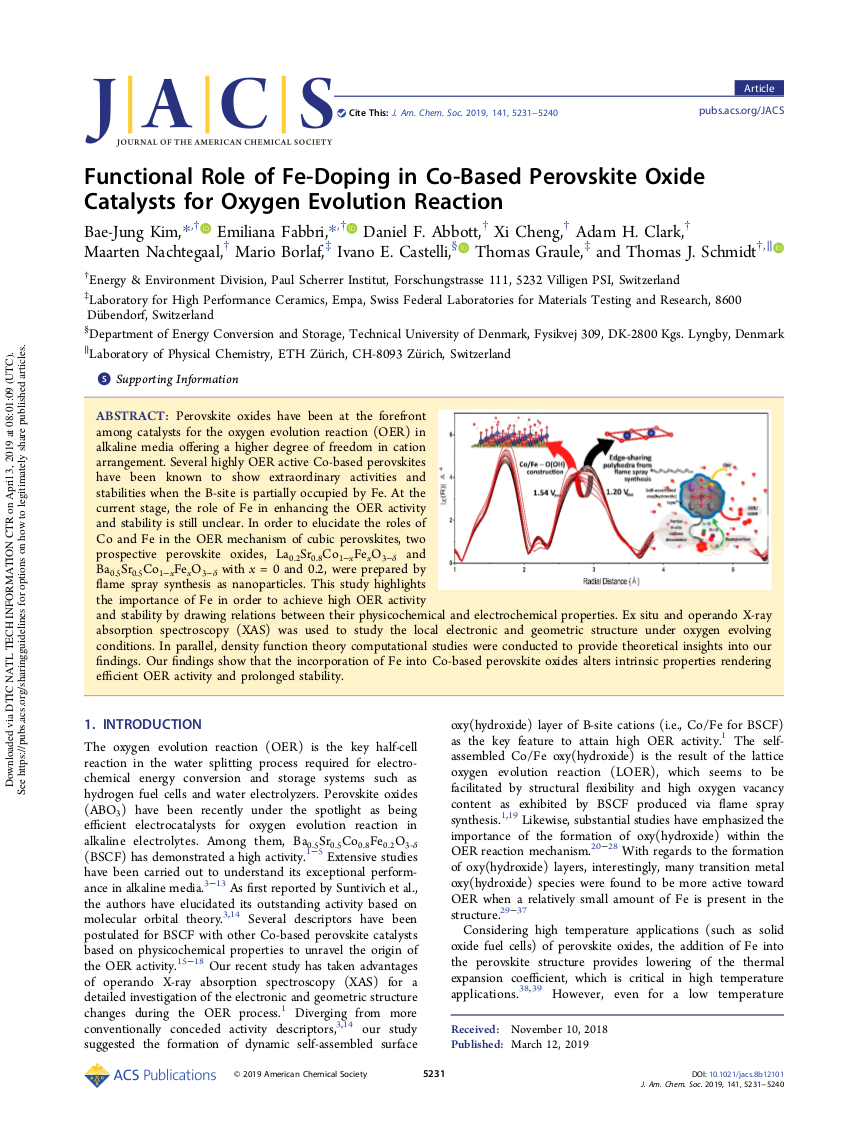 38. Functional Role of Fe-Doping in Co-Based Perovskite Oxide Catalysts for Oxygen Evolution Reaction, B.-J. Kim, E. Fabbri, D. F. Abbott, X. Cheng, A. H. Clark, M. Nachtegaal, M. Borlaf, I. E. Castelli, T. Graule, and T. J. Schmidt, J. Am. Chem. Soc. 141, 5231 (2019).
38. Functional Role of Fe-Doping in Co-Based Perovskite Oxide Catalysts for Oxygen Evolution Reaction, B.-J. Kim, E. Fabbri, D. F. Abbott, X. Cheng, A. H. Clark, M. Nachtegaal, M. Borlaf, I. E. Castelli, T. Graule, and T. J. Schmidt, J. Am. Chem. Soc. 141, 5231 (2019).
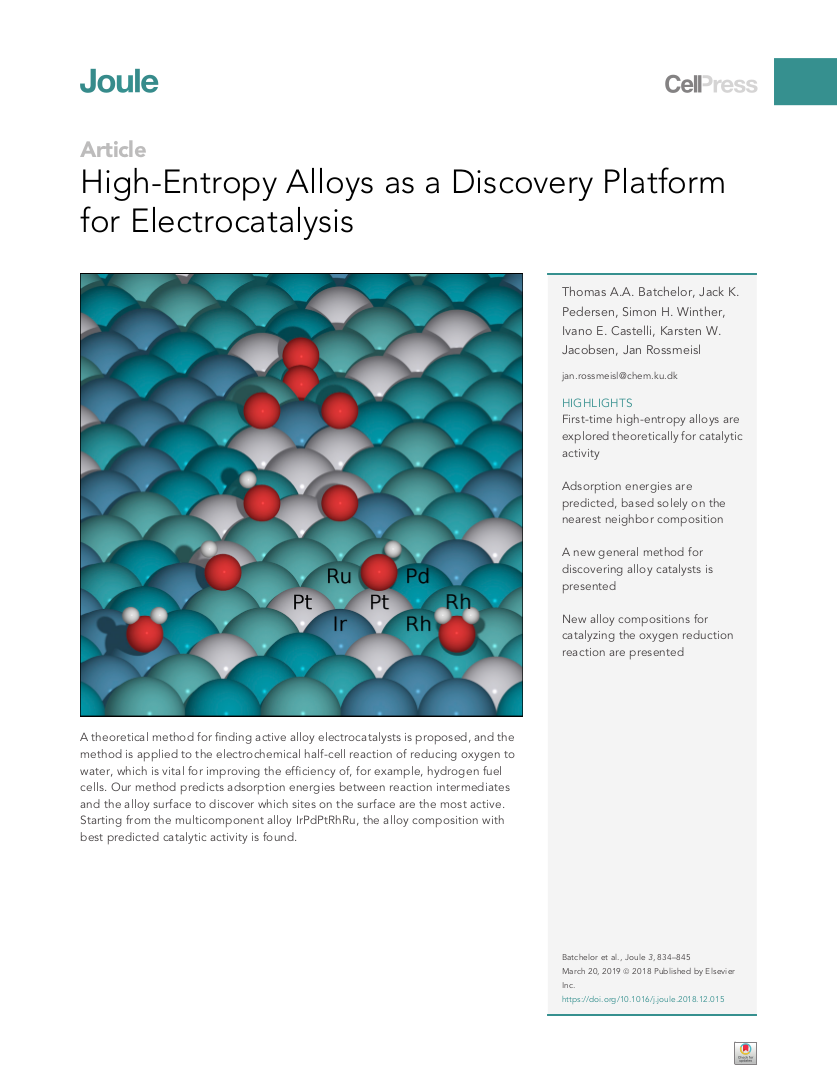 37. High-Entropy Alloys as a Discovery Platform for Electrocatalysis, T. A.A. Batchelor, J. K. Pedersen, S. H. Winther, I. E. Castelli, K. W. Jacobsen, and J. Rossmeisl, Joule 3, 1 (2019).
37. High-Entropy Alloys as a Discovery Platform for Electrocatalysis, T. A.A. Batchelor, J. K. Pedersen, S. H. Winther, I. E. Castelli, K. W. Jacobsen, and J. Rossmeisl, Joule 3, 1 (2019).
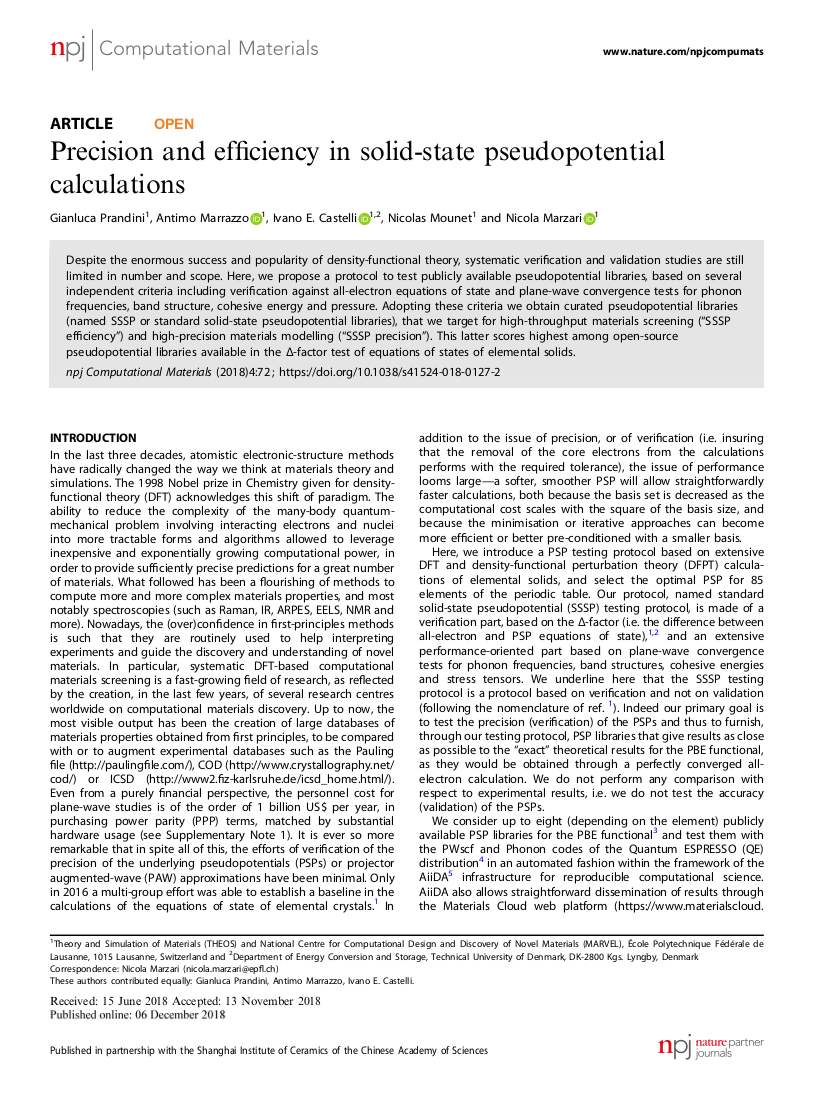 36. Precision and Efficiency in Solid-state Pseudopotential Calculations, G. Prandini, A. Marrazzo, I. E. Castelli, N. Mounet, and N. Marzari, npj Computational Materials 4, 72 (2018).
36. Precision and Efficiency in Solid-state Pseudopotential Calculations, G. Prandini, A. Marrazzo, I. E. Castelli, N. Mounet, and N. Marzari, npj Computational Materials 4, 72 (2018).
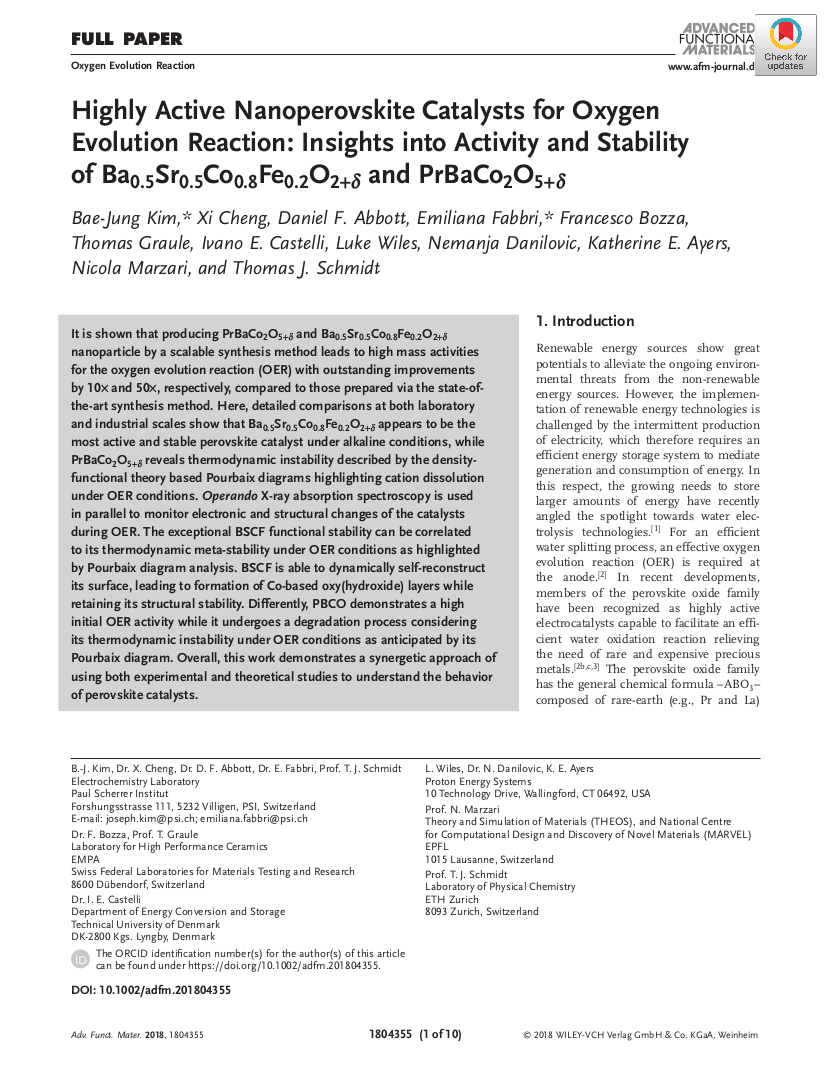 35. Highly Active Nanoperovskite Catalysts for Oxygen Evolution Reaction: Insights into Activity and Stability of Ba0.5Sr0.5Co0.8Fe0.2O2+δ and PrBaCo2O5+δ, B.-J. Kim, X. Cheng, D. Abbott, E. Fabbri, F. Bozza, T. Graule, I. E. Castelli, L. Wiles, N. Danilovic, K. E. Ayers, N. Marzari, and T. J. Schmidt, Advanced Functional Materials 28, 1804355 (2018).
35. Highly Active Nanoperovskite Catalysts for Oxygen Evolution Reaction: Insights into Activity and Stability of Ba0.5Sr0.5Co0.8Fe0.2O2+δ and PrBaCo2O5+δ, B.-J. Kim, X. Cheng, D. Abbott, E. Fabbri, F. Bozza, T. Graule, I. E. Castelli, L. Wiles, N. Danilovic, K. E. Ayers, N. Marzari, and T. J. Schmidt, Advanced Functional Materials 28, 1804355 (2018).
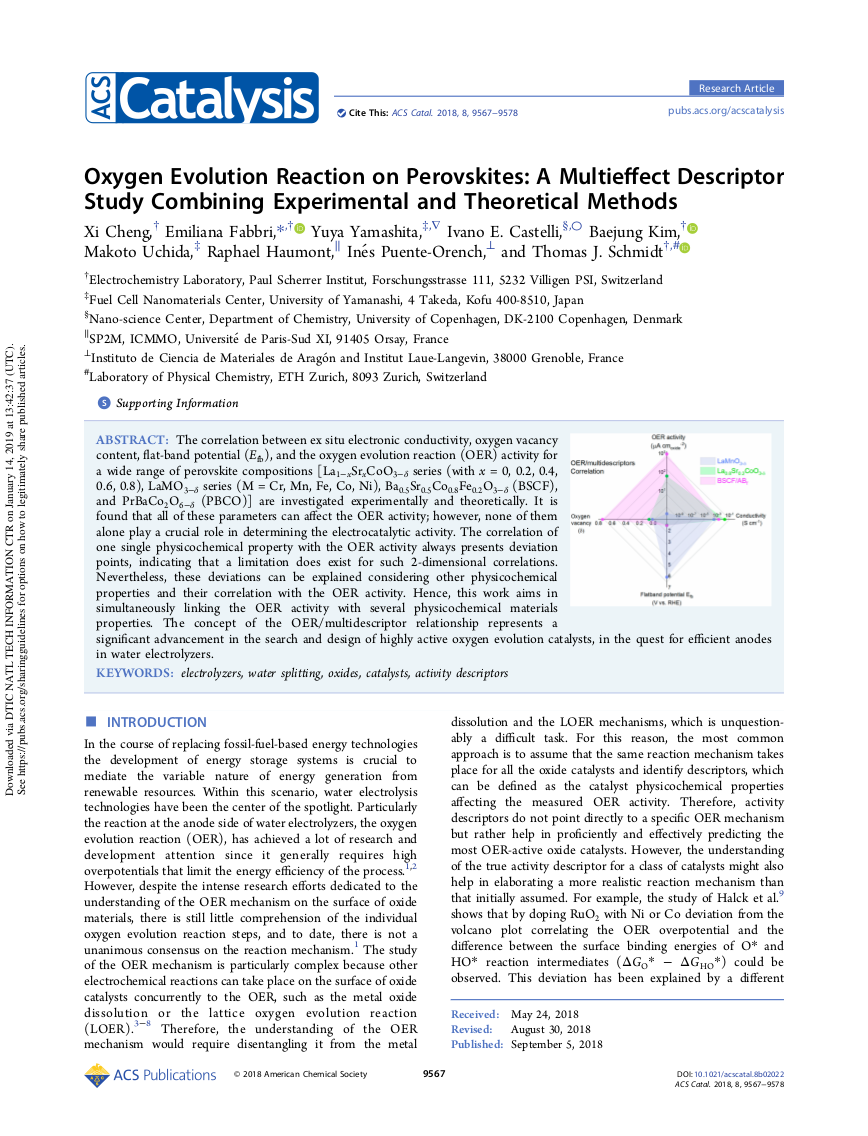 34. Oxygen Evolution Reaction on Perovskites: A Multieffect Descriptor Study Combining Experimental and Theoretical Methods, X. Cheng, E. Fabbri, Y. Yamashita,I. E. Castelli, B. Kim, M. Uchida, R. Haumont, I. Puente-Orench, and Thomas J. Schmidt, ACS Catal. 8, 9567 (2018).
34. Oxygen Evolution Reaction on Perovskites: A Multieffect Descriptor Study Combining Experimental and Theoretical Methods, X. Cheng, E. Fabbri, Y. Yamashita,I. E. Castelli, B. Kim, M. Uchida, R. Haumont, I. Puente-Orench, and Thomas J. Schmidt, ACS Catal. 8, 9567 (2018).
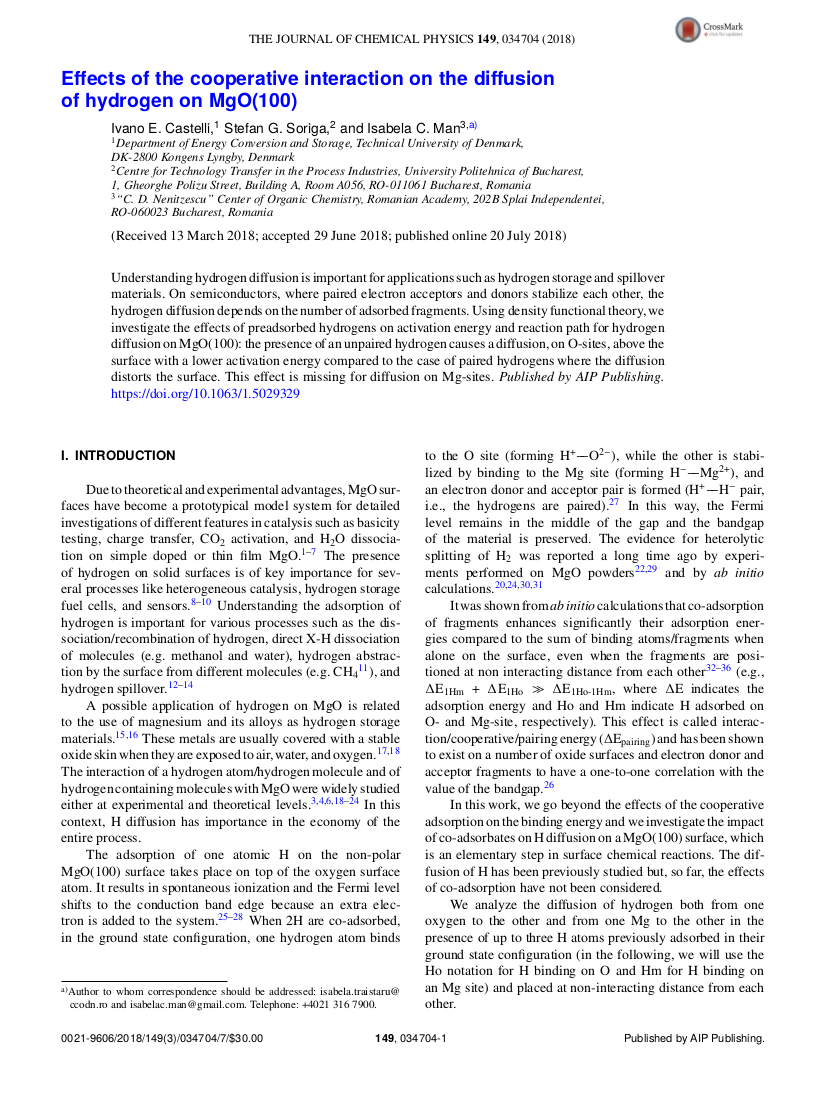 33. Effects of the Cooperative Interaction on the Diffusion of Hydrogen on MgO(100), I. E. Castelli, S. G. Soriga, and I. C. Man, J. Chem. Phys. 149, 034704 (2018).
33. Effects of the Cooperative Interaction on the Diffusion of Hydrogen on MgO(100), I. E. Castelli, S. G. Soriga, and I. C. Man, J. Chem. Phys. 149, 034704 (2018).
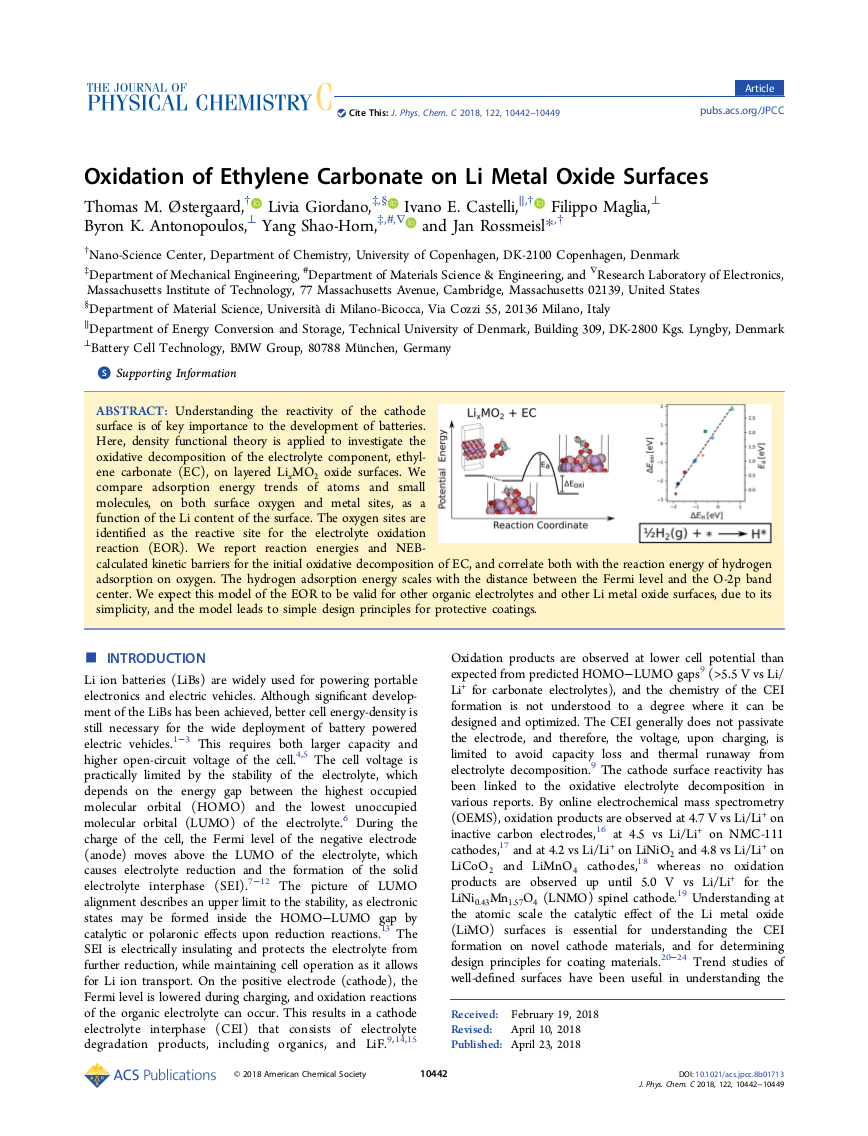 32. Oxidation of Ethylene Carbonate on Li Metal Oxide Surfaces, T. Østergaard, L. Giordano, I. E. Castelli, F. Maglia, B. K. Antonopoulos, Y. Shao-Horn, and J. Rossmeisl, J. Phys. Chem. C 122, 10442 (2018).
32. Oxidation of Ethylene Carbonate on Li Metal Oxide Surfaces, T. Østergaard, L. Giordano, I. E. Castelli, F. Maglia, B. K. Antonopoulos, Y. Shao-Horn, and J. Rossmeisl, J. Phys. Chem. C 122, 10442 (2018).
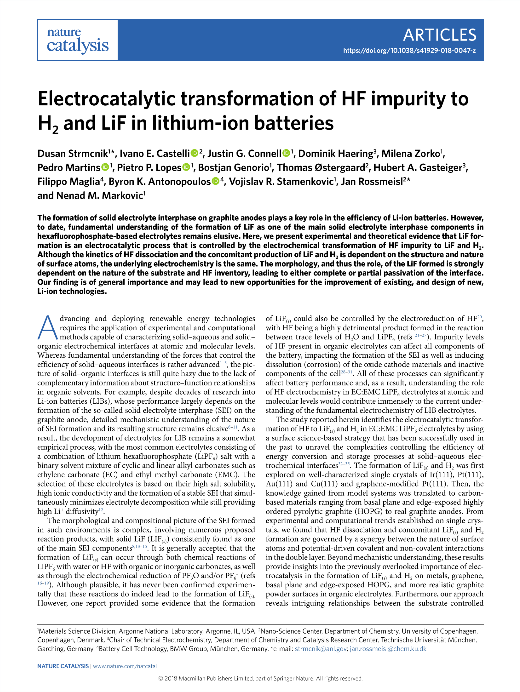 31. Electrocatalytic Transformation of HF Impurity to H2 and LiF in Lithium Ion Batteries, D. Strmcnik, I. E. Castelli, J. G. Connell, D. Haering, M. Zorko, P. Martins, P. P. Lopes, B. Genorio, T. Østergaard, H. Gasteiger, F. Maglia, B. K. Antonopoulos, V. R. Stamenkovic, J. Rossmeisl, and N. M. Markovic, Nature Catalysis 1, 255 (2018).
31. Electrocatalytic Transformation of HF Impurity to H2 and LiF in Lithium Ion Batteries, D. Strmcnik, I. E. Castelli, J. G. Connell, D. Haering, M. Zorko, P. Martins, P. P. Lopes, B. Genorio, T. Østergaard, H. Gasteiger, F. Maglia, B. K. Antonopoulos, V. R. Stamenkovic, J. Rossmeisl, and N. M. Markovic, Nature Catalysis 1, 255 (2018).
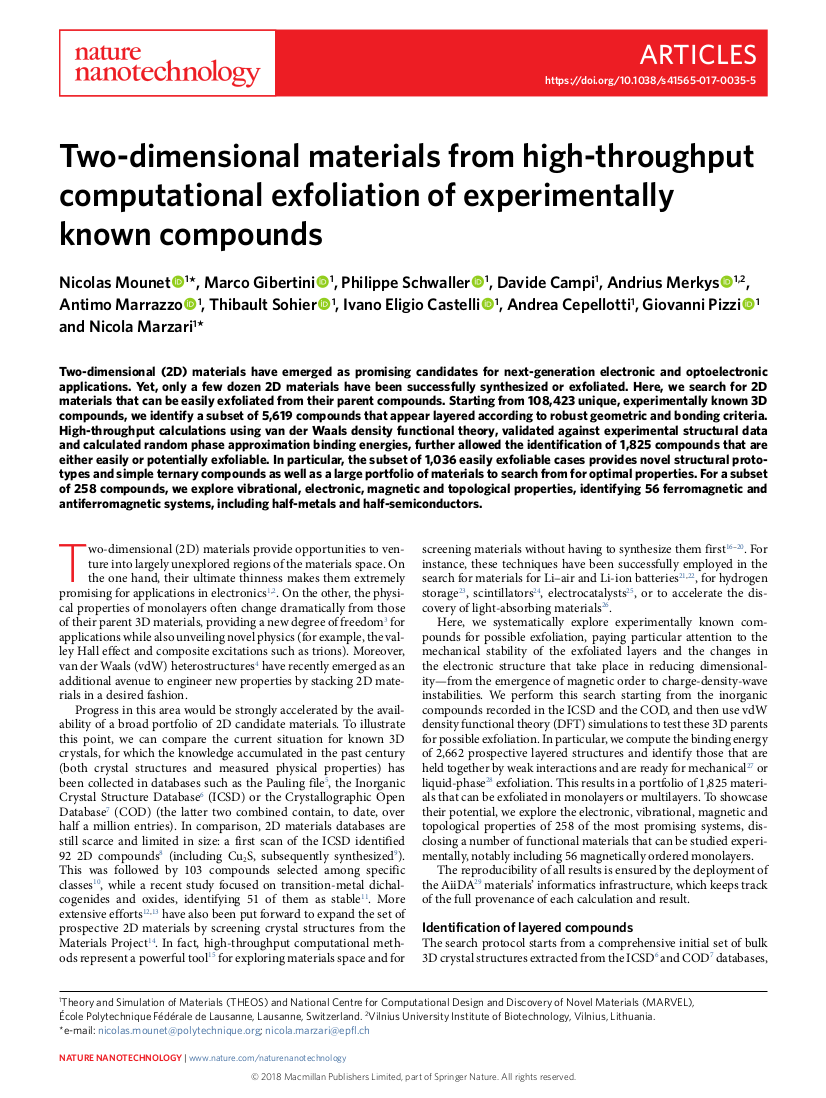 30. Two-dimensional Materials from High-throughput Computational Exfoliation of Experimentally Known Compounds, N. Mounet, M. Gibertini, P. Schwaller, D. Campi, A. Merkys, A. Marrazzo, T. Sohier, I. E. Castelli, A. Cepellotti, G. Pizzi, and N. Marzari, Nature Nanotechnology 13, 246 (2018).
30. Two-dimensional Materials from High-throughput Computational Exfoliation of Experimentally Known Compounds, N. Mounet, M. Gibertini, P. Schwaller, D. Campi, A. Merkys, A. Marrazzo, T. Sohier, I. E. Castelli, A. Cepellotti, G. Pizzi, and N. Marzari, Nature Nanotechnology 13, 246 (2018).
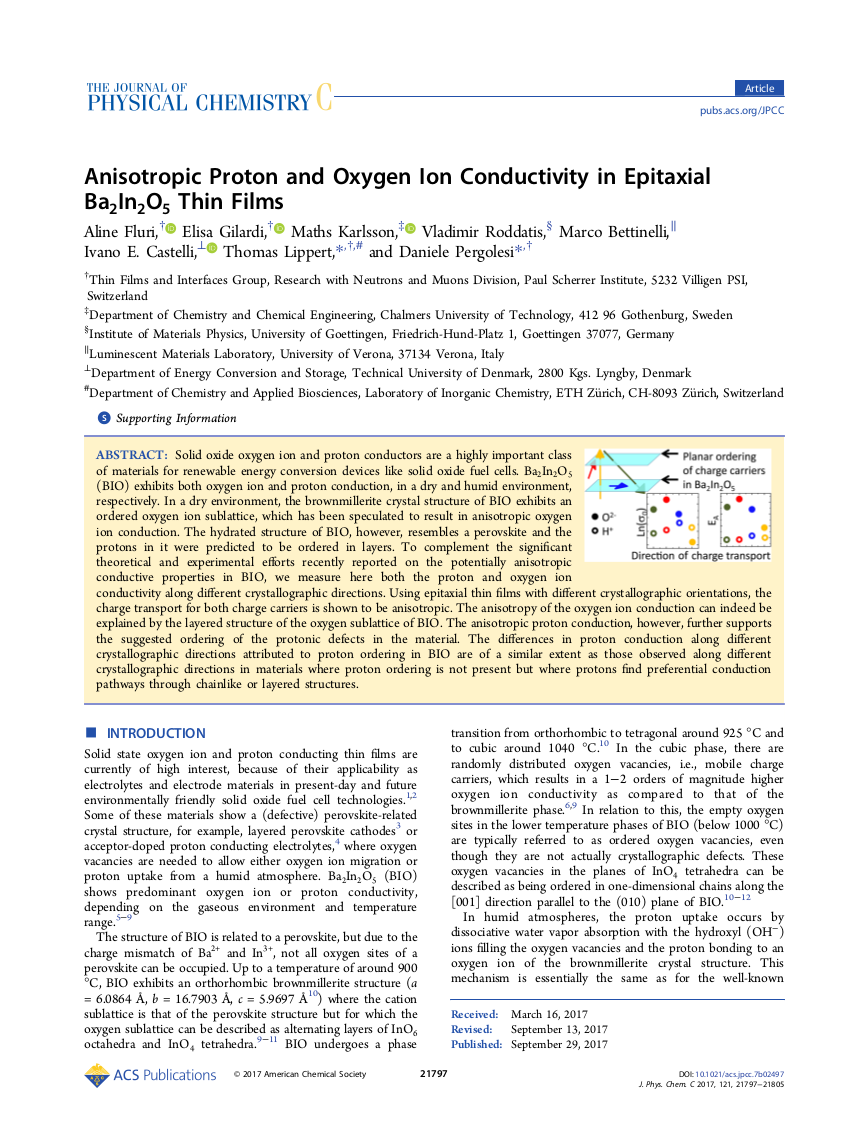 29. Anisotropic Proton and Oxygen Ion Conductivity in Epitaxial Ba2In2O5 Thin Films, A. Fluri, E. Gilardi, M. Karlsson, V. Roddatis, M. Bettinelli, I. E. Castelli, T. Lippert, and D. Pergolesi, J. Phys. Chem. C 121, 21797 (2017).
29. Anisotropic Proton and Oxygen Ion Conductivity in Epitaxial Ba2In2O5 Thin Films, A. Fluri, E. Gilardi, M. Karlsson, V. Roddatis, M. Bettinelli, I. E. Castelli, T. Lippert, and D. Pergolesi, J. Phys. Chem. C 121, 21797 (2017).
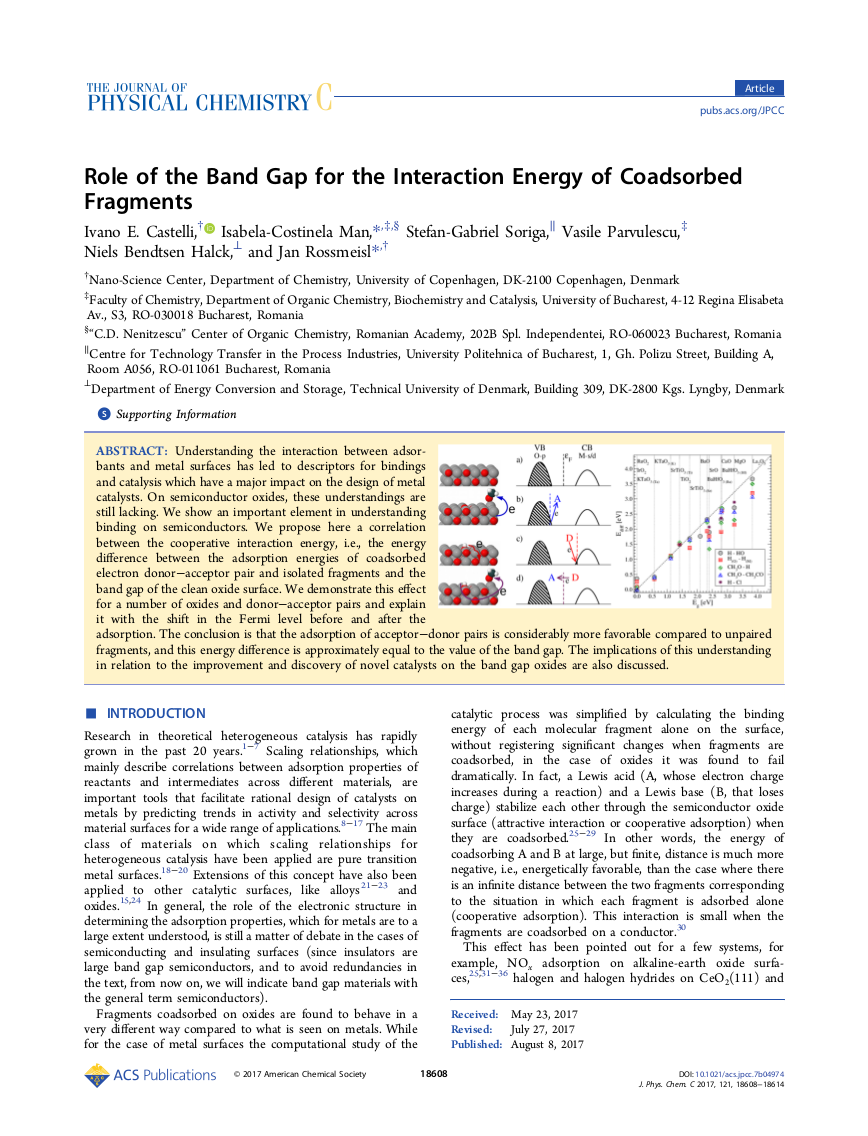 28. Role of the Band Gap for the Interaction Energy of Coadsorbed Fragments, I. E. Castelli, I.-C. Man, S.-G. Soriga, V. Parvulescu, N. B. Halck, and J. Rossmeisl, J. Phys. Chem. C 121, 18608 (2017).
28. Role of the Band Gap for the Interaction Energy of Coadsorbed Fragments, I. E. Castelli, I.-C. Man, S.-G. Soriga, V. Parvulescu, N. B. Halck, and J. Rossmeisl, J. Phys. Chem. C 121, 18608 (2017).
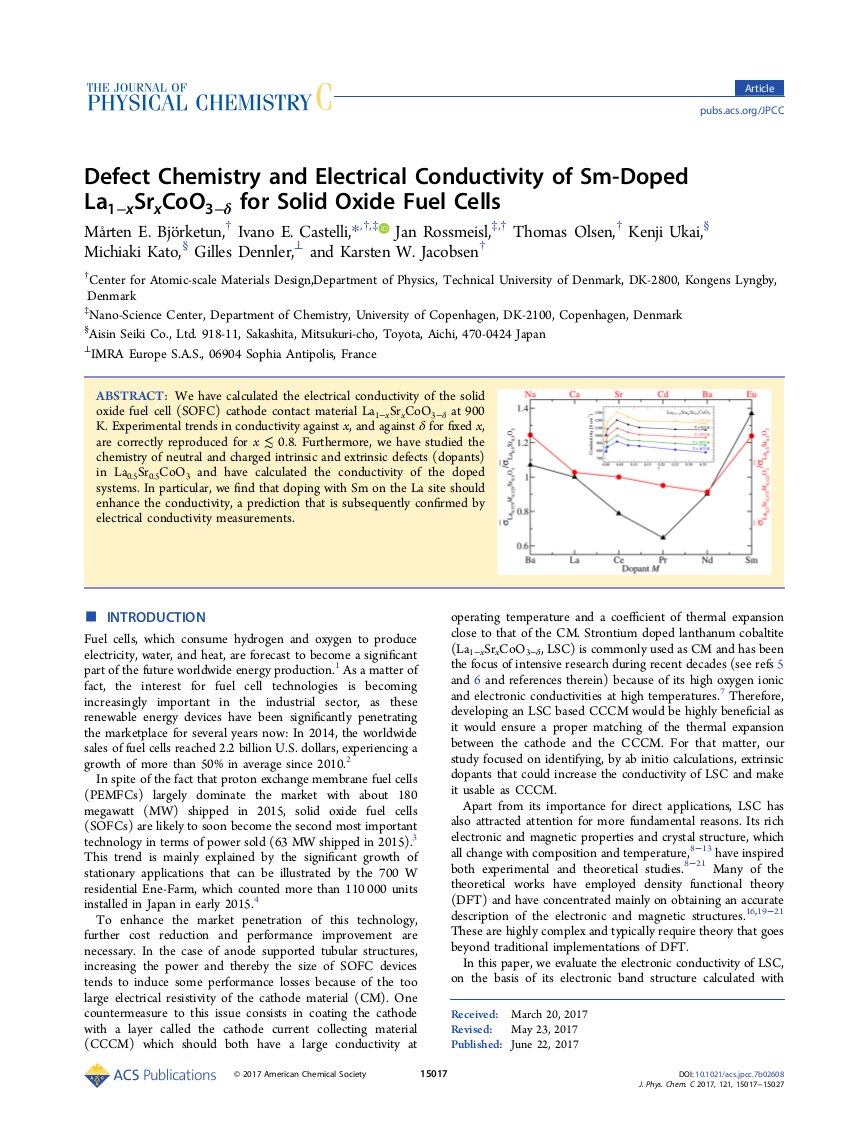 27. Defect Chemistry and Electrical Conductivity of Sm-Doped La1-xSrxCoO3-δ for Solid Oxide Fuel Cells, M. E. Björketun, I. E. Castelli, J. Rossmeisl, T. Olsen, K. Ukai, M. Kato, G. Dennler, and K. W. Jacobsen, J. Phys. Chem. C 121, 15017 (2017).
27. Defect Chemistry and Electrical Conductivity of Sm-Doped La1-xSrxCoO3-δ for Solid Oxide Fuel Cells, M. E. Björketun, I. E. Castelli, J. Rossmeisl, T. Olsen, K. Ukai, M. Kato, G. Dennler, and K. W. Jacobsen, J. Phys. Chem. C 121, 15017 (2017).
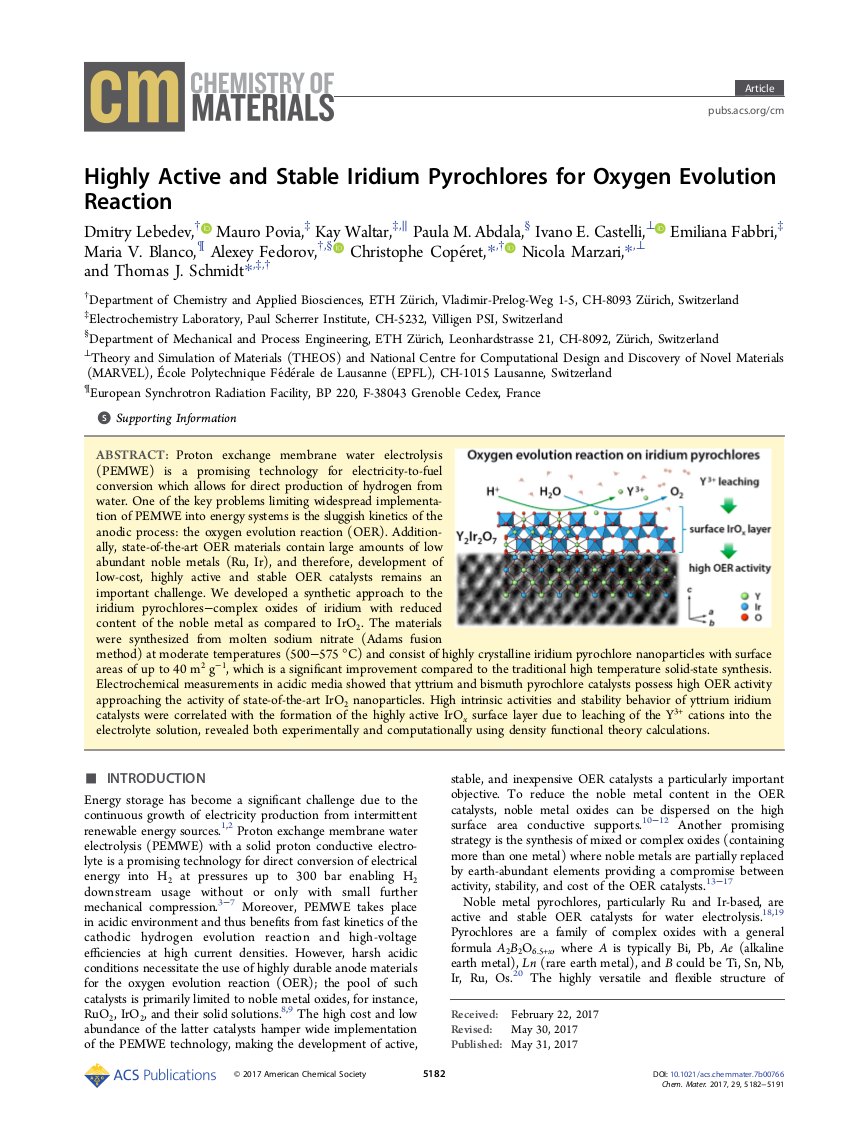 26. Highly Active and Stable Iridium Pyrochlores for Oxygen Evolution Reaction, D. Lebedev, M. Povia, K. Waltar, P. M. Abdala, I. E. Castelli, E. Fabbri, M. V. Blanco, A. Fedorov, C. Coperet, N. Marzari, and T. J. Schmidt, Chem. Mater. 29, 5812 (2017).
26. Highly Active and Stable Iridium Pyrochlores for Oxygen Evolution Reaction, D. Lebedev, M. Povia, K. Waltar, P. M. Abdala, I. E. Castelli, E. Fabbri, M. V. Blanco, A. Fedorov, C. Coperet, N. Marzari, and T. J. Schmidt, Chem. Mater. 29, 5812 (2017).
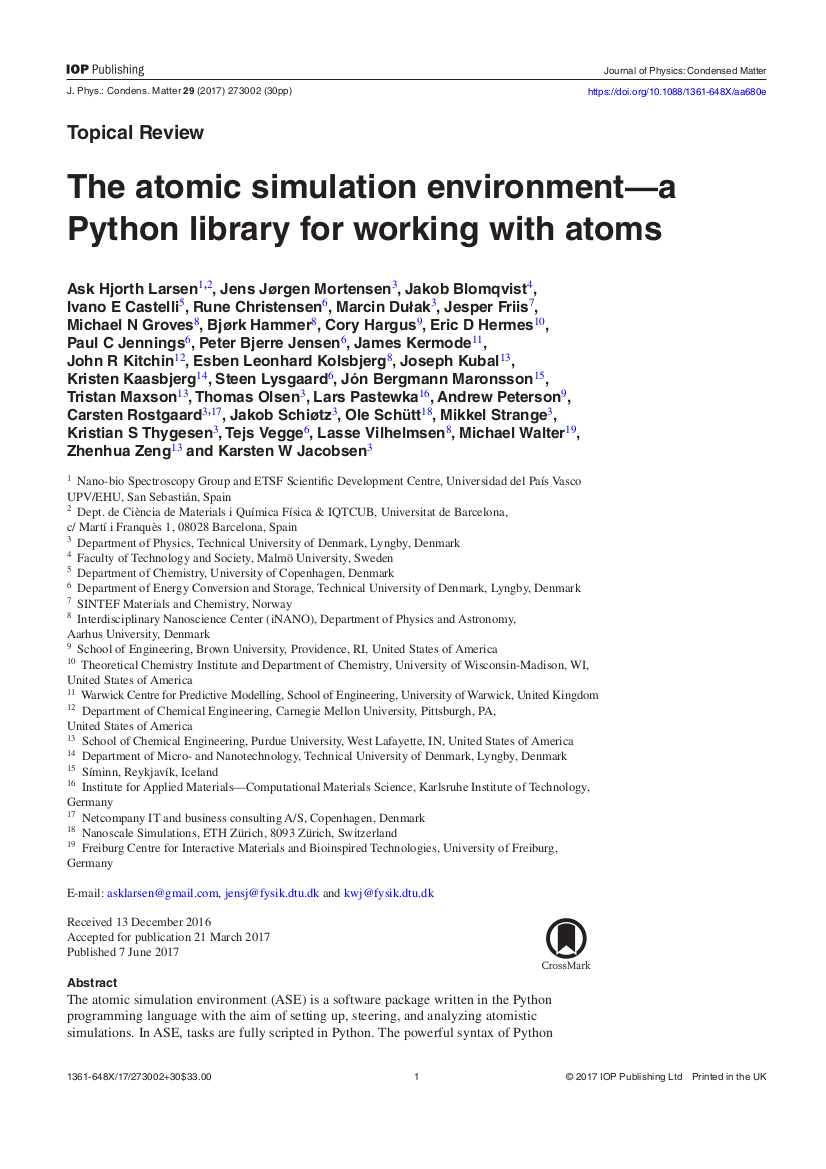 25. The Atomic Simulation Environment - A Python Library for Working with Atoms, A. H. Larsen, J. J. Mortensen, J. Blomqvist, I. E. Castelli, et al., J. Phys.: Condens. Matter 29, 273002 (2017).
25. The Atomic Simulation Environment - A Python Library for Working with Atoms, A. H. Larsen, J. J. Mortensen, J. Blomqvist, I. E. Castelli, et al., J. Phys.: Condens. Matter 29, 273002 (2017).
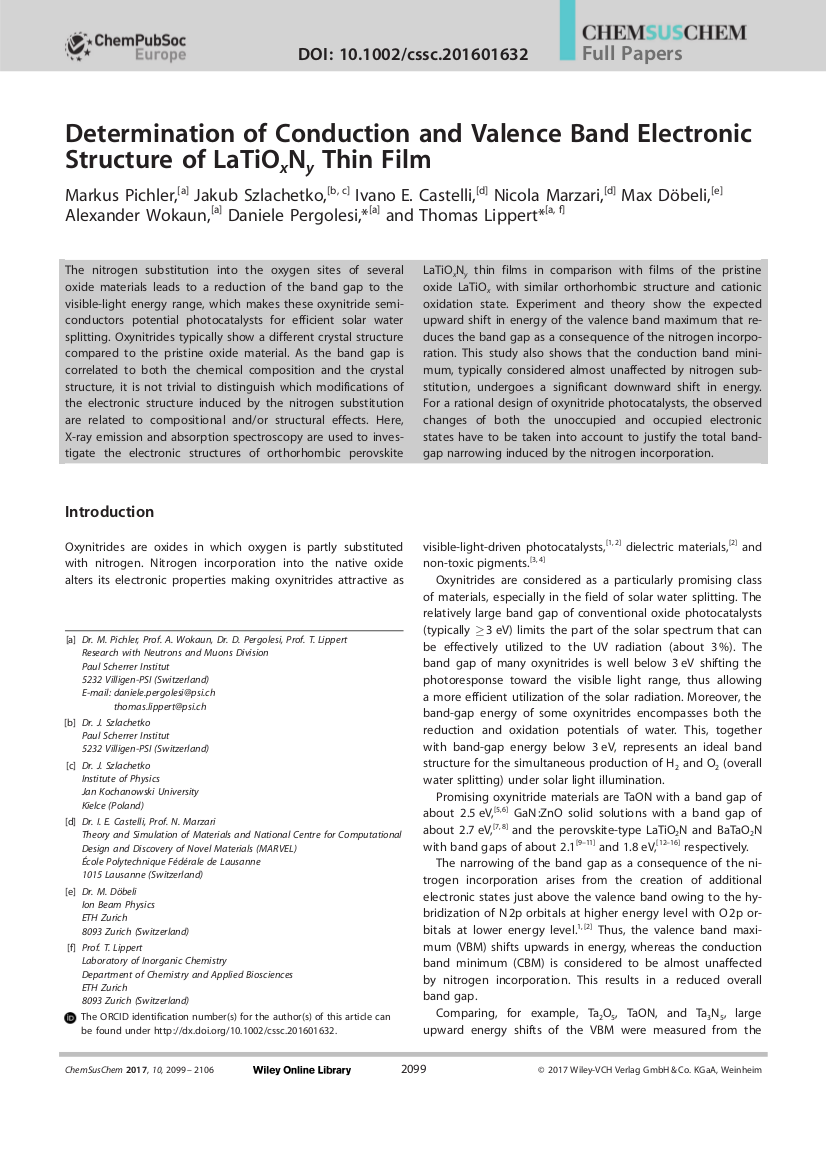 24. Determination of Conduction and Valence Band Electronic Structure of LaTiOxNy Thin Film, M. Pichler, J. Szlachetko, Ivano E. Castelli, N. Marzari, M. Döbeli, A. Wokaun, D. Pergolesi, and T. Lippert, ChemSusChem 10, 2099 (2017).
24. Determination of Conduction and Valence Band Electronic Structure of LaTiOxNy Thin Film, M. Pichler, J. Szlachetko, Ivano E. Castelli, N. Marzari, M. Döbeli, A. Wokaun, D. Pergolesi, and T. Lippert, ChemSusChem 10, 2099 (2017).
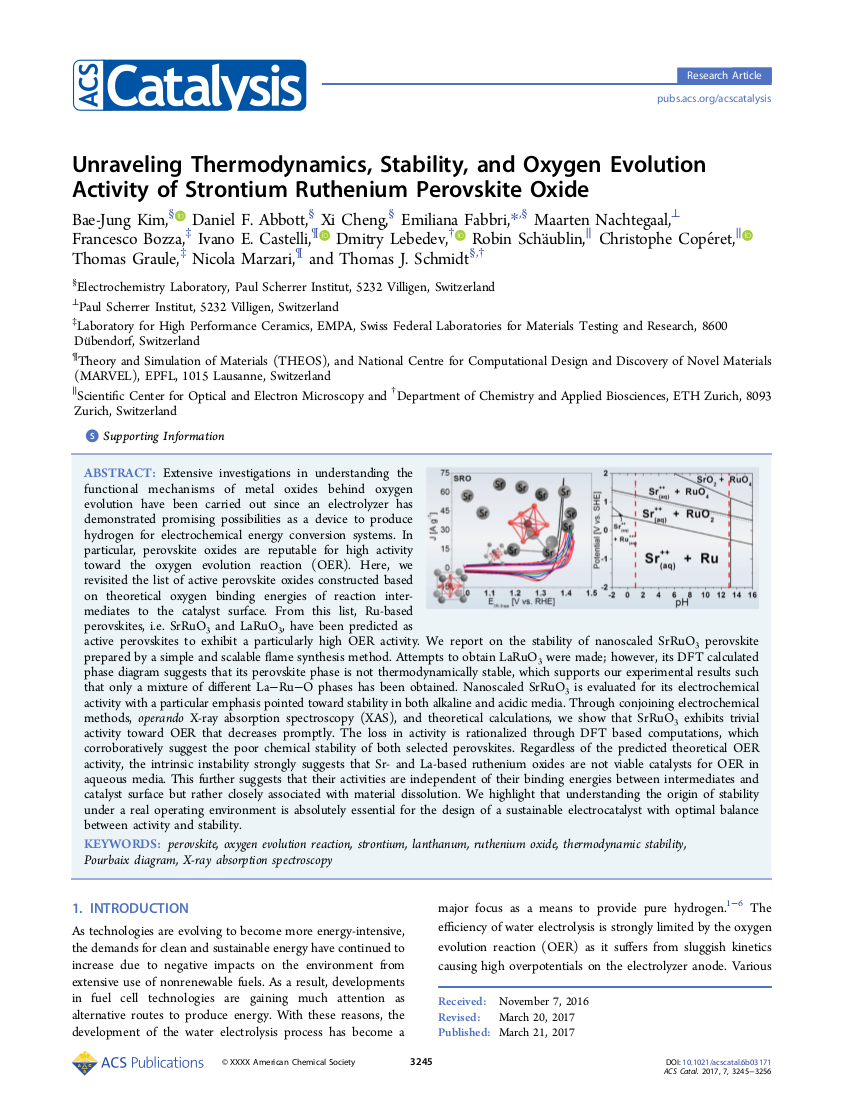 23. Unraveling Thermodynamics, Stability, and Oxygen Evolution Activity of Strontium Ruthenium Perovskite Oxide, B.-J. Kim, D. F. Abbott, X. Cheng, E. Fabbri, M. Nachtegaal, F. Bozza, I. E. Castelli, D. Lebedev, R. Schaublin, C. Coperet, T. Graule, N. Marzari, and T. J. Schmidt, ACS Catalysis 7, 3245 (2017).
23. Unraveling Thermodynamics, Stability, and Oxygen Evolution Activity of Strontium Ruthenium Perovskite Oxide, B.-J. Kim, D. F. Abbott, X. Cheng, E. Fabbri, M. Nachtegaal, F. Bozza, I. E. Castelli, D. Lebedev, R. Schaublin, C. Coperet, T. Graule, N. Marzari, and T. J. Schmidt, ACS Catalysis 7, 3245 (2017).
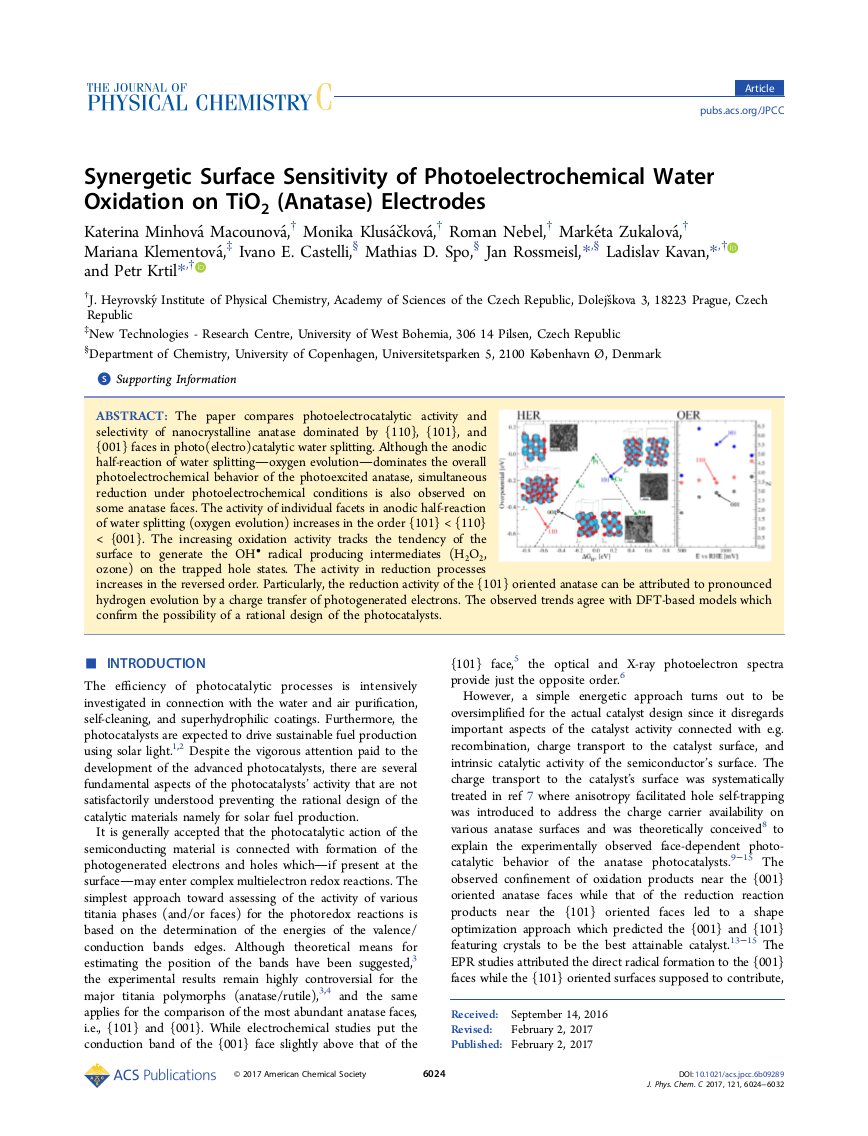 22. The Synergetic Surface Sensitivity of Photo-Electrochemical Water Oxidation on TiO2 (Anatase) Electrodes, K. M. Macounova, M. Klusackova, R. Nebel, M. Zukalova, M. Klementova, I. E. Castelli, M. D. Spo, J. Rossmeisl, L. Kavan, and P. Krtil, The Journal of Physical Chemistry C 121, 6024 (2017).
22. The Synergetic Surface Sensitivity of Photo-Electrochemical Water Oxidation on TiO2 (Anatase) Electrodes, K. M. Macounova, M. Klusackova, R. Nebel, M. Zukalova, M. Klementova, I. E. Castelli, M. D. Spo, J. Rossmeisl, L. Kavan, and P. Krtil, The Journal of Physical Chemistry C 121, 6024 (2017).
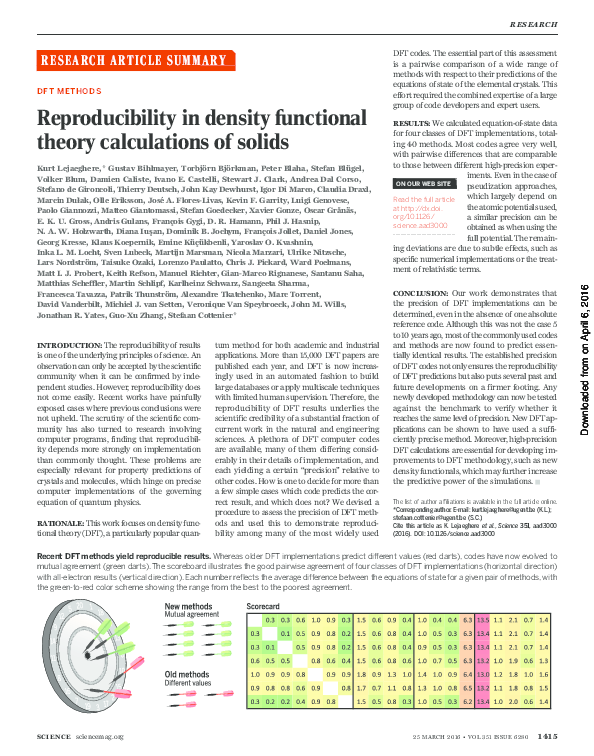 21. Reproducibility in Density Functional Theory Calculations of Solids, K. Lejaeghere, G. Bihlmayer, T. Björkman, P. Blaha, S. Blügel, V. Blum, D. Caliste, I. E. Castelli, et al., Science 351 (6280), 1415 (2016).
21. Reproducibility in Density Functional Theory Calculations of Solids, K. Lejaeghere, G. Bihlmayer, T. Björkman, P. Blaha, S. Blügel, V. Blum, D. Caliste, I. E. Castelli, et al., Science 351 (6280), 1415 (2016).
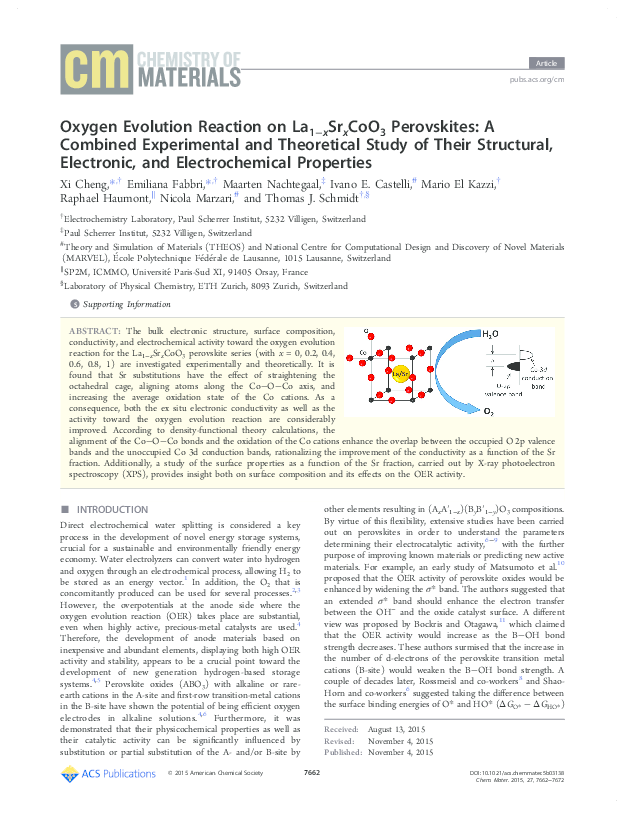 20. The Oxygen Evolution Reaction on La1-xSrxCoO3 Perovskites: A Combined Experimental and Theoretical Study of Their Structural, Electronic, and Electrochemical Properties, X. Cheng, E. Fabbri, M. Nachtegaal, I. E. Castelli, M. El Kazzi, R. Haumont, N. Marzari, and T. J. Schmidt, Chem. Mater. 27, 7662 (2015).
20. The Oxygen Evolution Reaction on La1-xSrxCoO3 Perovskites: A Combined Experimental and Theoretical Study of Their Structural, Electronic, and Electrochemical Properties, X. Cheng, E. Fabbri, M. Nachtegaal, I. E. Castelli, M. El Kazzi, R. Haumont, N. Marzari, and T. J. Schmidt, Chem. Mater. 27, 7662 (2015).
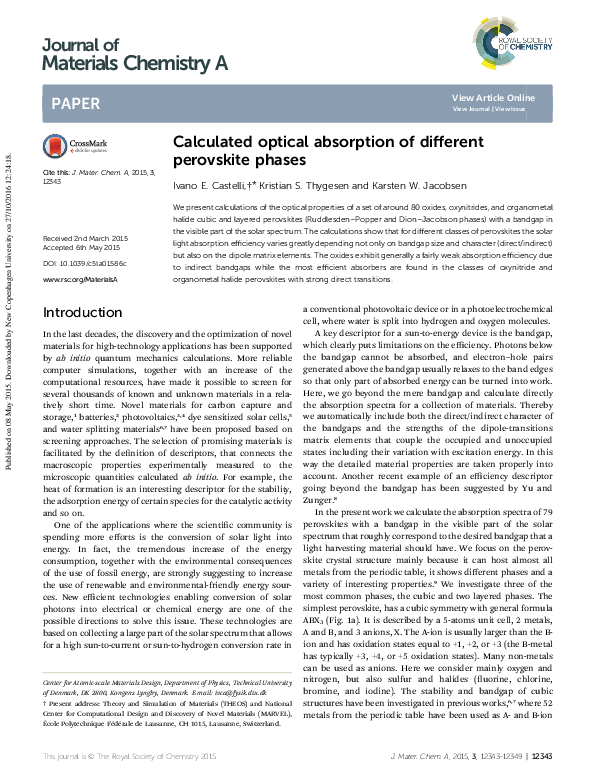 19. Calculated Optical Absorption of Different Perovskite Phases, I. E. Castelli, K. S. Thygesen, and K. W. Jacobsen, J. Mater. Chem. A 3, 12343 (2015).
19. Calculated Optical Absorption of Different Perovskite Phases, I. E. Castelli, K. S. Thygesen, and K. W. Jacobsen, J. Mater. Chem. A 3, 12343 (2015).
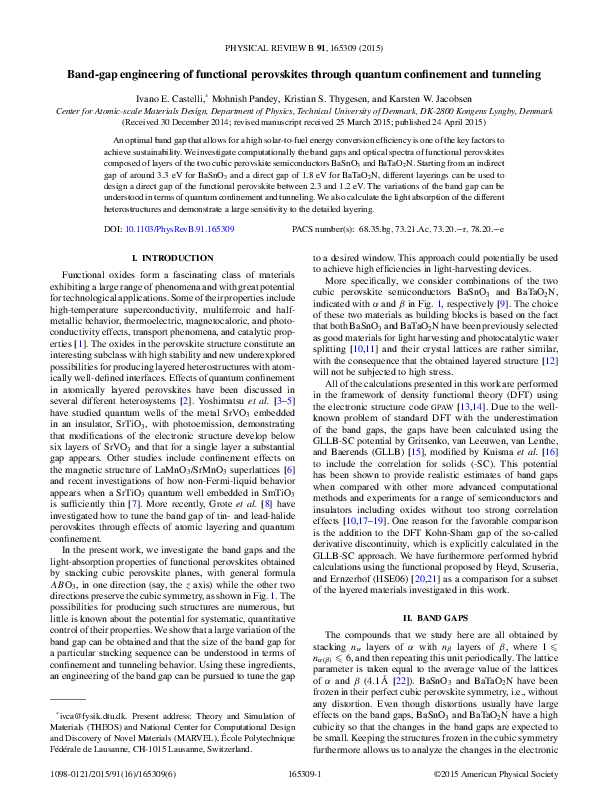 18. Bandgap Engineering of Functional Perovskites Through Quantum Confinement and Tunneling, I. E. Castelli, M. Pandey, K. S. Thygesen, and K. W. Jacobsen, Phys. Rev B 91, 165309 (2015).
18. Bandgap Engineering of Functional Perovskites Through Quantum Confinement and Tunneling, I. E. Castelli, M. Pandey, K. S. Thygesen, and K. W. Jacobsen, Phys. Rev B 91, 165309 (2015).
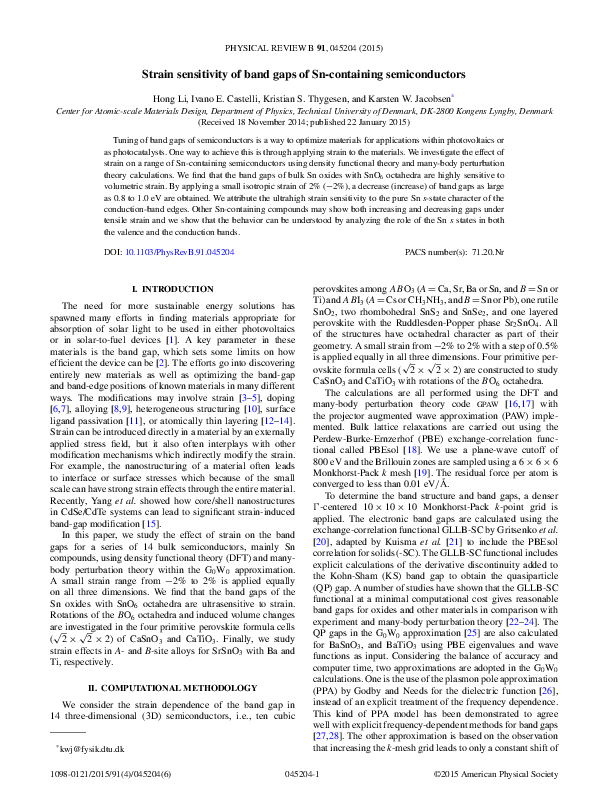 17. Strain Sensitivity of Band Gaps of Sn-containing Semiconductors, H. Li, I. E. Castelli, K. S. Thygesen, and K. W. Jacobsen, Phys. Rev B 91, 045204 (2015).
17. Strain Sensitivity of Band Gaps of Sn-containing Semiconductors, H. Li, I. E. Castelli, K. S. Thygesen, and K. W. Jacobsen, Phys. Rev B 91, 045204 (2015).
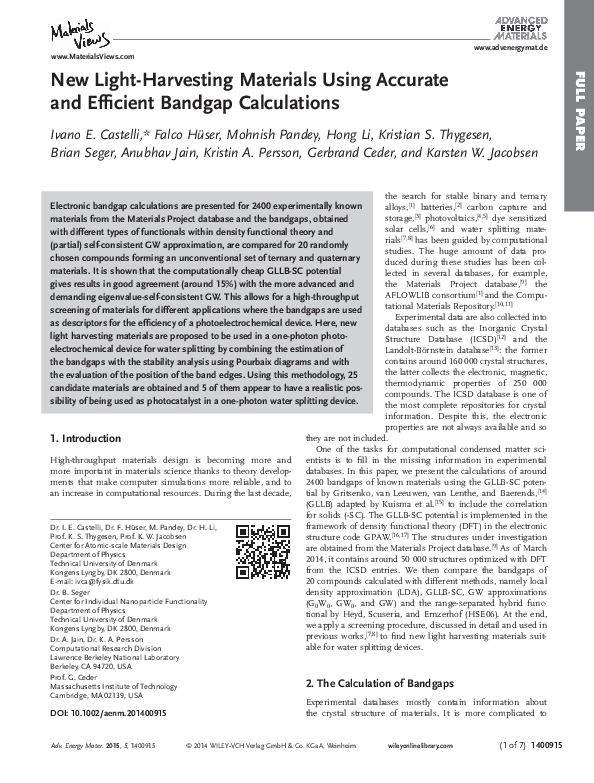 16. New Light Harvesting Materials Using Accurate and Efficient Bandgap Calculations, I. E. Castelli, F. Hüser, M. Pandey, H. Li, K. S. Thygesen, B. Seger, A. Jain, K. A. Persson, G. Ceder, and K. W. Jacobsen, Advanced Energy Materials 5, 1400915 (2015).
16. New Light Harvesting Materials Using Accurate and Efficient Bandgap Calculations, I. E. Castelli, F. Hüser, M. Pandey, H. Li, K. S. Thygesen, B. Seger, A. Jain, K. A. Persson, G. Ceder, and K. W. Jacobsen, Advanced Energy Materials 5, 1400915 (2015).
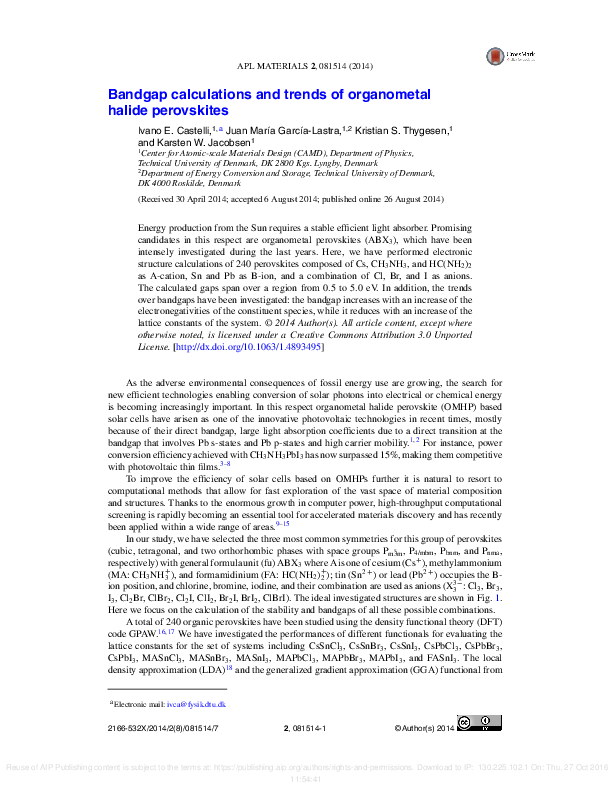 15. Bandgap Calculations and Trends of Organometal Halide Perovskites, I. E. Castelli, J. M. García-Lastra, K. S. Thygesen, and K. W. Jacobsen, APL Materials 2, 081514 (2014).
15. Bandgap Calculations and Trends of Organometal Halide Perovskites, I. E. Castelli, J. M. García-Lastra, K. S. Thygesen, and K. W. Jacobsen, APL Materials 2, 081514 (2014).
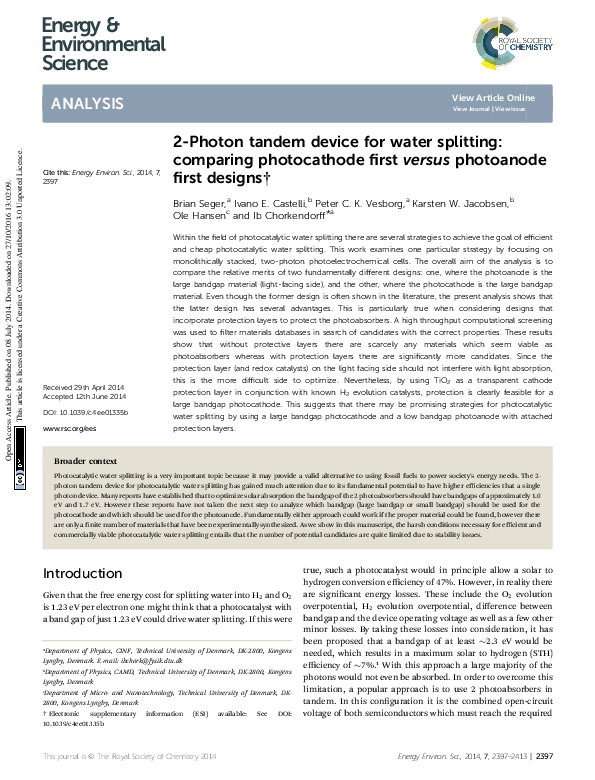 14. 2-Photon Tandem Device for Water Splitting: Design Parameters and Feasibility, B. Seger, I. E. Castelli, P. C. K. Vesborg, K. W. Jacobsen, O. Hansen, and I. Chorkendorff, Energy and Environmental Science 7, 2397 (2014).
14. 2-Photon Tandem Device for Water Splitting: Design Parameters and Feasibility, B. Seger, I. E. Castelli, P. C. K. Vesborg, K. W. Jacobsen, O. Hansen, and I. Chorkendorff, Energy and Environmental Science 7, 2397 (2014).
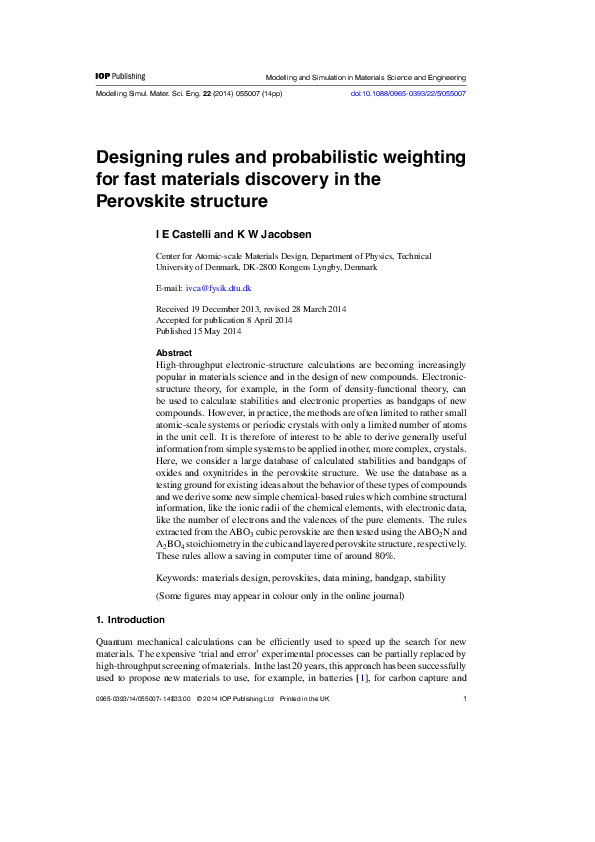 13. Designing Rules and Probabilistic Weighting for Fast Materials Discovery in the Perovskite Structure, I. E. Castelli, and K. W. Jacobsen, Modelling Simul. Mater. Sci. Eng. 22, 055007 (2014).
13. Designing Rules and Probabilistic Weighting for Fast Materials Discovery in the Perovskite Structure, I. E. Castelli, and K. W. Jacobsen, Modelling Simul. Mater. Sci. Eng. 22, 055007 (2014).
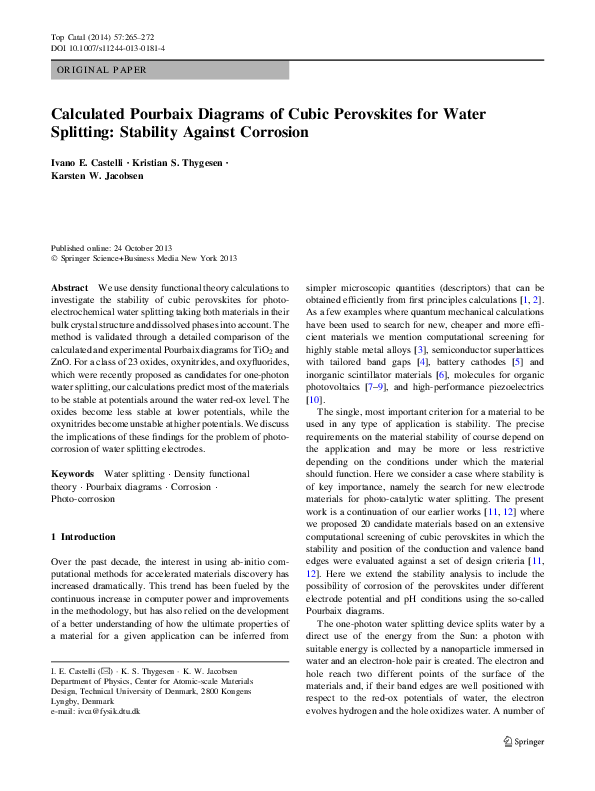 12. Calculated Pourbaix Diagrams of Cubic Perovskites for Water Splitting: Stability Against Corrosion, I. E. Castelli, K. S. Thygesen, and K. W. Jacobsen, Topics in Catalysis 57, 265 (2014).
12. Calculated Pourbaix Diagrams of Cubic Perovskites for Water Splitting: Stability Against Corrosion, I. E. Castelli, K. S. Thygesen, and K. W. Jacobsen, Topics in Catalysis 57, 265 (2014).
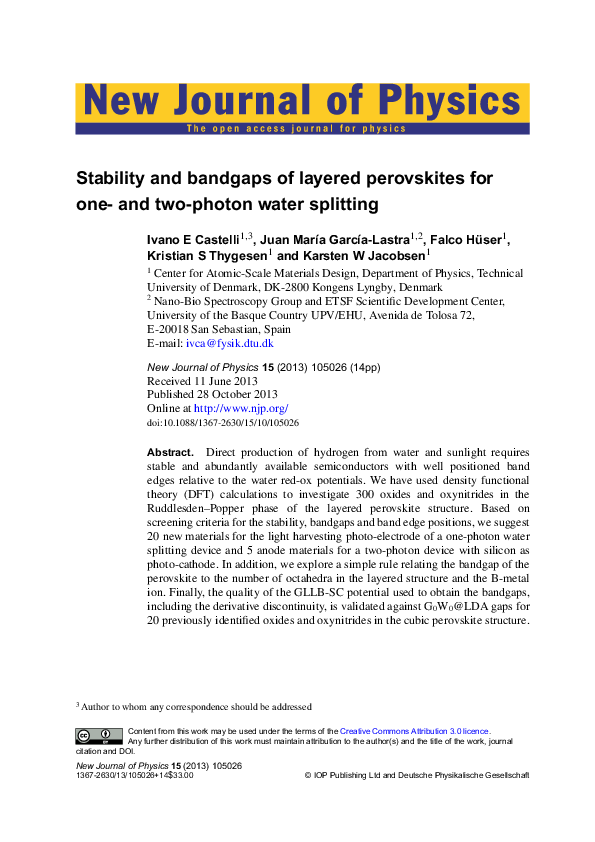 11. Stability and Band Gaps of Layered Perovskites for One- and Two-photon Water Splitting, I. E. Castelli, J. M. García-Lastra, F. Hüser, K. S. Thygesen, and K. W. Jacobsen, New Journal of Physics 15, 105026 (2013).
11. Stability and Band Gaps of Layered Perovskites for One- and Two-photon Water Splitting, I. E. Castelli, J. M. García-Lastra, F. Hüser, K. S. Thygesen, and K. W. Jacobsen, New Journal of Physics 15, 105026 (2013).
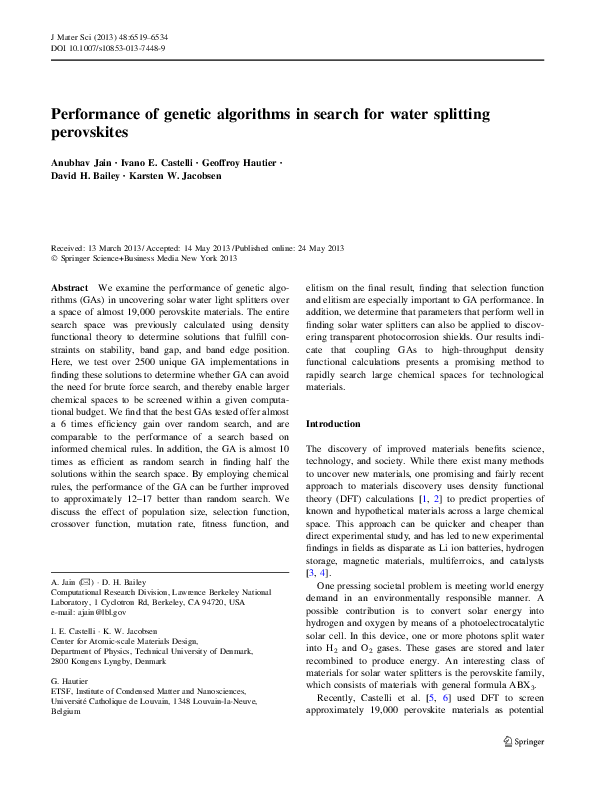 10 .Performance of Genetic Algorithms in Search for Water Splitting Perovskites, A. Jain, I. E. Castelli, G. Hautier, D. H. Bailey, and K. W. Jacobsen, Journal of Materials Science 48, 6519 (2013).
10 .Performance of Genetic Algorithms in Search for Water Splitting Perovskites, A. Jain, I. E. Castelli, G. Hautier, D. H. Bailey, and K. W. Jacobsen, Journal of Materials Science 48, 6519 (2013).
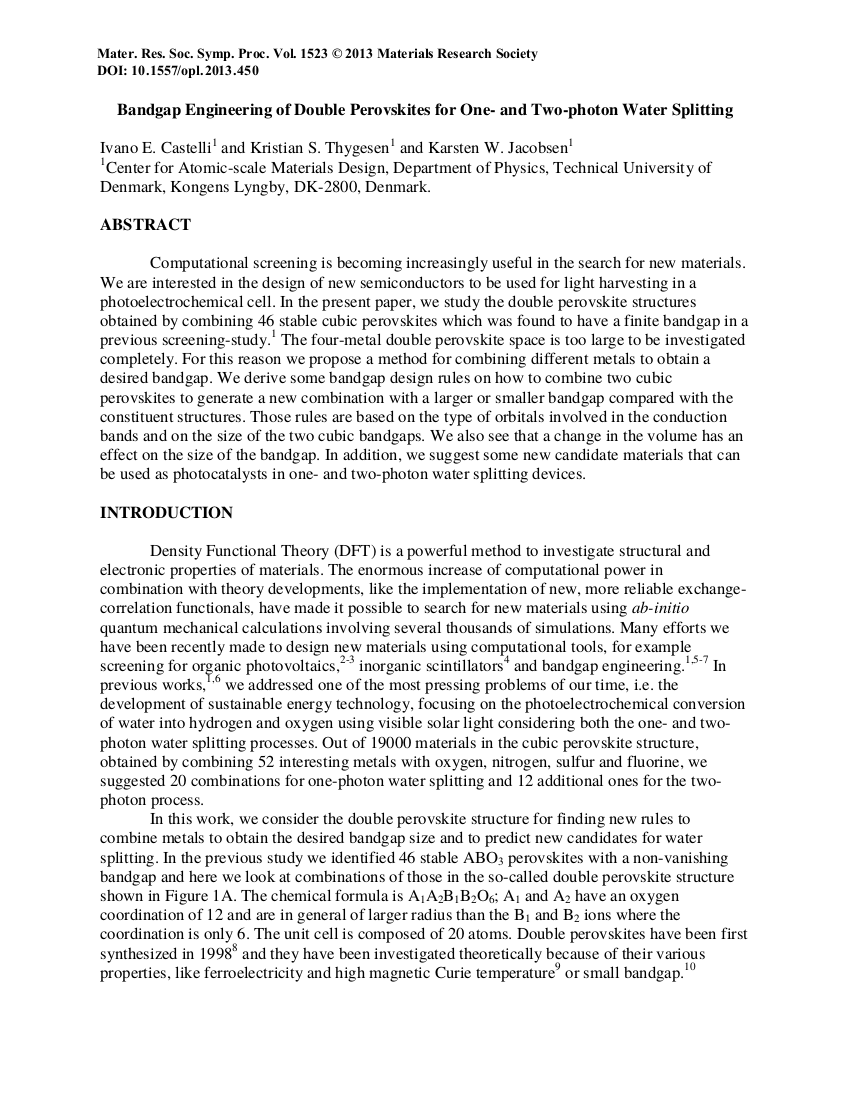 9. Bandgap Engineering of Double Perovskites for One- and Two-photon Water Splitting, I. E. Castelli, K. S. Thygesen, and K. W. Jacobsen, MRS Online Proceedings Library 1523 (2013).
9. Bandgap Engineering of Double Perovskites for One- and Two-photon Water Splitting, I. E. Castelli, K. S. Thygesen, and K. W. Jacobsen, MRS Online Proceedings Library 1523 (2013).
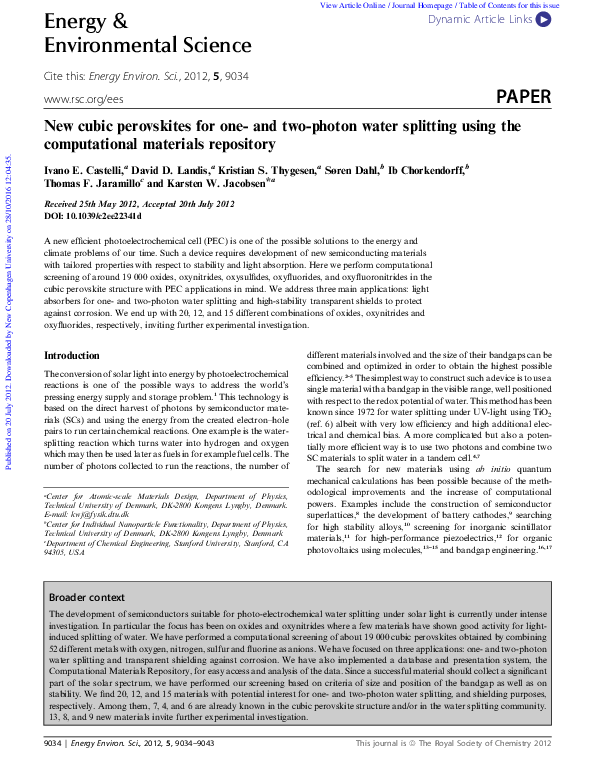 8. New Cubic Perovskites for One- and Two-Photon Water Splitting using the Computational Materials Repository, I. E. Castelli, D. D. Landis, K. S. Thygesen, S. Dahl, I. Chorkendorff, T. F. Jaramillo, and K. W. Jacobsen, Energy and Environmental Science 5, 9034 (2012).
8. New Cubic Perovskites for One- and Two-Photon Water Splitting using the Computational Materials Repository, I. E. Castelli, D. D. Landis, K. S. Thygesen, S. Dahl, I. Chorkendorff, T. F. Jaramillo, and K. W. Jacobsen, Energy and Environmental Science 5, 9034 (2012).
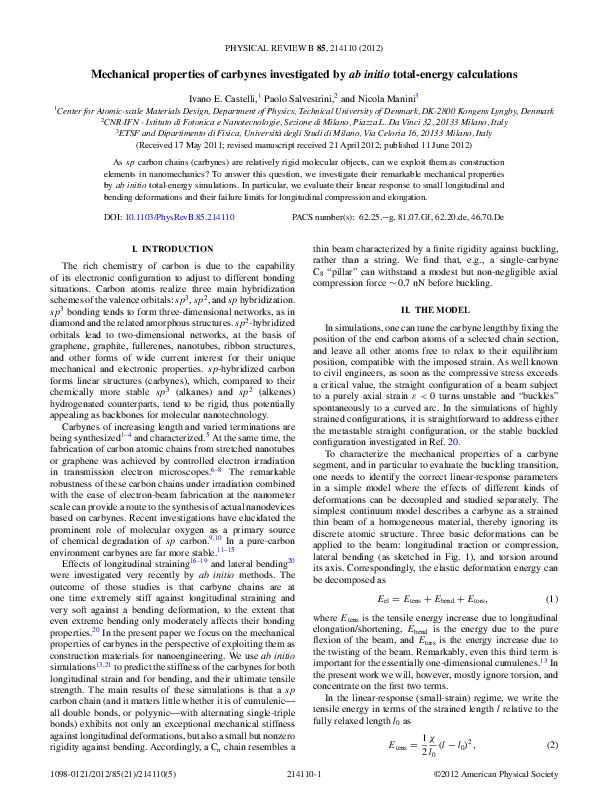 7. Mechanical Properties of Carbynes Investigated by Ab Initio Total-energy Calculations, I. E. Castelli, P. Salvestrini, and N. Manini, Phys. Rev. B 85, 214110 (2012).
7. Mechanical Properties of Carbynes Investigated by Ab Initio Total-energy Calculations, I. E. Castelli, P. Salvestrini, and N. Manini, Phys. Rev. B 85, 214110 (2012).
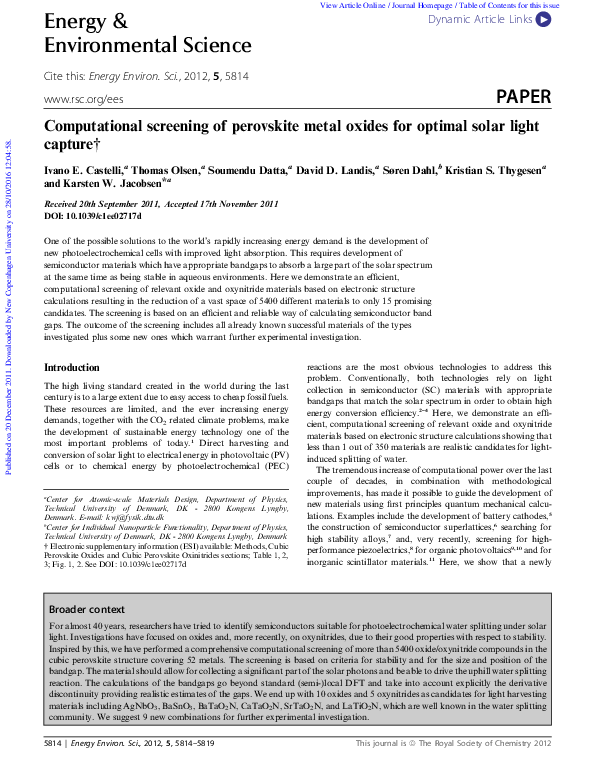 6. Computational Screening of Perovskite Metal Oxides for Optimal Solar Light Capture, I. E. Castelli, T. Olsen, S. Datta, D. D. Landis, S. Dahl, K. S. Thygesen, and K. W. Jacobsen, Energy and Environmental Science 5, 5814 (2012).
6. Computational Screening of Perovskite Metal Oxides for Optimal Solar Light Capture, I. E. Castelli, T. Olsen, S. Datta, D. D. Landis, S. Dahl, K. S. Thygesen, and K. W. Jacobsen, Energy and Environmental Science 5, 5814 (2012).
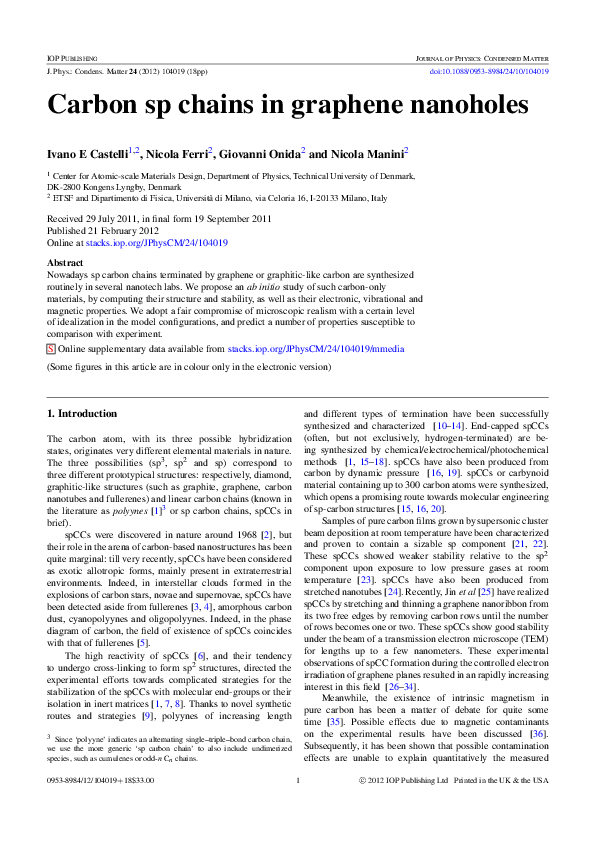 5. Carbon sp Chains in Graphene Nanoholes, I. E. Castelli, N. Ferri, G. Onida, and N. Manini, J. Phys.: Condens. Matter 24, 104019 (2012).
5. Carbon sp Chains in Graphene Nanoholes, I. E. Castelli, N. Ferri, G. Onida, and N. Manini, J. Phys.: Condens. Matter 24, 104019 (2012).
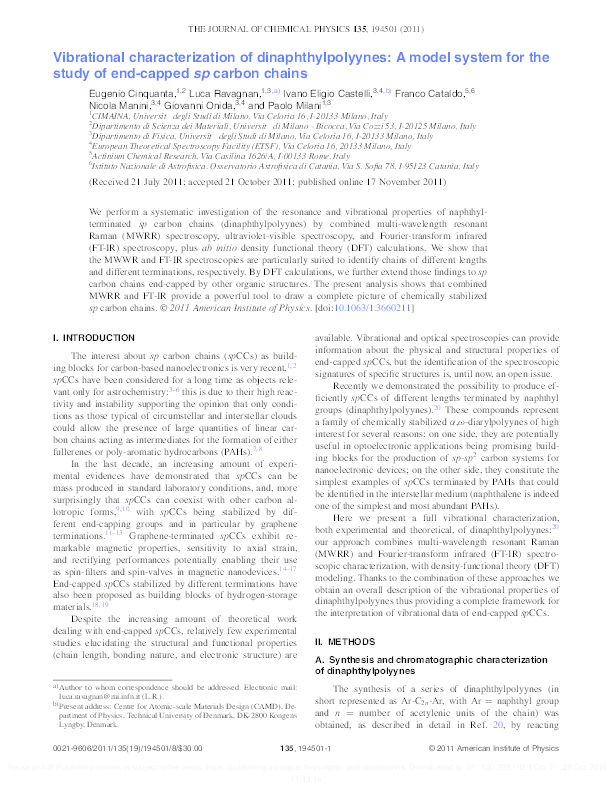 4. Vibrational Characterization of Dinaphthylpolyynes: A Model System for the Study of End-capped sp Carbon Chains, E. Cinquanta, L. Ravagnan, I. E. Castelli, F. Cataldo, N. Manini, G. Onida, and P. Milani, J. Chem. Phys. 135, 194501 (2011).
4. Vibrational Characterization of Dinaphthylpolyynes: A Model System for the Study of End-capped sp Carbon Chains, E. Cinquanta, L. Ravagnan, I. E. Castelli, F. Cataldo, N. Manini, G. Onida, and P. Milani, J. Chem. Phys. 135, 194501 (2011).
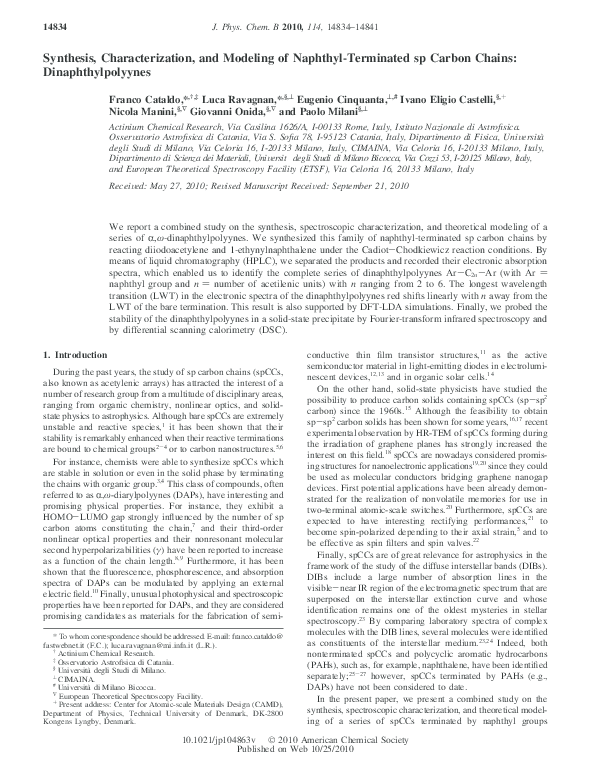 3. Synthesis, Characterization, and Modeling of Naphthyl-Terminated sp Carbon Chains: Dinaphthylpolyynes, F. Cataldo, L. Ravagnan, E. Cinquanta, I. E. Castelli, N. Manini, G. Onida, and P. Milani, J. Phys. Chem. B 114, 14834 (2010).
3. Synthesis, Characterization, and Modeling of Naphthyl-Terminated sp Carbon Chains: Dinaphthylpolyynes, F. Cataldo, L. Ravagnan, E. Cinquanta, I. E. Castelli, N. Manini, G. Onida, and P. Milani, J. Phys. Chem. B 114, 14834 (2010).
 2. Tribology of the Lubricant Quantized Sliding State, I. E. Castelli, R. Capozza, A. Vanossi, G. E. Santoro, N. Manini, and E. Tosatti, J. Chem. Phys. 131, 174711 (2009).
2. Tribology of the Lubricant Quantized Sliding State, I. E. Castelli, R. Capozza, A. Vanossi, G. E. Santoro, N. Manini, and E. Tosatti, J. Chem. Phys. 131, 174711 (2009).
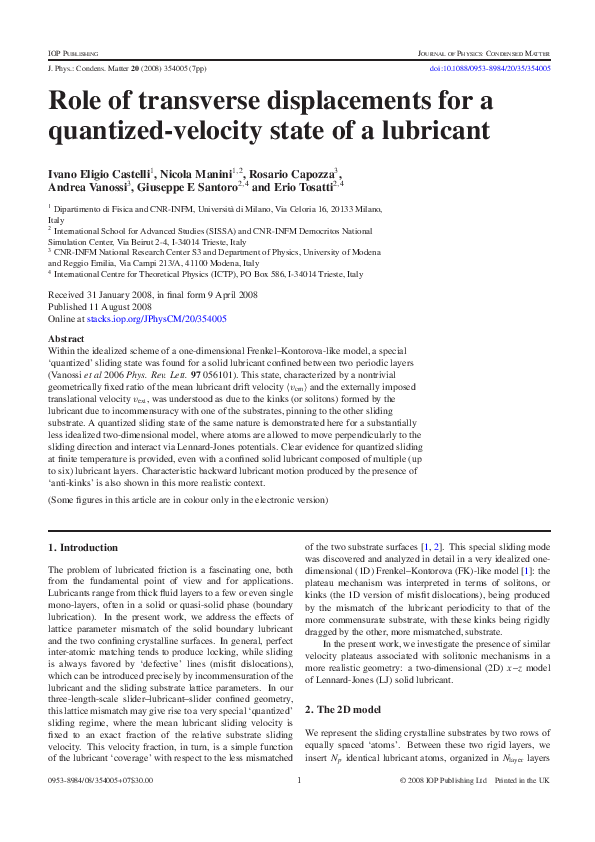 1. Role of Transverse Displacements for a Quantized-velocity State of a Lubricant, I. E. Castelli, N. Manini, R. Capozza, A. Vanossi, G. E. Santoro, and E. Tosatti, J. Phys.: Condens. Matter 20, 354005 (2008).
1. Role of Transverse Displacements for a Quantized-velocity State of a Lubricant, I. E. Castelli, N. Manini, R. Capozza, A. Vanossi, G. E. Santoro, and E. Tosatti, J. Phys.: Condens. Matter 20, 354005 (2008).
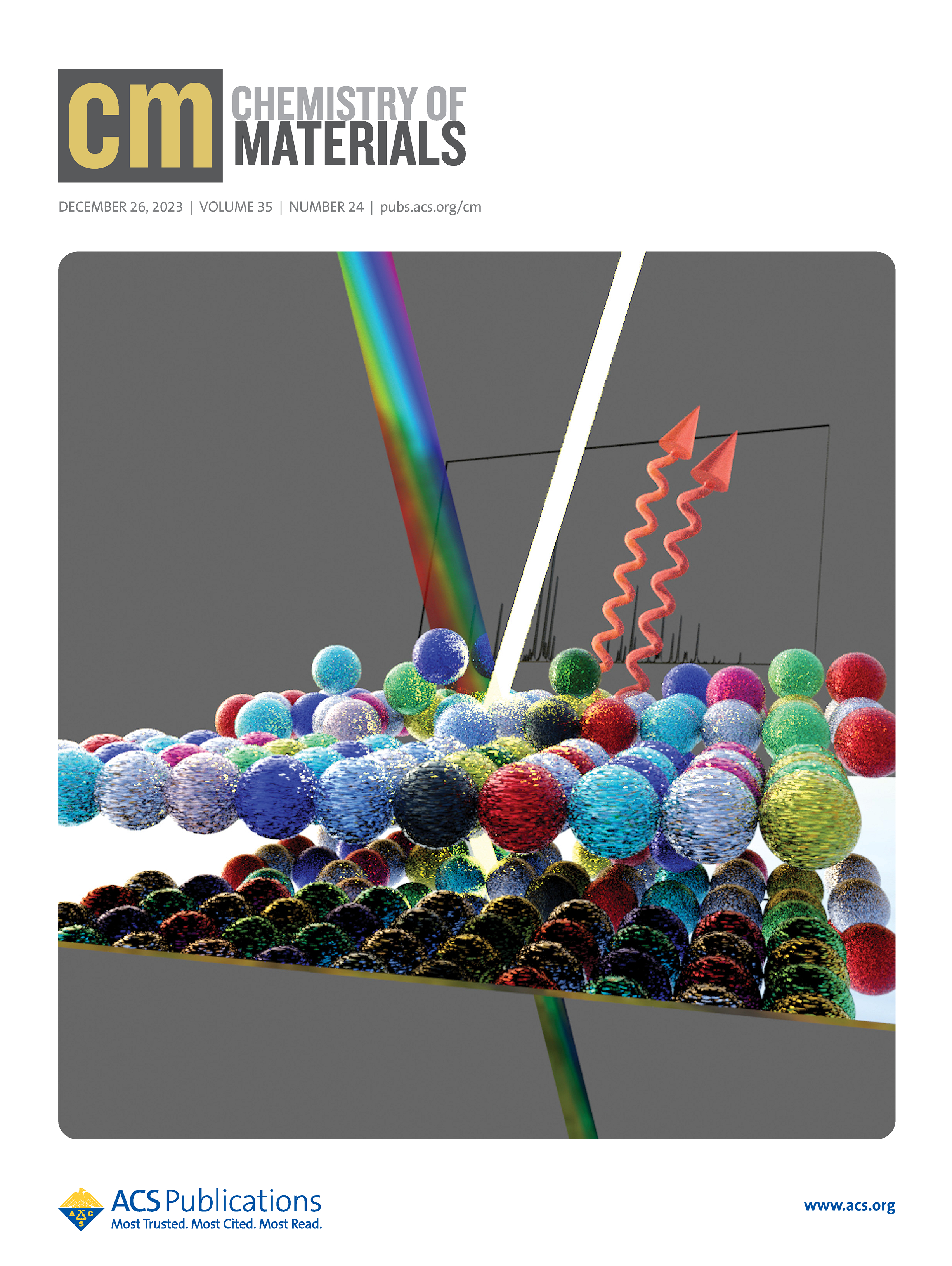 Tailoring High-Entropy Oxides as Emerging Radiative Materials for Daytime Passive Cooling, C. Borghesi, C. Fabiani, R. Bondi, L. Latterini, I. E. Castelli, A. L. Pisello, and G. Giorgi, Chem. Mater. 35, 10384 (2023).
Tailoring High-Entropy Oxides as Emerging Radiative Materials for Daytime Passive Cooling, C. Borghesi, C. Fabiani, R. Bondi, L. Latterini, I. E. Castelli, A. L. Pisello, and G. Giorgi, Chem. Mater. 35, 10384 (2023).
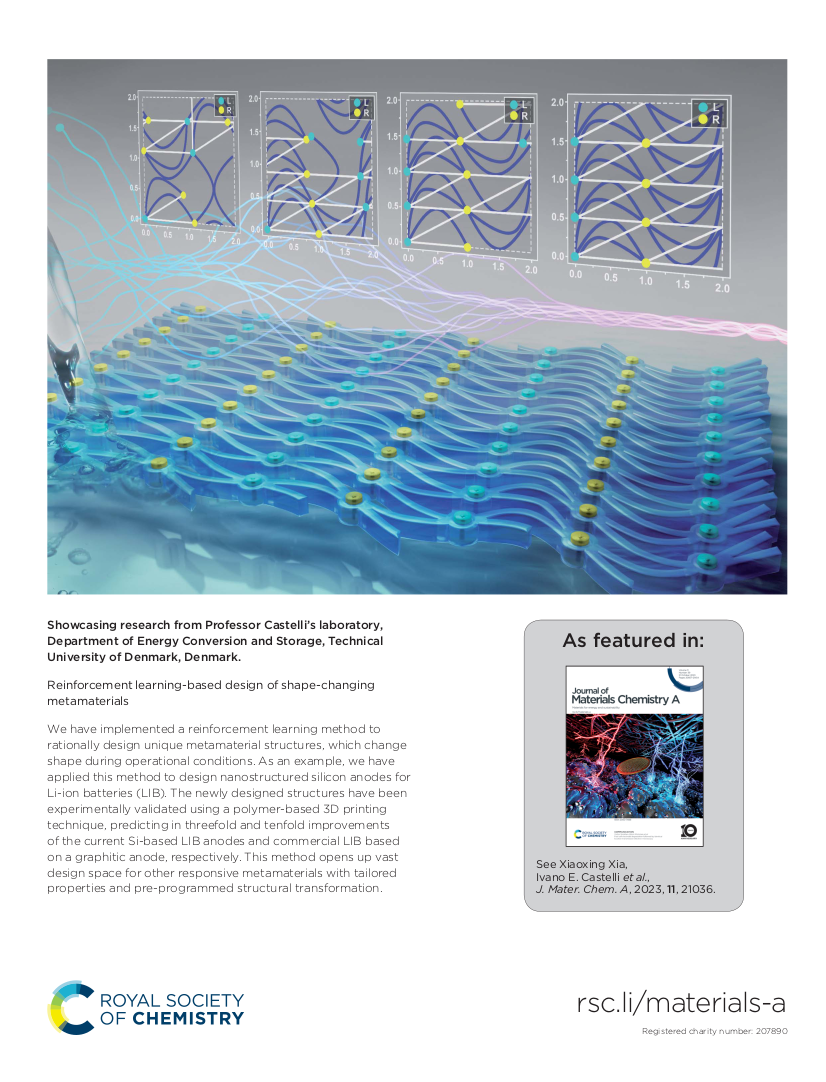 Reinforcement Learning-based Design of Shape-changing Metamaterials, S. B. Oliva, F. T. Bölle, X. Xia, and I. E. Castelli, J. Mater. Chem. A 11, 21036 (2023).
Reinforcement Learning-based Design of Shape-changing Metamaterials, S. B. Oliva, F. T. Bölle, X. Xia, and I. E. Castelli, J. Mater. Chem. A 11, 21036 (2023).
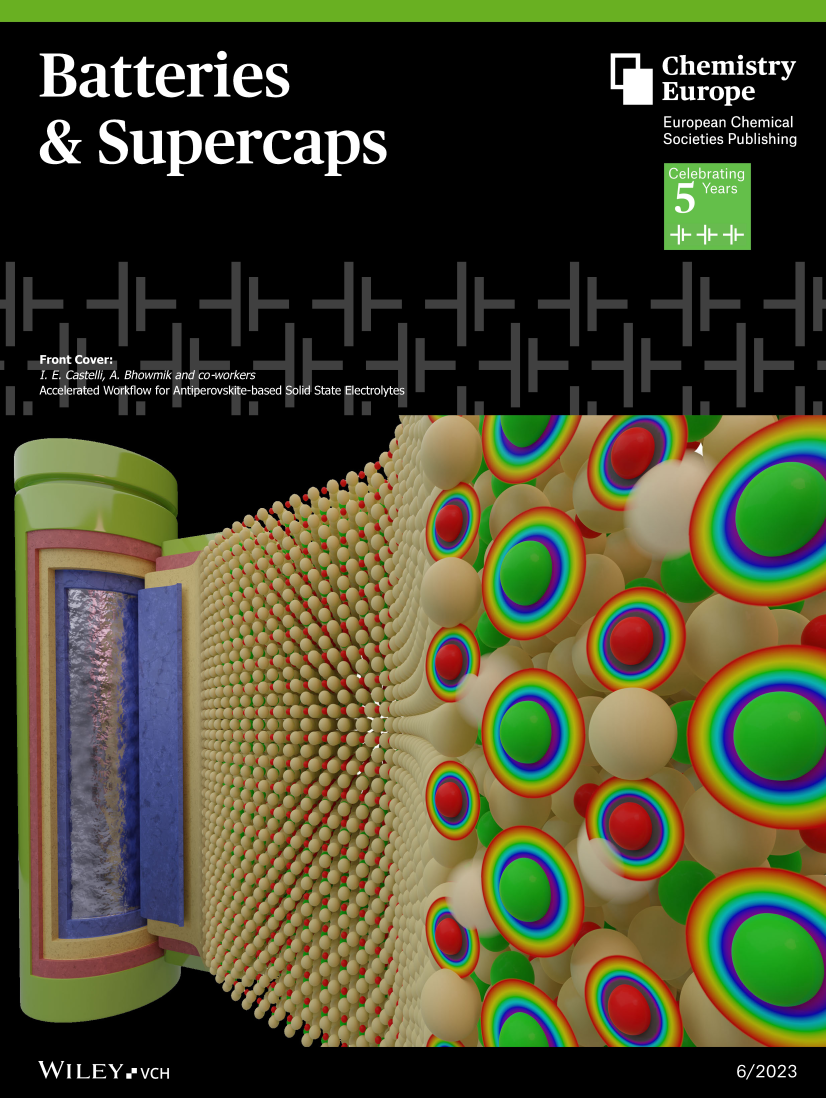 Accelerated Workflow for Antiperovskite-based Solid State Electrolytes, B. H. Sjølin, P. B. Jørgensen, A. Fedrigucci, T. Vegge, A. Bhowmik, I. E. Castelli, Batteries & Supercaps 2023, e202300041 (2023).
Accelerated Workflow for Antiperovskite-based Solid State Electrolytes, B. H. Sjølin, P. B. Jørgensen, A. Fedrigucci, T. Vegge, A. Bhowmik, I. E. Castelli, Batteries & Supercaps 2023, e202300041 (2023).
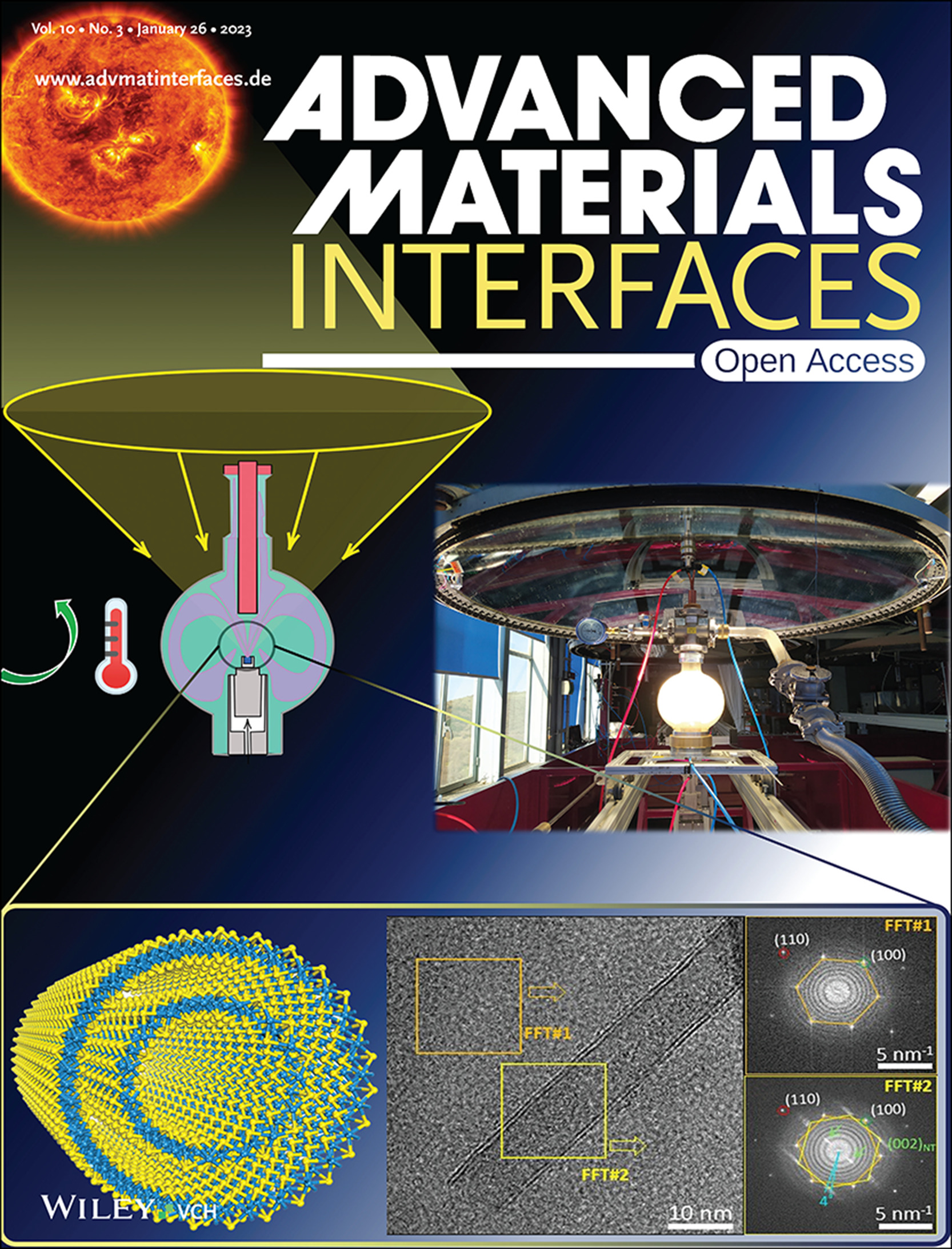 Synthesis of the Elusive Doublewall Nanotubes and Nanocones(Horns) of MoS2 via Focused Solar Ablation, T. Barbe, R. Rosentsveig, O. Brontvein, M. B. Sreedhara, K. Zheng, F. Bataille, A. Vossier, G. Flamant, I. E. Castelli, J. M. Gordon, and R. Tenne, Adv. Mater. Interfaces 2023, 202201930 (2023).
Synthesis of the Elusive Doublewall Nanotubes and Nanocones(Horns) of MoS2 via Focused Solar Ablation, T. Barbe, R. Rosentsveig, O. Brontvein, M. B. Sreedhara, K. Zheng, F. Bataille, A. Vossier, G. Flamant, I. E. Castelli, J. M. Gordon, and R. Tenne, Adv. Mater. Interfaces 2023, 202201930 (2023).
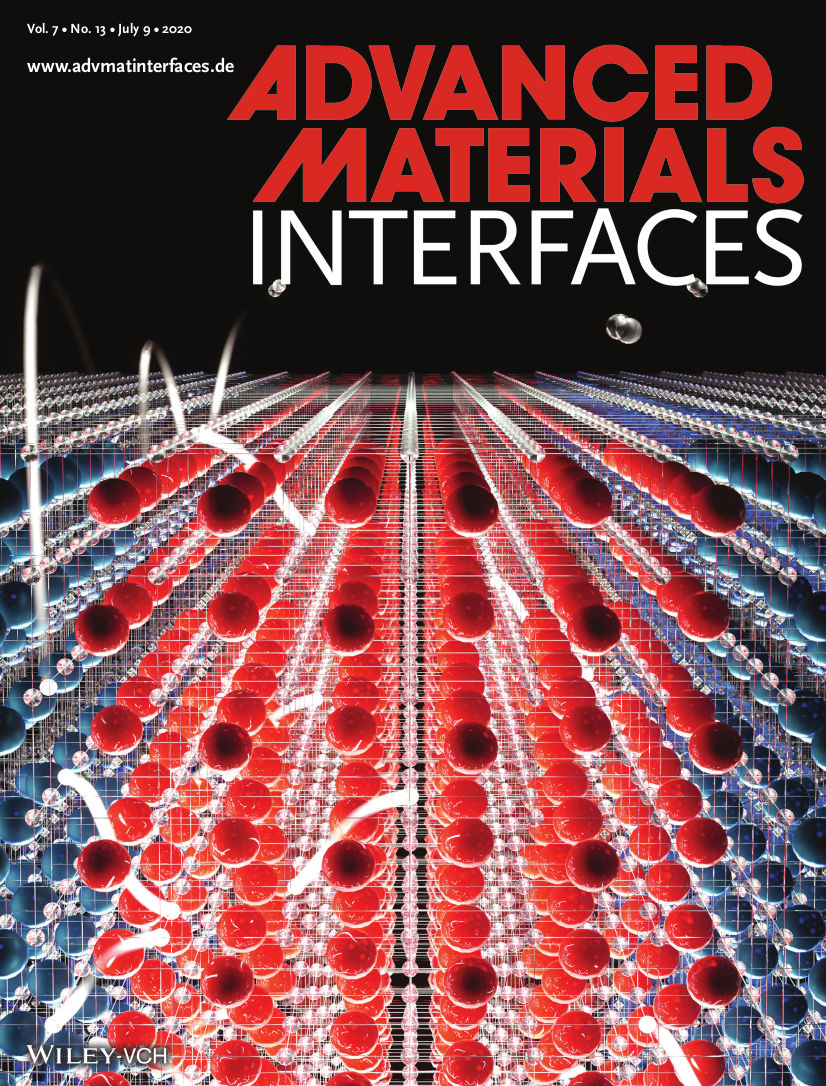 Metastability at Defective Metal Oxide Interfaces and Nanoconfined Structures, V. Esposito and I. E. Castelli, Adv. Mater. Interfaces 2020, 1902090 (2020).
Metastability at Defective Metal Oxide Interfaces and Nanoconfined Structures, V. Esposito and I. E. Castelli, Adv. Mater. Interfaces 2020, 1902090 (2020).
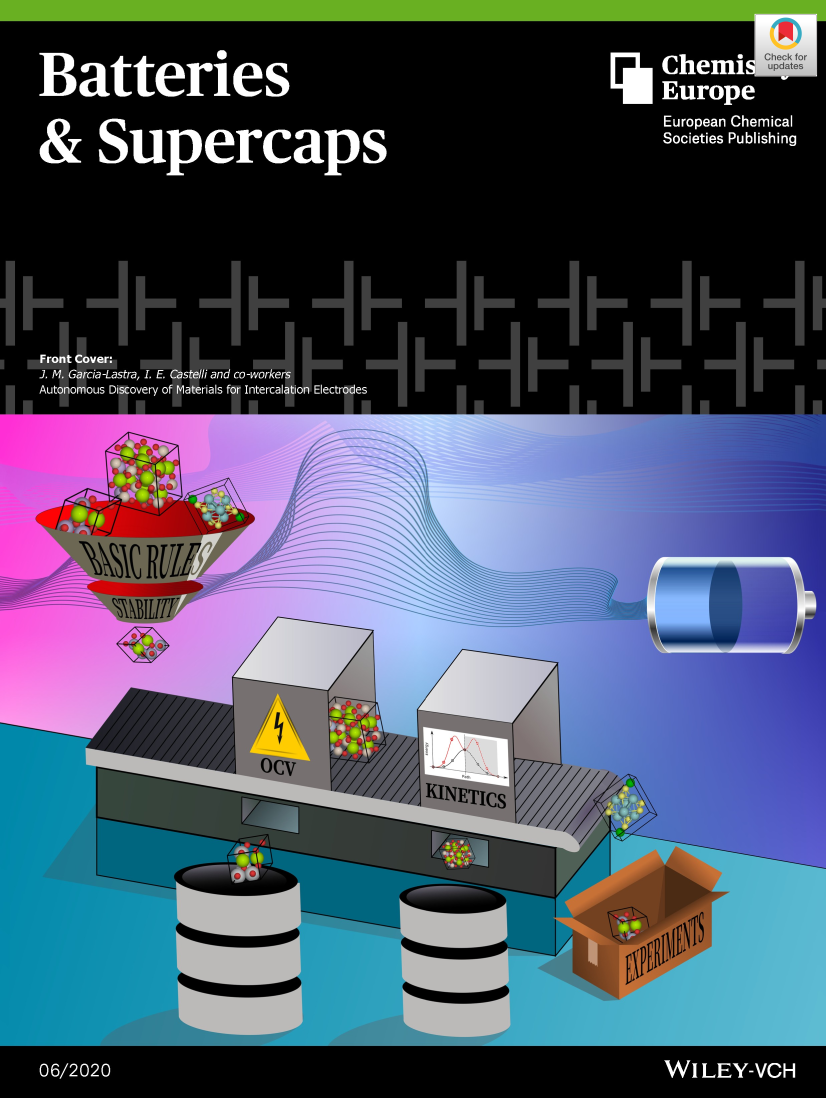 Autonomous Discovery of Materials for Intercalation Electrodes, F. T. Bölle, N. R. Mathiesen, A. J. Nielsen, T. Vegge, J. M. García-Lastra, and I. E. Castelli, Batteries & Supercaps 3, 488 (2020).
Autonomous Discovery of Materials for Intercalation Electrodes, F. T. Bölle, N. R. Mathiesen, A. J. Nielsen, T. Vegge, J. M. García-Lastra, and I. E. Castelli, Batteries & Supercaps 3, 488 (2020).
 source: nature.com
source: nature.com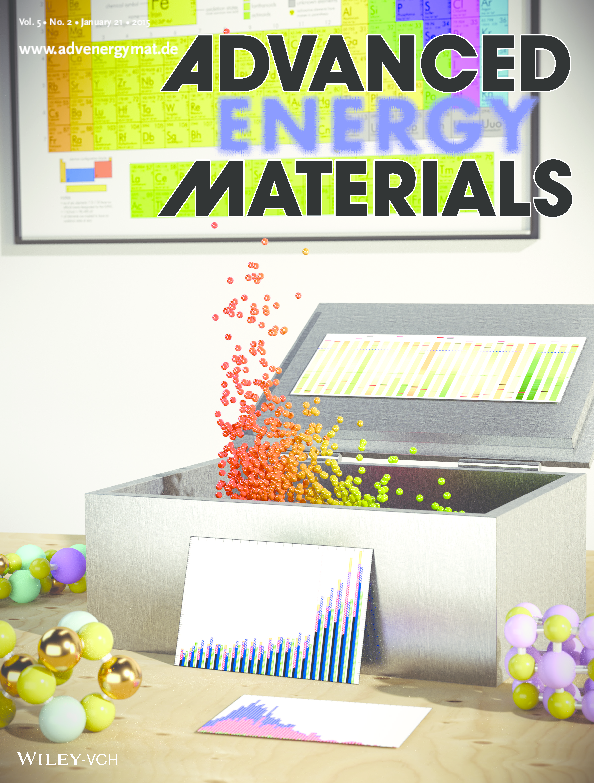 New Light Harvesting Materials Using Accurate and Efficient Bandgap Calculations, I. E. Castelli, F. Hüser, M. Pandey, H. Li, K. S. Thygesen, B. Seger, A. Jain, K. A. Persson, G. Ceder, and K. W. Jacobsen, Advanced Energy Materials 5, 1400915 (2015).
New Light Harvesting Materials Using Accurate and Efficient Bandgap Calculations, I. E. Castelli, F. Hüser, M. Pandey, H. Li, K. S. Thygesen, B. Seger, A. Jain, K. A. Persson, G. Ceder, and K. W. Jacobsen, Advanced Energy Materials 5, 1400915 (2015).
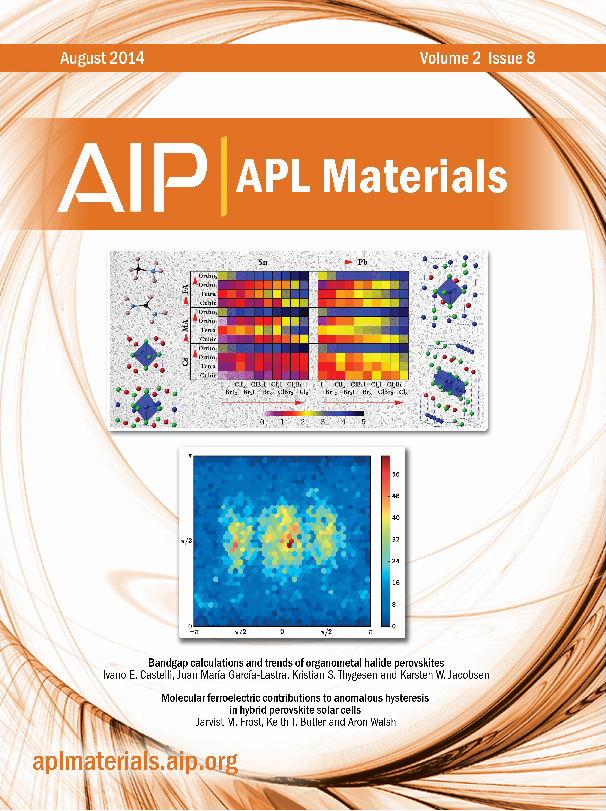 Bandgap Calculations and Trends of Organometal Halide Perovskites, I. E. Castelli, J. M. García-Lastra, K. S. Thygesen, and K. W. Jacobsen, APL Materials 2, 081514 (2014).
Bandgap Calculations and Trends of Organometal Halide Perovskites, I. E. Castelli, J. M. García-Lastra, K. S. Thygesen, and K. W. Jacobsen, APL Materials 2, 081514 (2014).
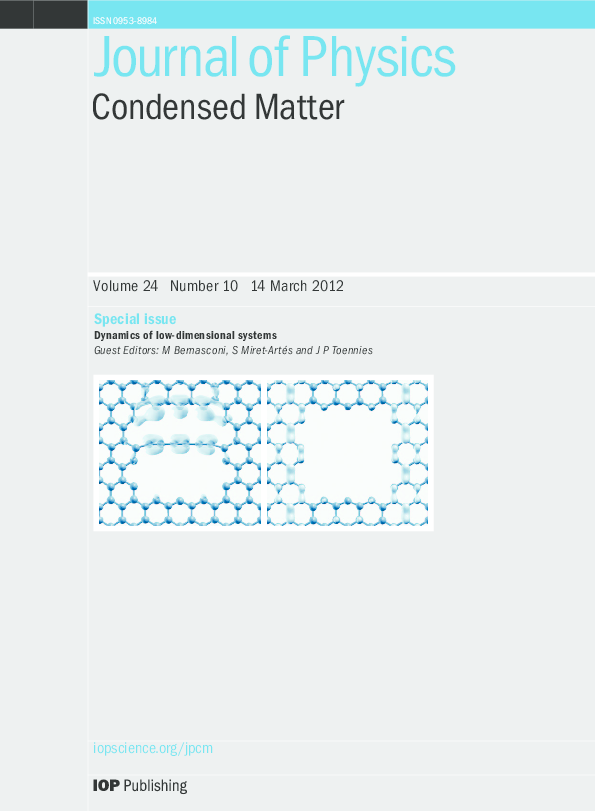 Carbon sp Chains in Graphene Nanoholes, I. E. Castelli, N. Ferri, G. Onida, and N. Manini, J. Phys.: Condens. Matter 24, 104019 (2012).
Carbon sp Chains in Graphene Nanoholes, I. E. Castelli, N. Ferri, G. Onida, and N. Manini, J. Phys.: Condens. Matter 24, 104019 (2012).
 High electrically conducting current collector ceramic material for Solid Oxides Fuel Cells, inventors: M. Kato, K. Ukai, K. Okada, K. Miura, K. W. Jacobsen, J. Rossmeisl, M. Björketun, I. E. Castelli, T. Olsen. Publication number (granted patent): EP 3211703 B1 (2019).
High electrically conducting current collector ceramic material for Solid Oxides Fuel Cells, inventors: M. Kato, K. Ukai, K. Okada, K. Miura, K. W. Jacobsen, J. Rossmeisl, M. Björketun, I. E. Castelli, T. Olsen. Publication number (granted patent): EP 3211703 B1 (2019).
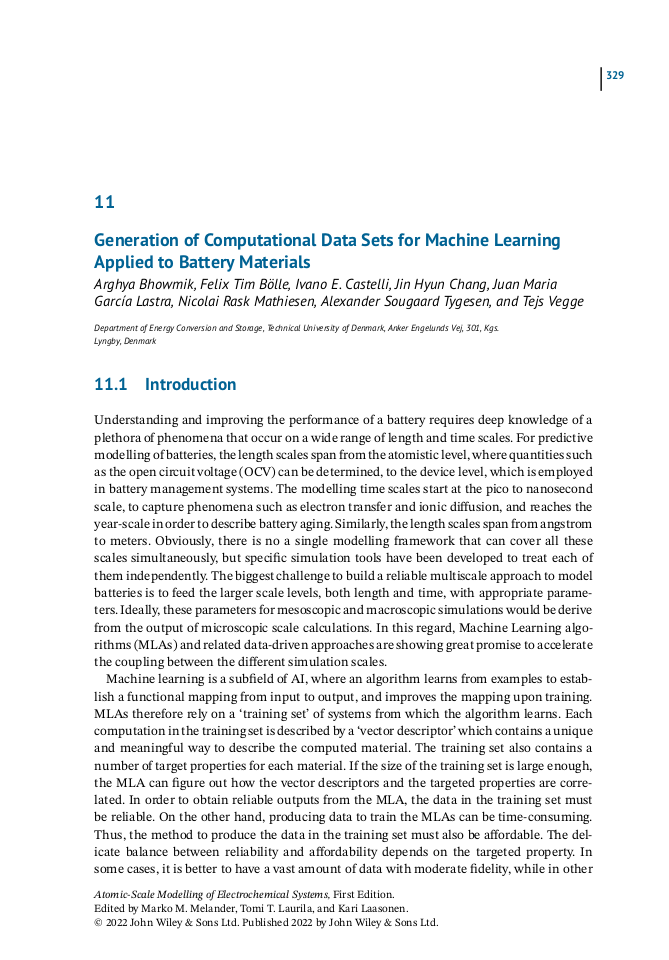 Generation of Computational Data Sets for Machine Learning Applied to Battery Materials, A. Bhowmik, F. T. Bölle, I. E. Castelli, J. H. Chang, J. M. García-Lastra, N. R. Mathiesen, A. S. Tygesen, and T. Vegge, in Atomic‐Scale Modelling of Electrochemical Systems, ed. M. M. Melander, T. T. Laurila, and K. Laasonen, Wiley, September 2021.
Generation of Computational Data Sets for Machine Learning Applied to Battery Materials, A. Bhowmik, F. T. Bölle, I. E. Castelli, J. H. Chang, J. M. García-Lastra, N. R. Mathiesen, A. S. Tygesen, and T. Vegge, in Atomic‐Scale Modelling of Electrochemical Systems, ed. M. M. Melander, T. T. Laurila, and K. Laasonen, Wiley, September 2021.
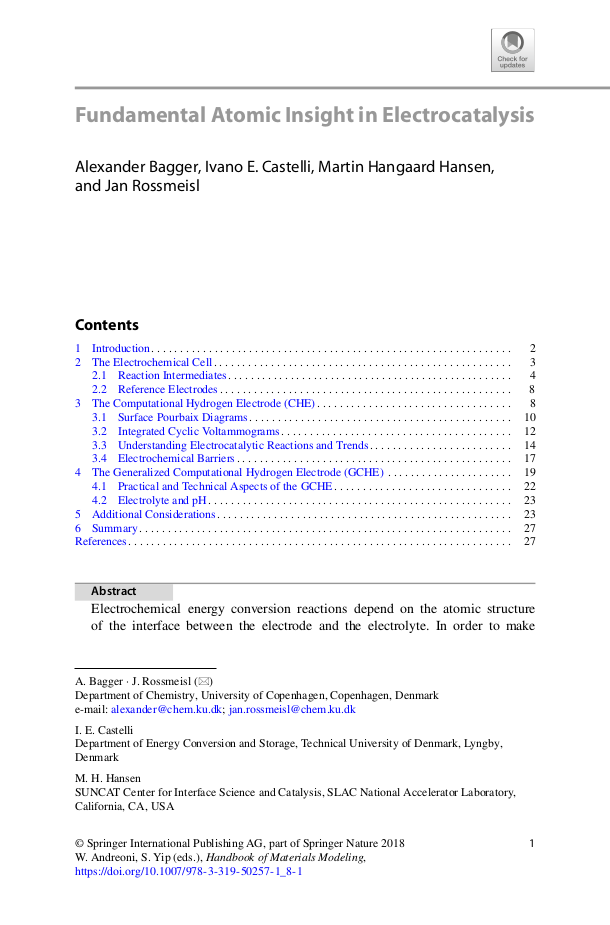 Fundamental Atomic Insight in Electrocatalysis, A. Bagger, I. E. Castelli, M. H. Hansen, and J. Rossmeisl, in Handbook of Materials Modeling, ed. W. Andreoni and S. Yip, Springer, July 2018.
Fundamental Atomic Insight in Electrocatalysis, A. Bagger, I. E. Castelli, M. H. Hansen, and J. Rossmeisl, in Handbook of Materials Modeling, ed. W. Andreoni and S. Yip, Springer, July 2018.
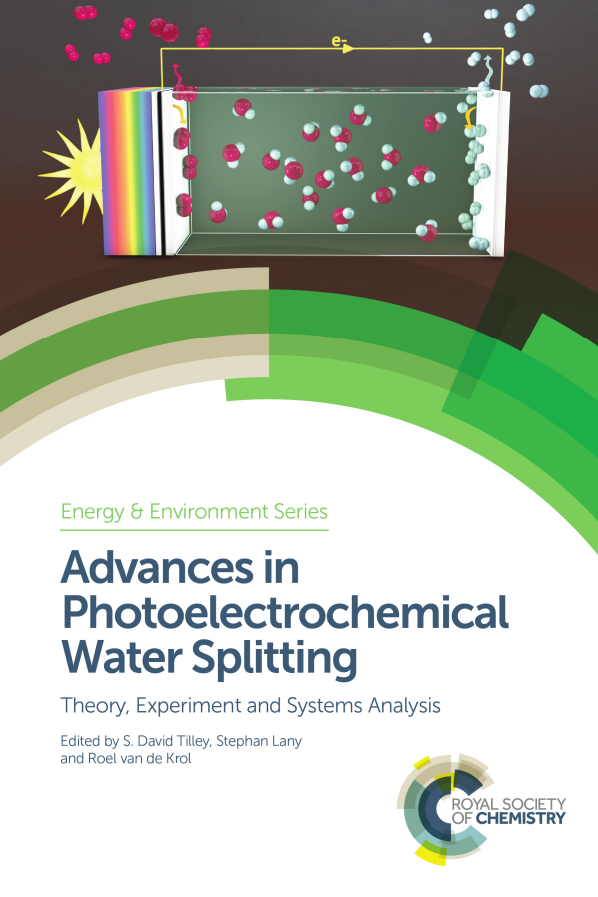 Computational Screening of Light-Absorbing Materials for Photoelectrochemical Water Splitting, I. E. Castelli, K. Kuhar, M. Pandey, and K. W. Jacobsen, in Advances in Photoelectrochemical Water Splitting, ed. D. Tilley, S. Lany and R, van de Krol, RSC Editor, February 2018.
Computational Screening of Light-Absorbing Materials for Photoelectrochemical Water Splitting, I. E. Castelli, K. Kuhar, M. Pandey, and K. W. Jacobsen, in Advances in Photoelectrochemical Water Splitting, ed. D. Tilley, S. Lany and R, van de Krol, RSC Editor, February 2018.
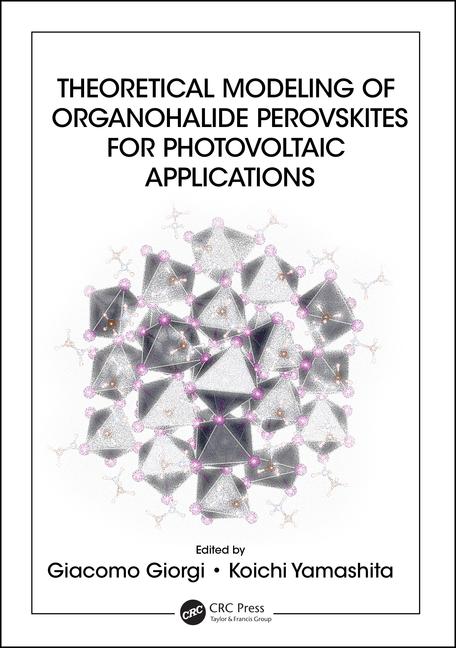 Computational High-throughput Screening for Solar Energy Materials, I. E. Castelli, K. S. Thygesen, and K. W. Jacobsen, in Theoretical Modeling of Organohalide Perovskites for Photovoltaic Applications, ed. G. Giorgi and K. Yamashita, CRC Press, June 2017.
Computational High-throughput Screening for Solar Energy Materials, I. E. Castelli, K. S. Thygesen, and K. W. Jacobsen, in Theoretical Modeling of Organohalide Perovskites for Photovoltaic Applications, ed. G. Giorgi and K. Yamashita, CRC Press, June 2017.
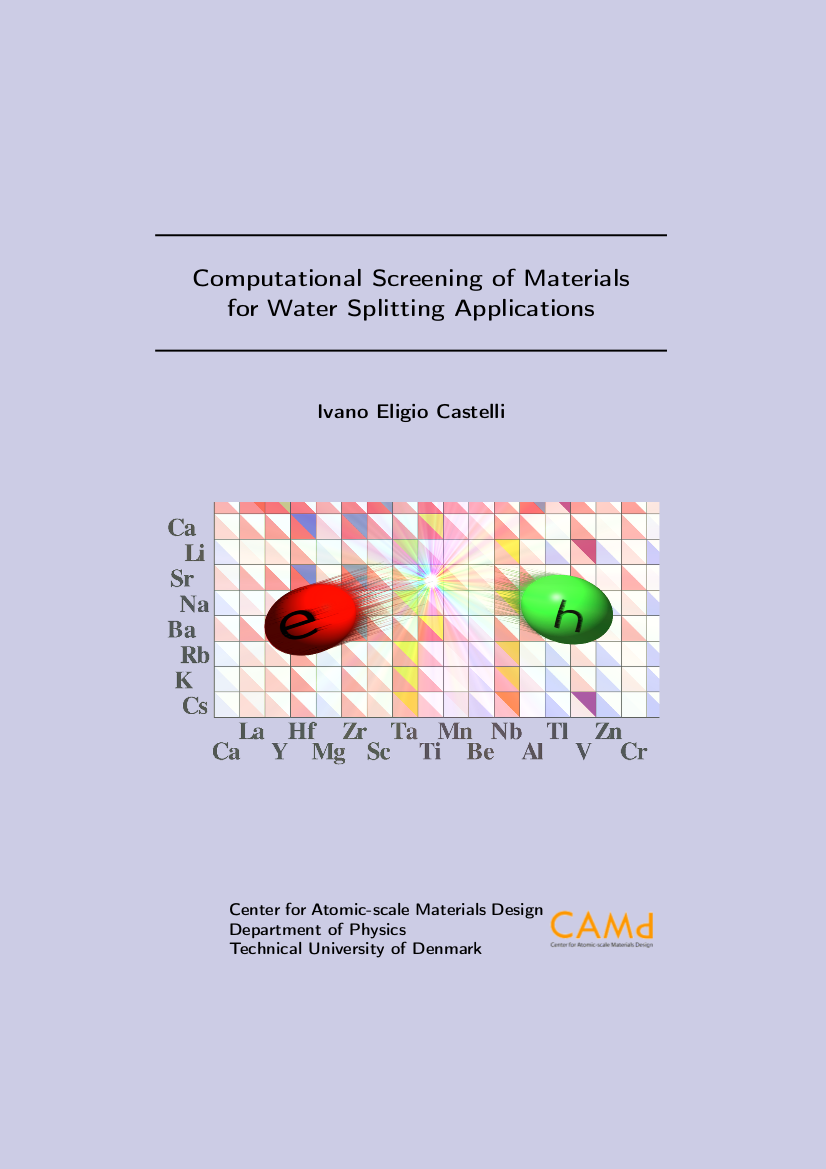 Computational Screening of Materials for Water Splitting Applications, I. E. Castelli, Ph.D. thesis (2013).
Computational Screening of Materials for Water Splitting Applications, I. E. Castelli, Ph.D. thesis (2013).
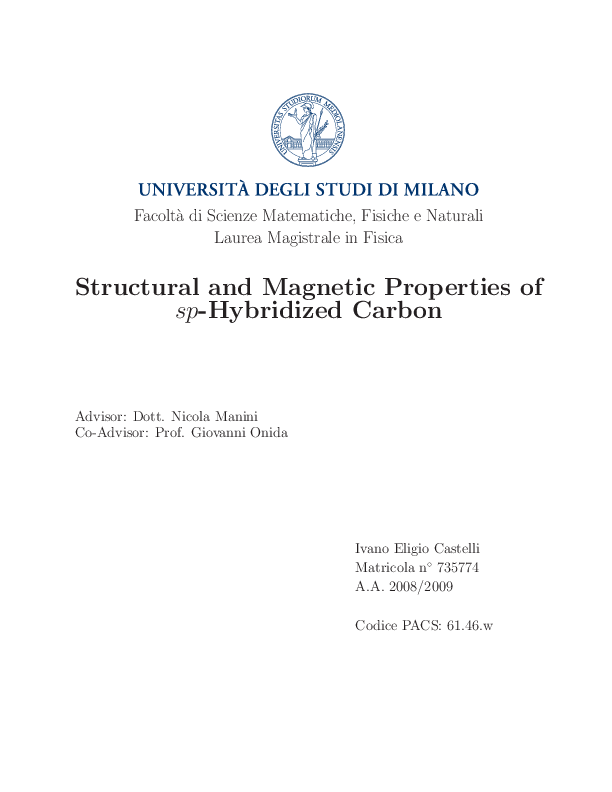 Structural and Magnetic Properties of sp-Hybridized Carbon, I. E. Castelli, Master thesis (2010).
Structural and Magnetic Properties of sp-Hybridized Carbon, I. E. Castelli, Master thesis (2010).
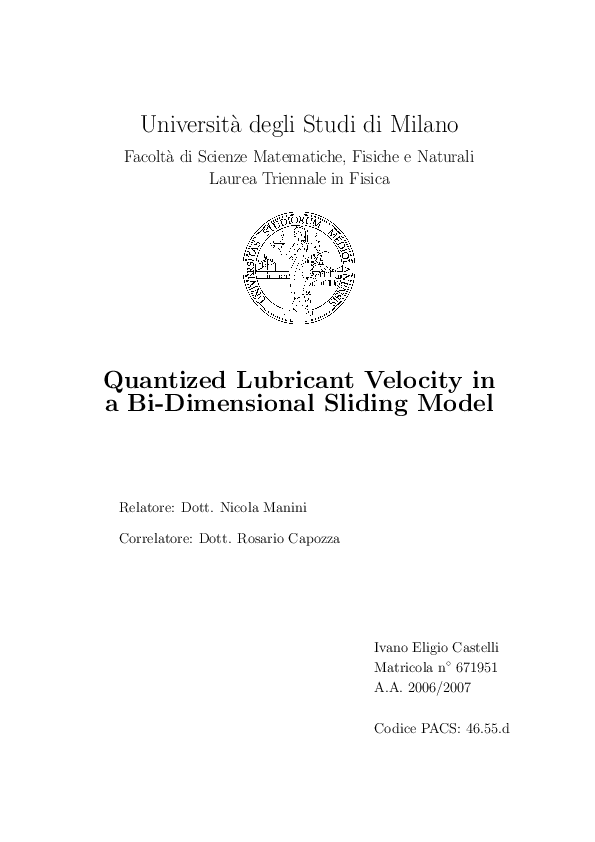 Quantized Lubricant Velocity in a Bi-Dimensional Sliding Model, I. E. Castelli, Bachelor thesis (2007).
Quantized Lubricant Velocity in a Bi-Dimensional Sliding Model, I. E. Castelli, Bachelor thesis (2007).
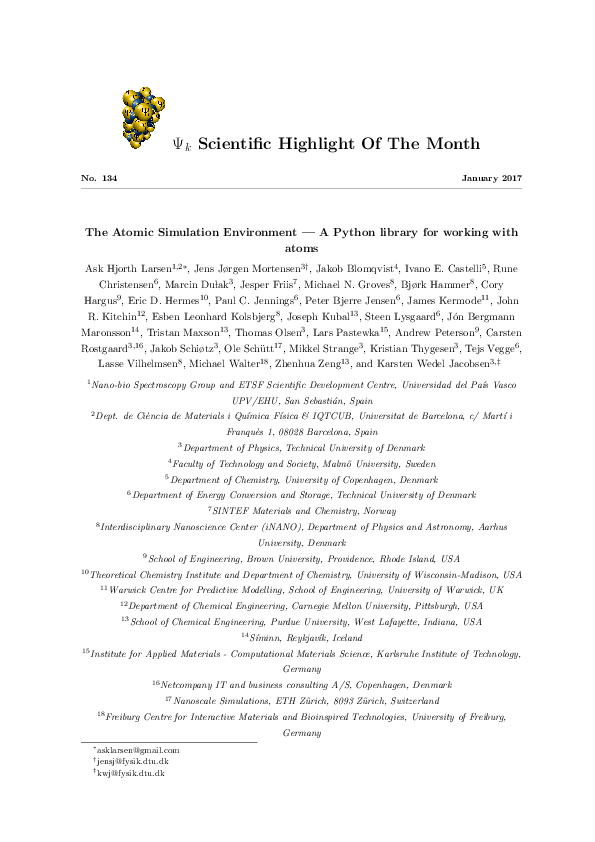 The Atomic Simulation Environment - A Python library for working with atoms, A. H. Larsen, J. J. Mortensen, J. Blomqvist, I. E. Castelli, et al., Ψk Scientic Highlight Of The Month No. 134, January 2017.
The Atomic Simulation Environment - A Python library for working with atoms, A. H. Larsen, J. J. Mortensen, J. Blomqvist, I. E. Castelli, et al., Ψk Scientic Highlight Of The Month No. 134, January 2017.








